Number and Place Value Worksheets
Compare Numbers to 20
Year groups: 1
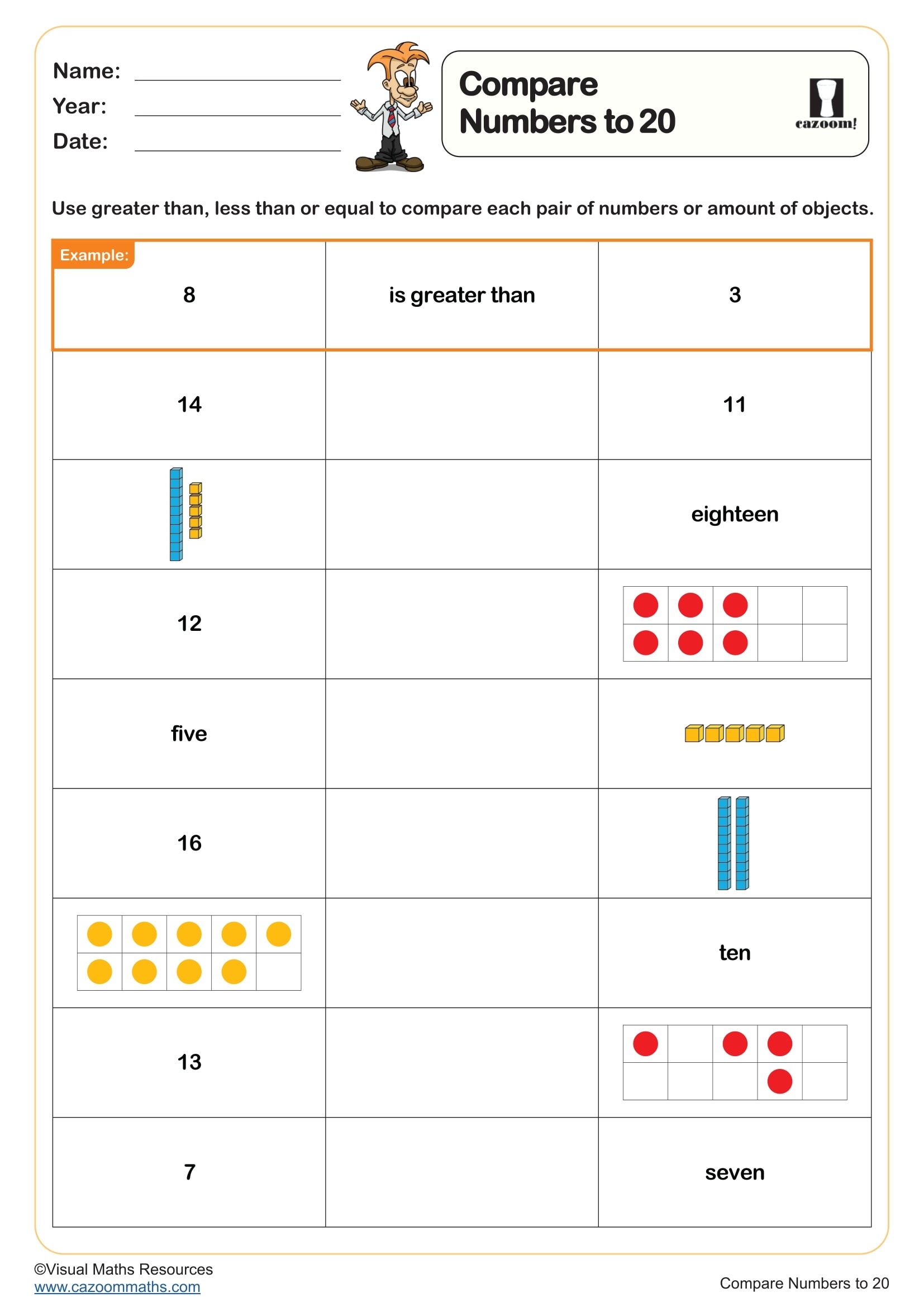
Comparing Numbers to 10
Year groups: 1
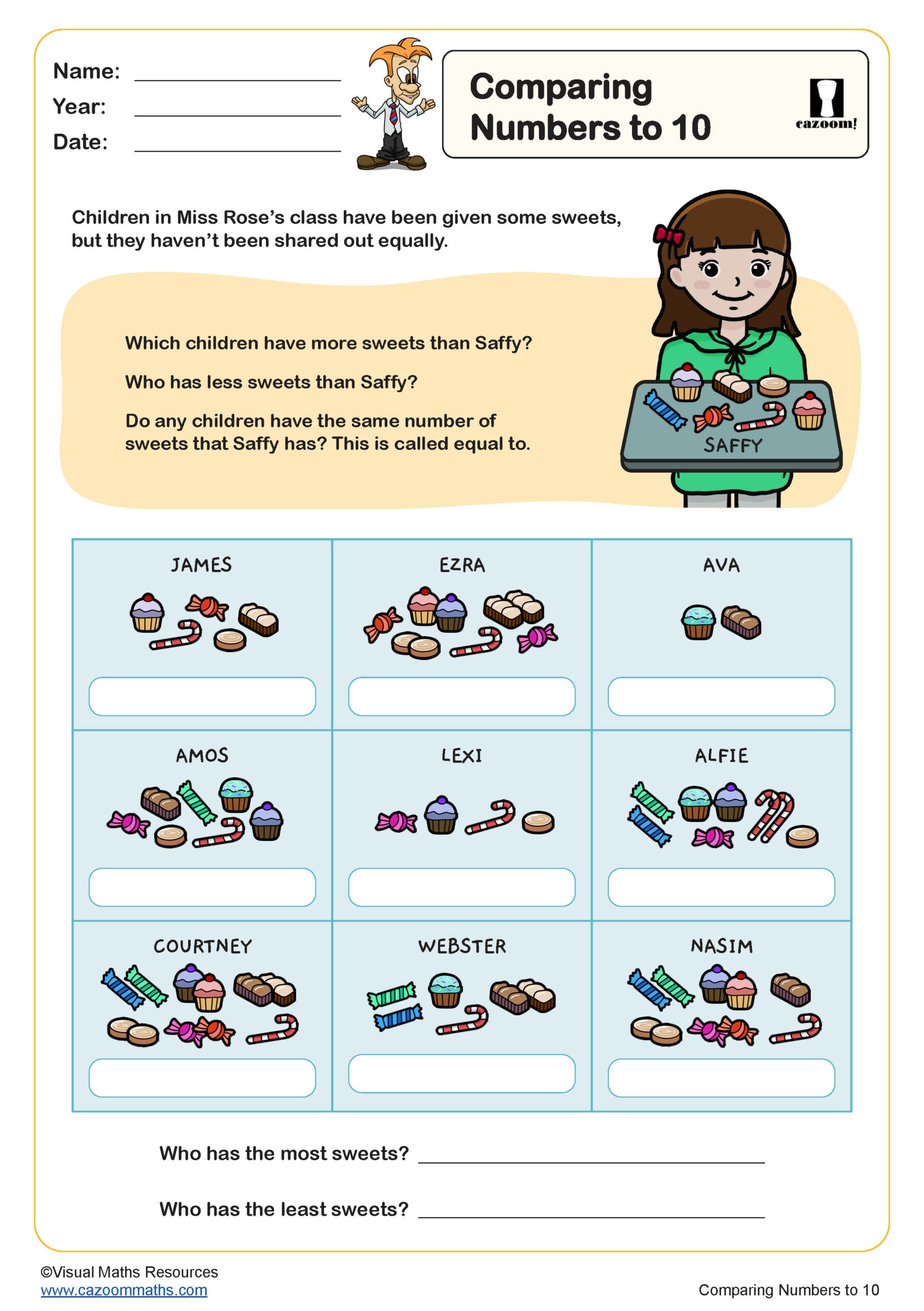
Count in 2s Maze
Year groups: 1
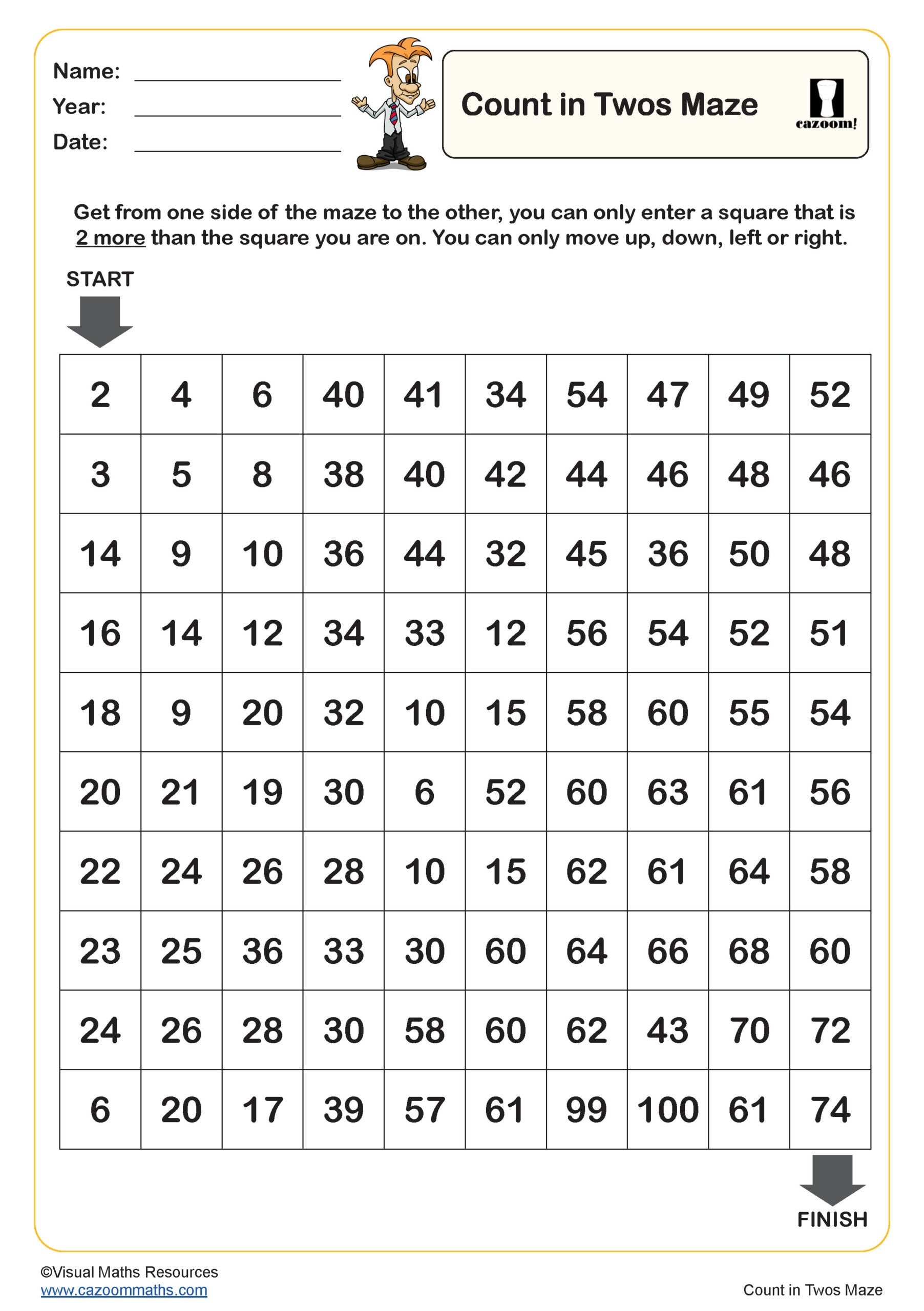
Count in 5s Maze
Year groups: 1
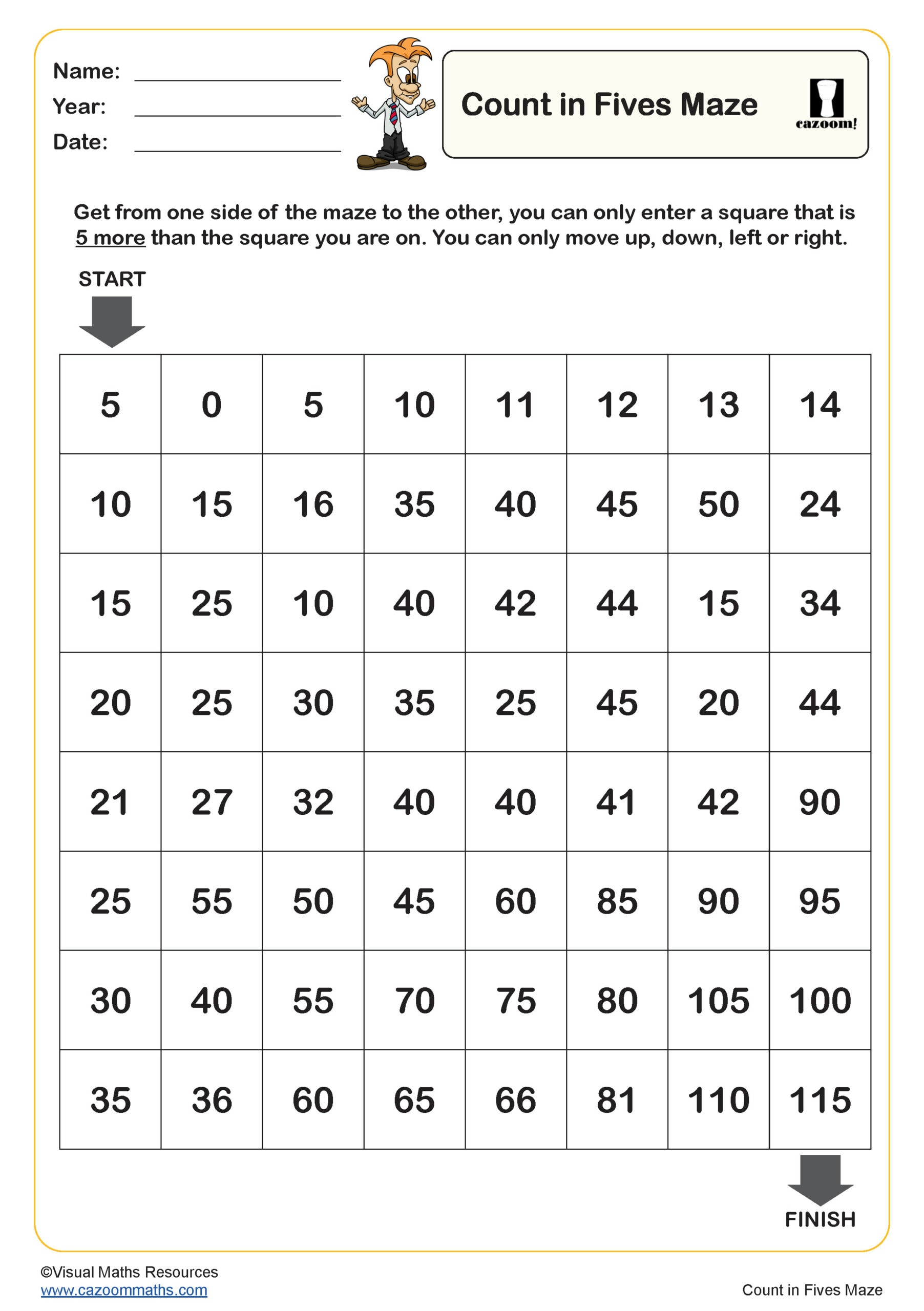
Count In Twos Maze (Odd Numbers)
Year groups: 1, 2
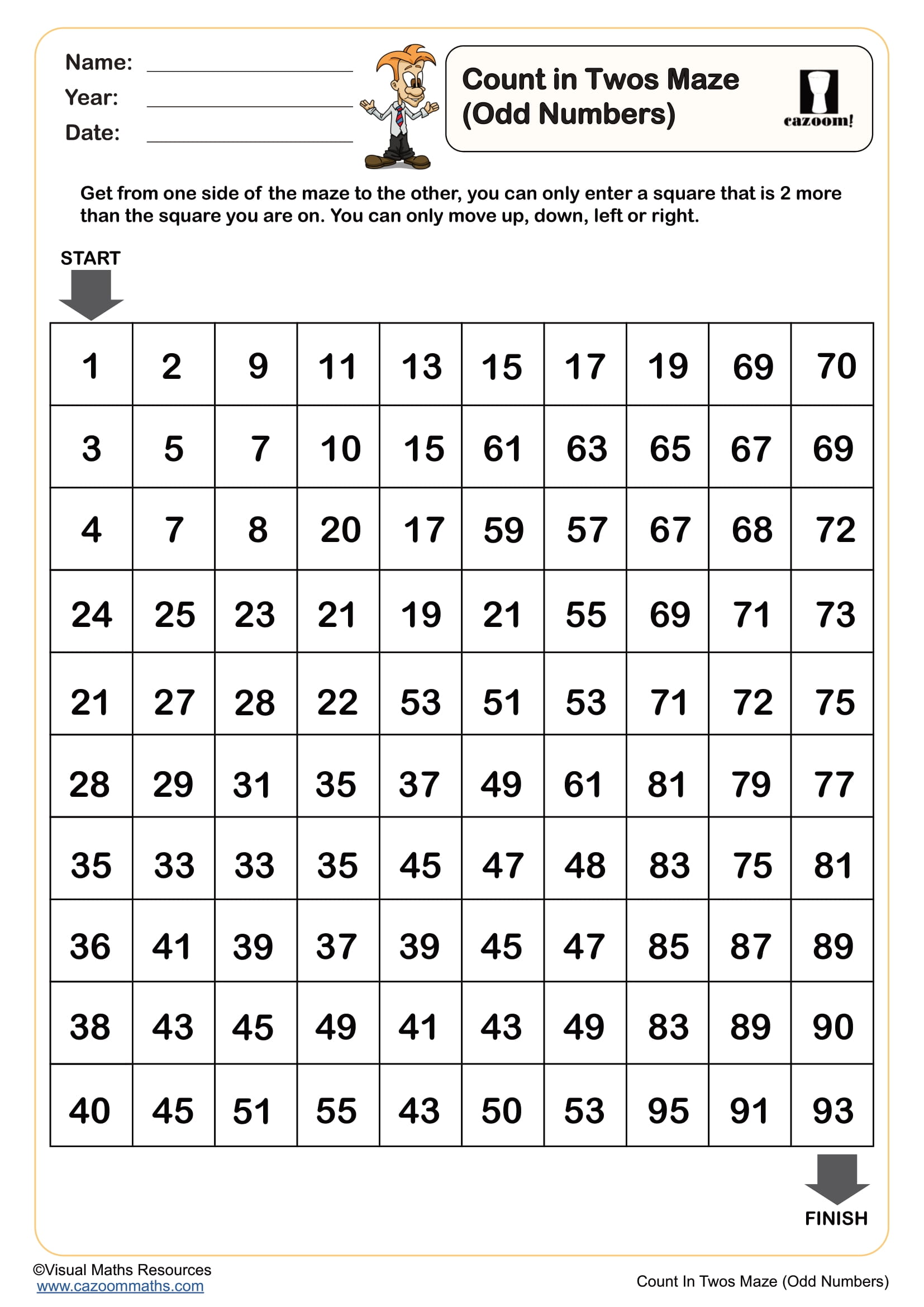
Counting Forwards and Counting Backwards
Year groups: 1
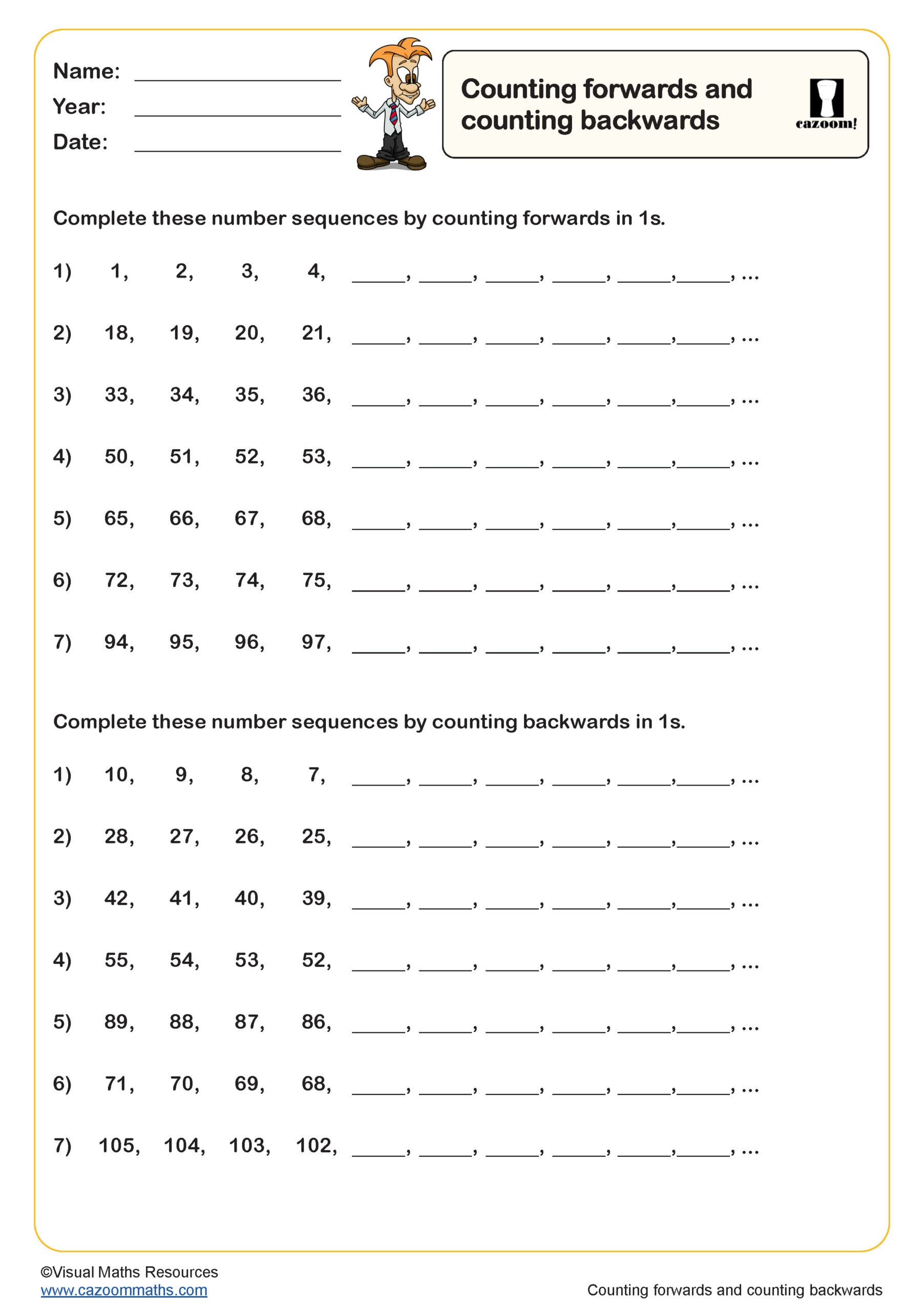
Counting Objects
Year groups: 1
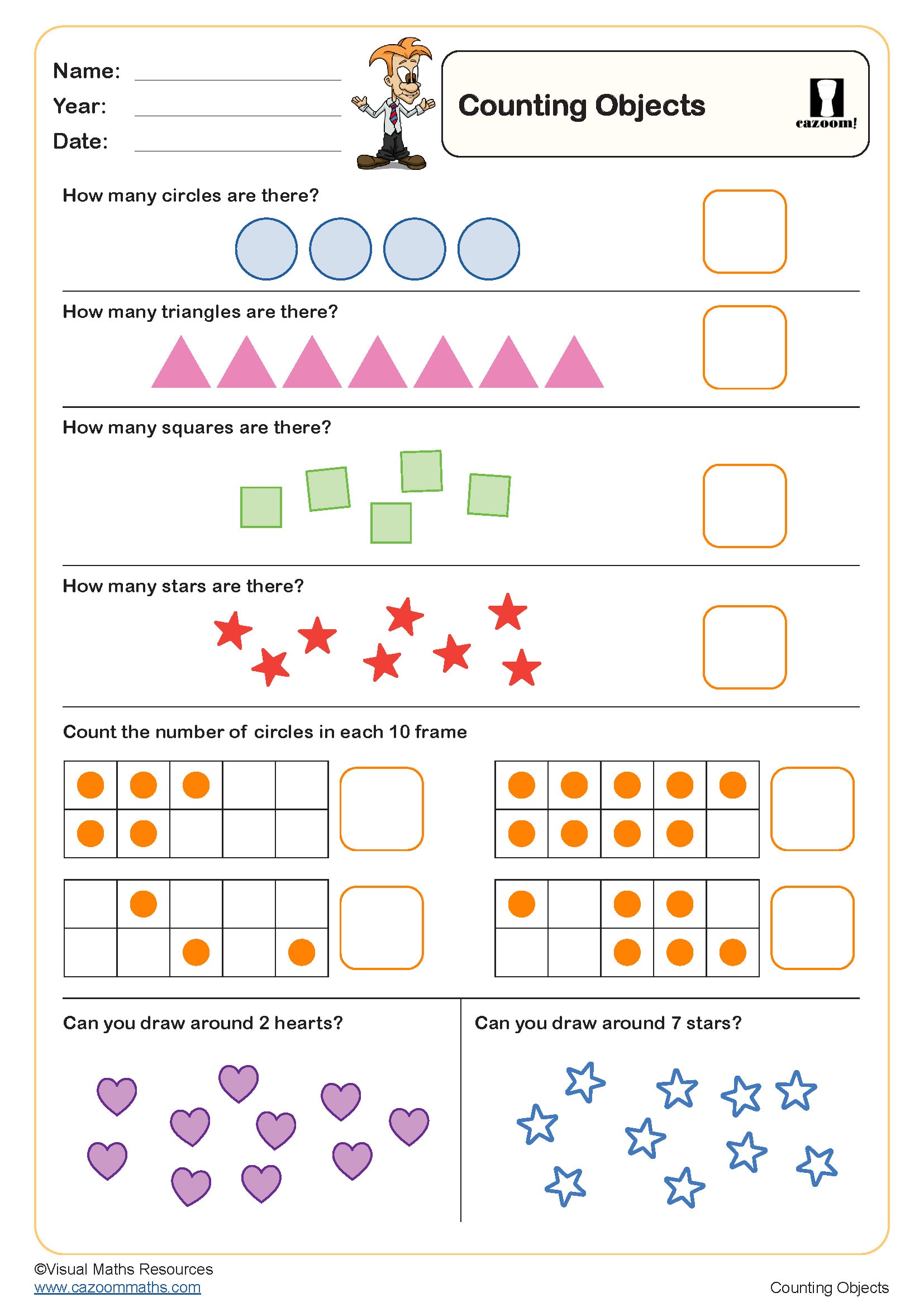
Numerals and Words (up to 10)
Year groups: 1
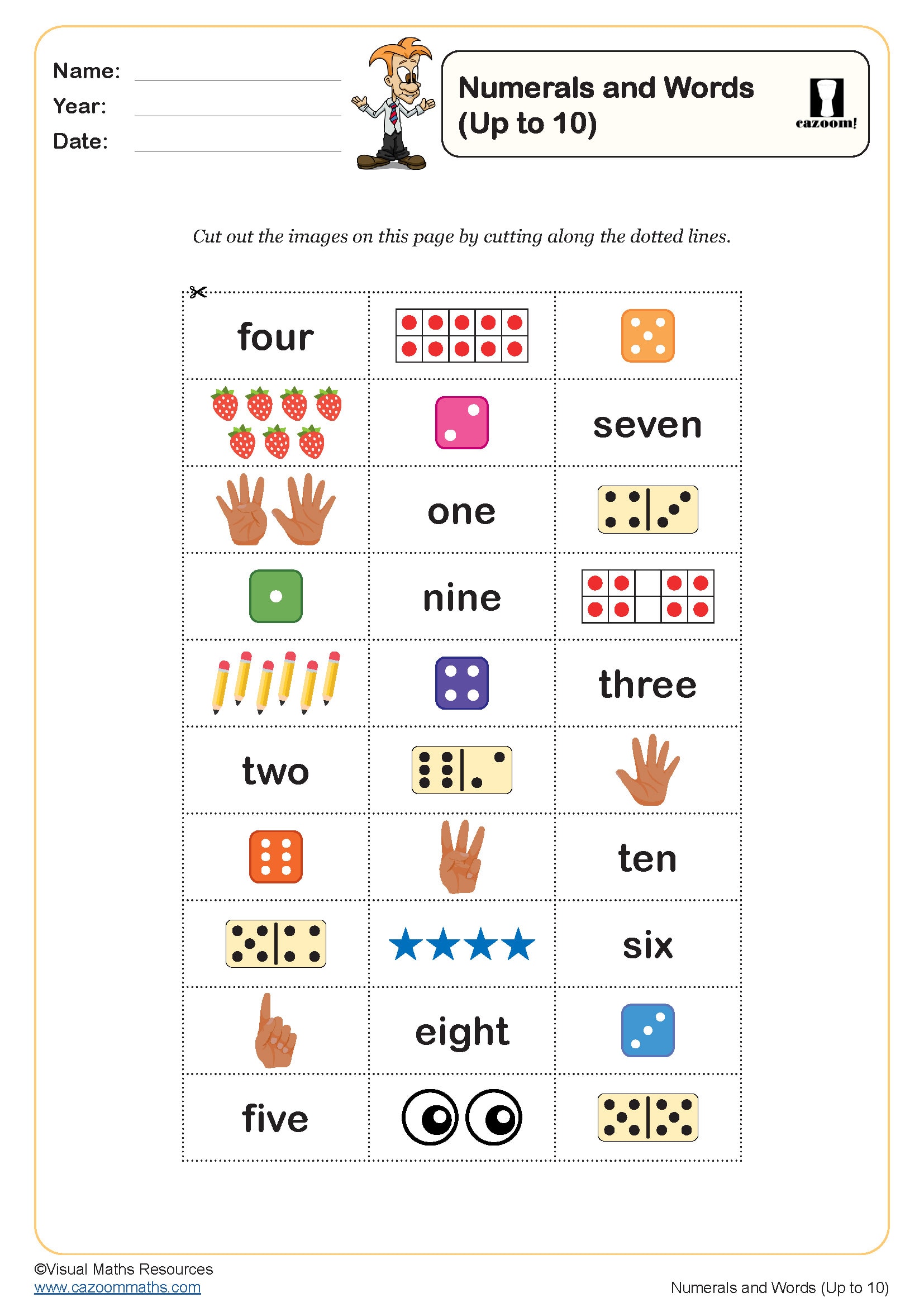
Numerals and Words (up to 20)
Year groups: 1
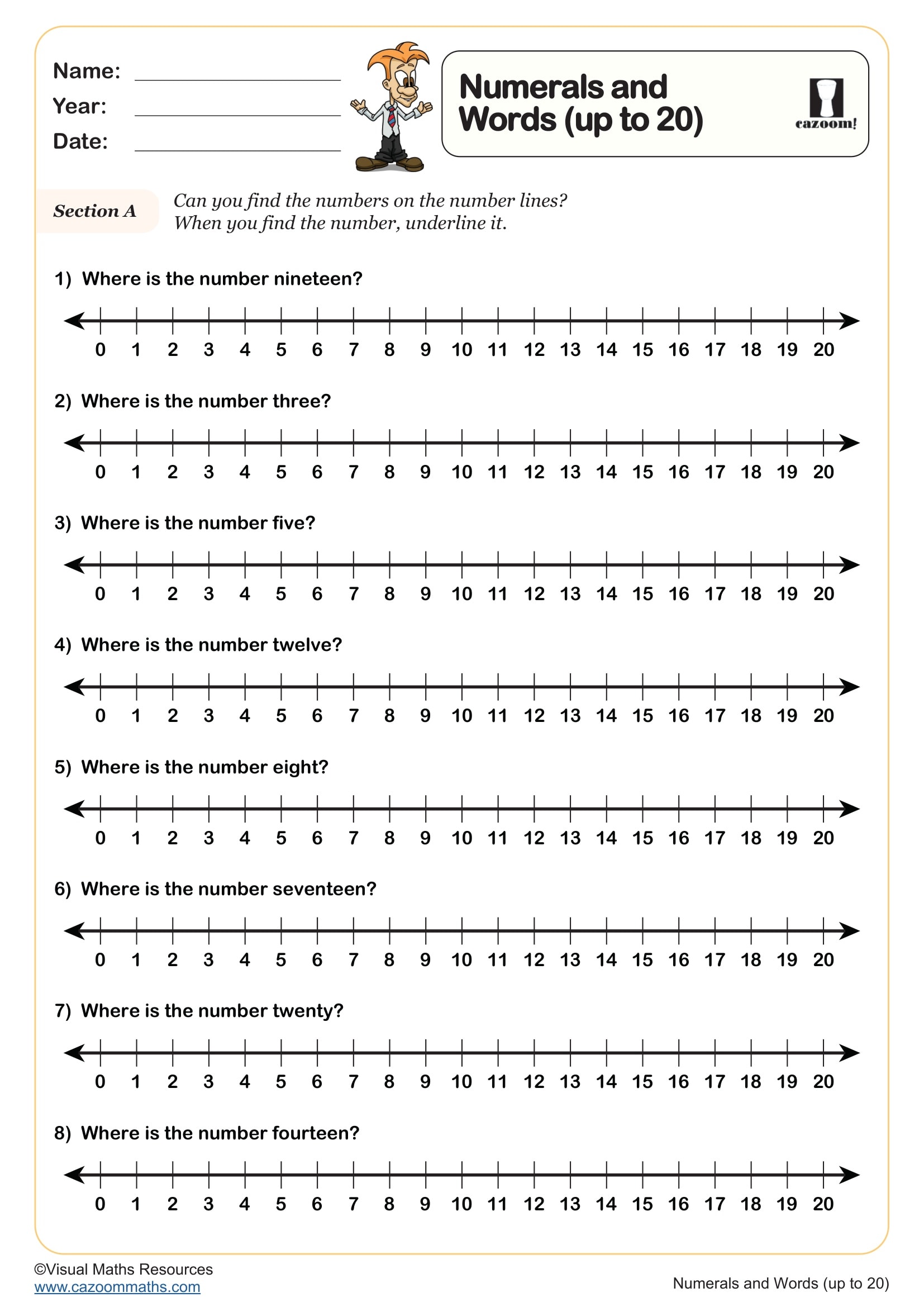
One More, One Less
Year groups: 1
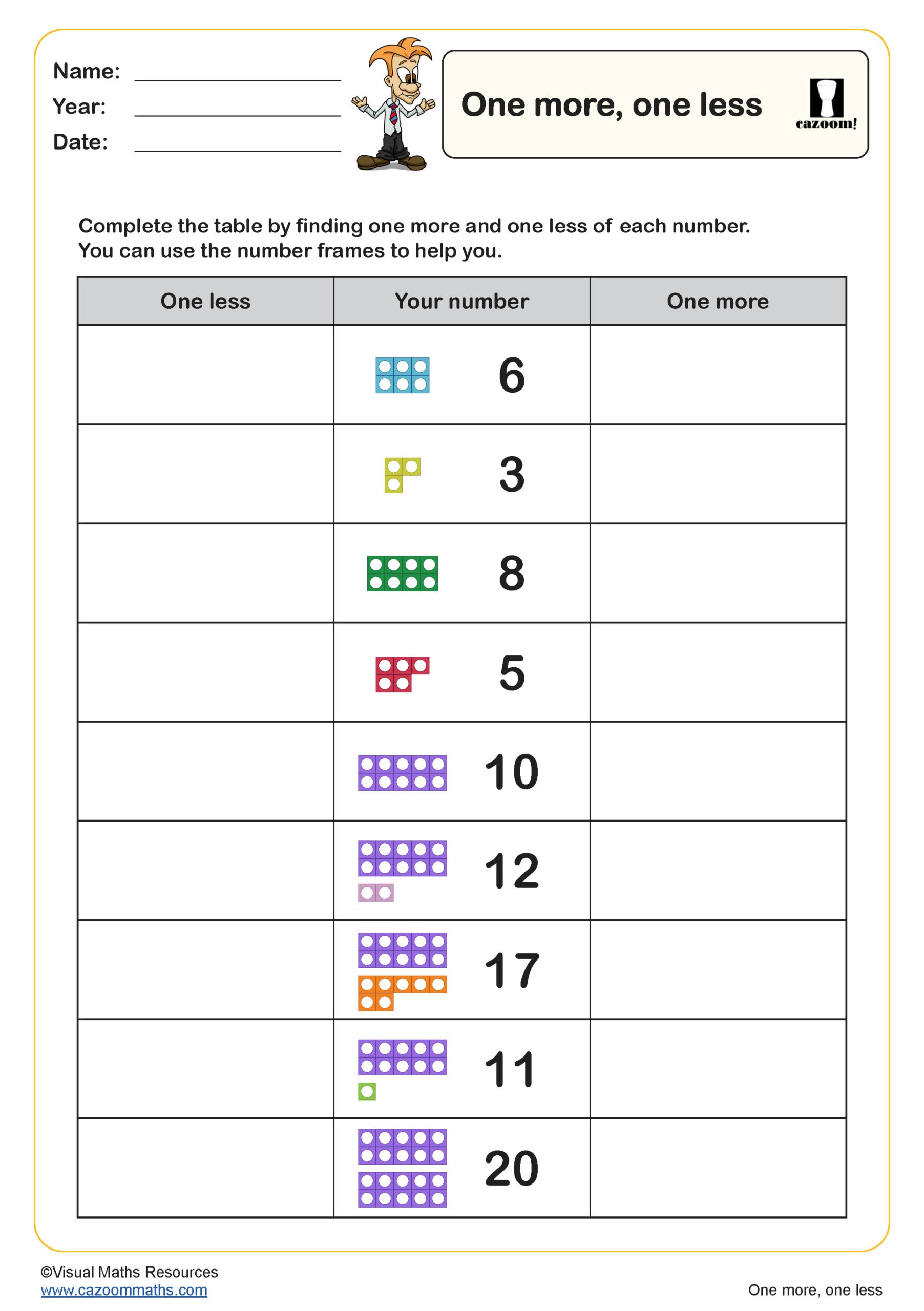
Skip Counting (count in 10s)
Year groups: 1
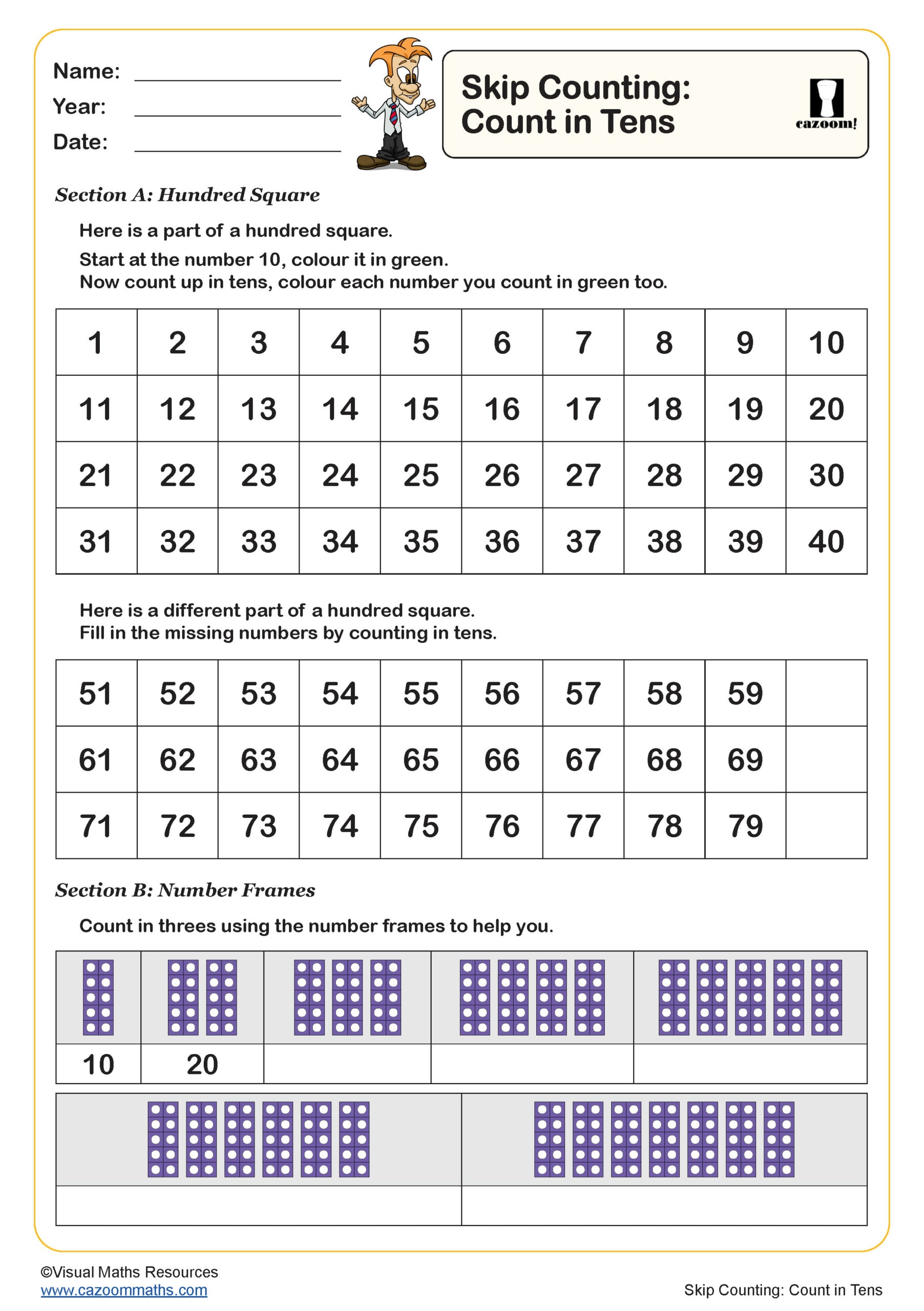
Skip Counting (count in 2s)
Year groups: 1
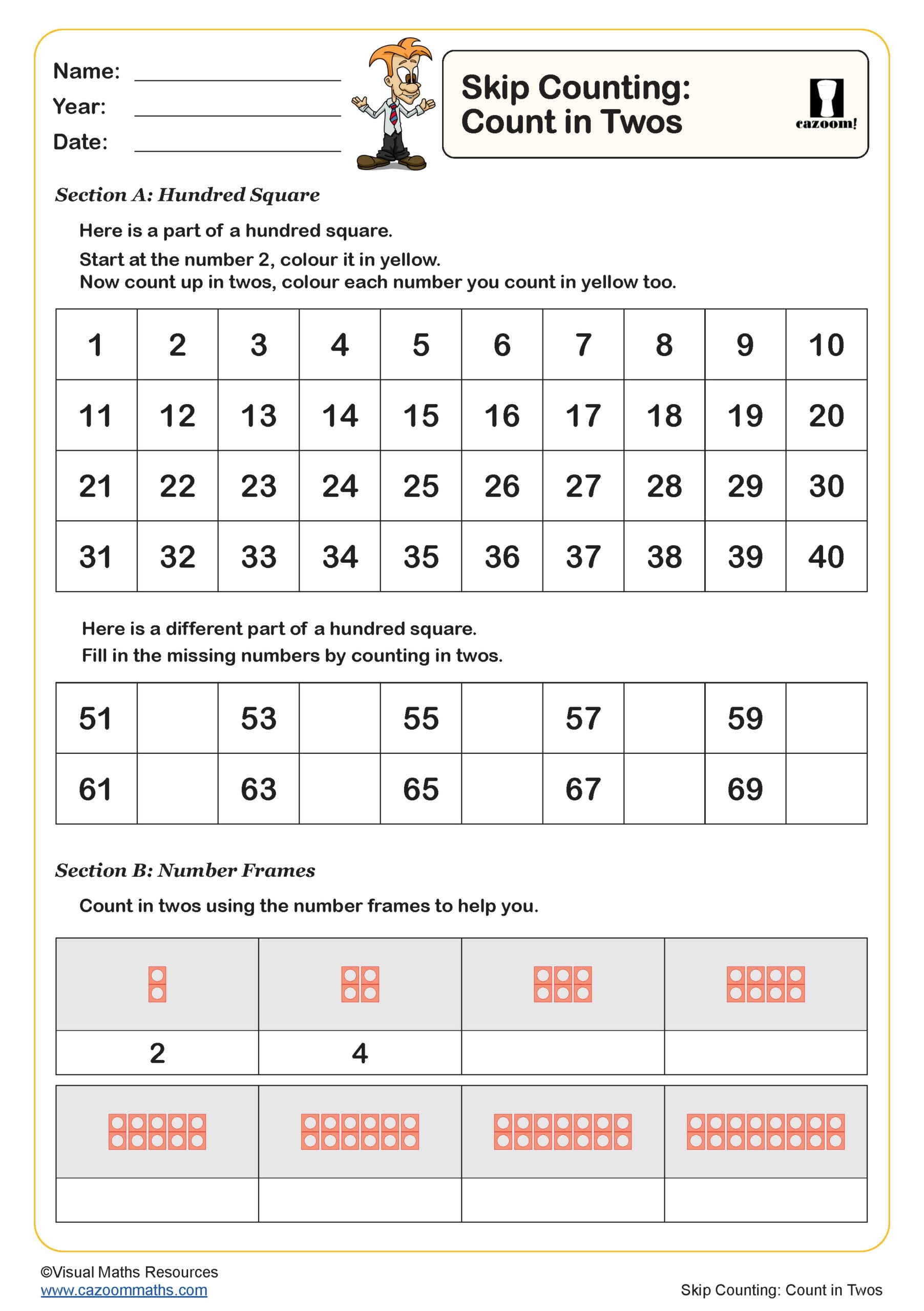
Skip Counting (count in 5s)
Year groups: 1
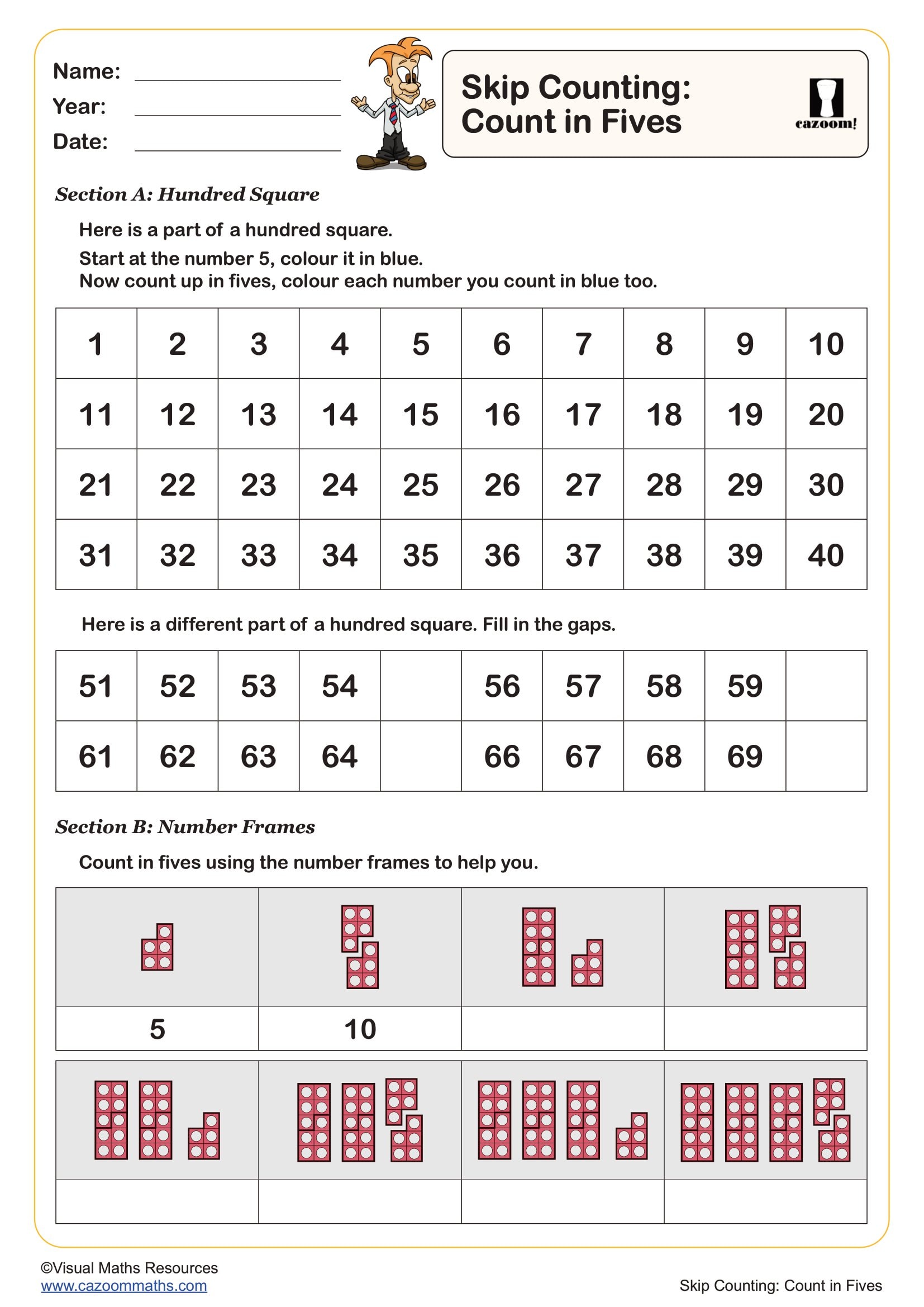
Skip Counting: Count In Twos (Odd Numbers)
Year groups: 1, 2
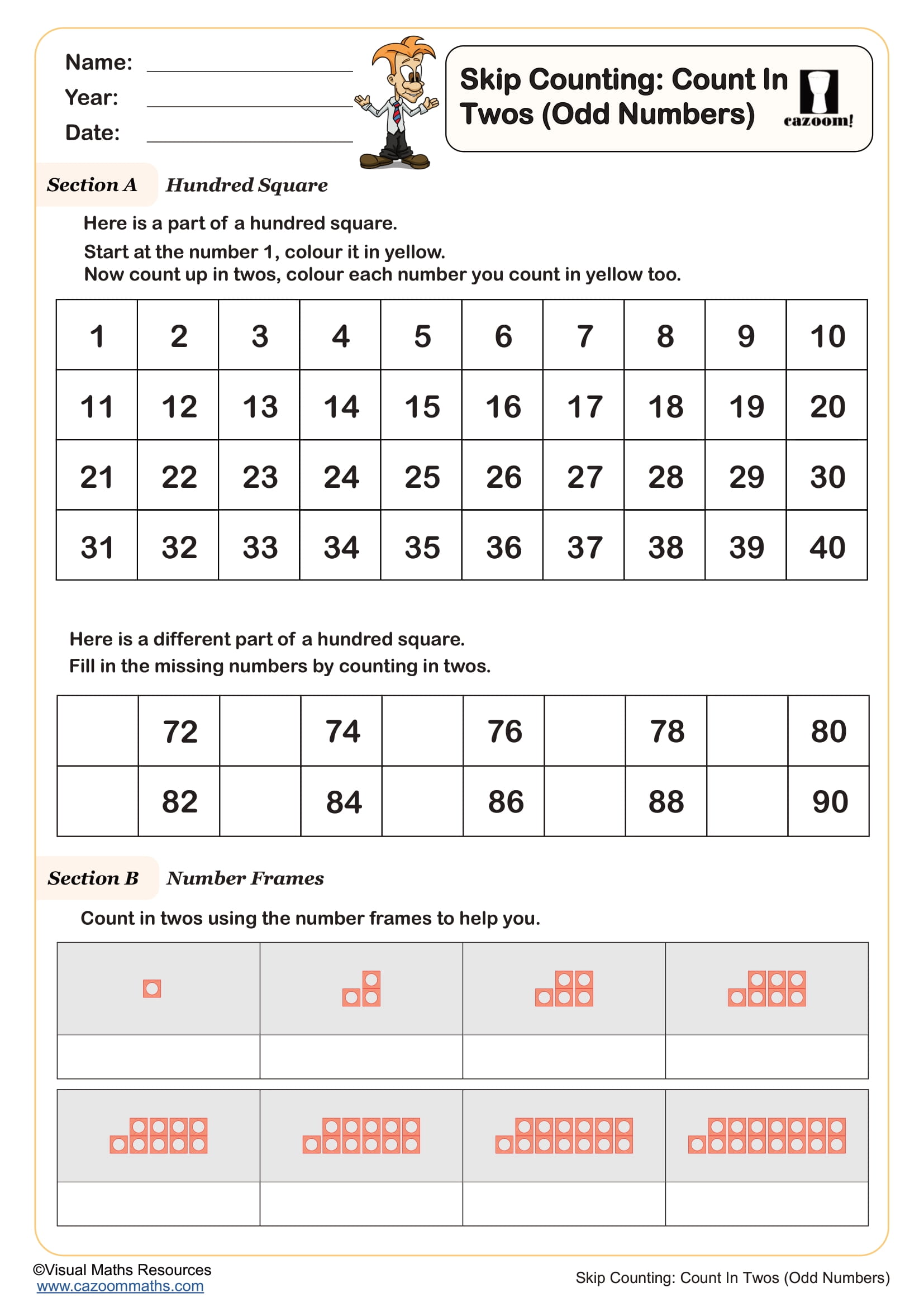
The Number Line (to 10)
Year groups: 1
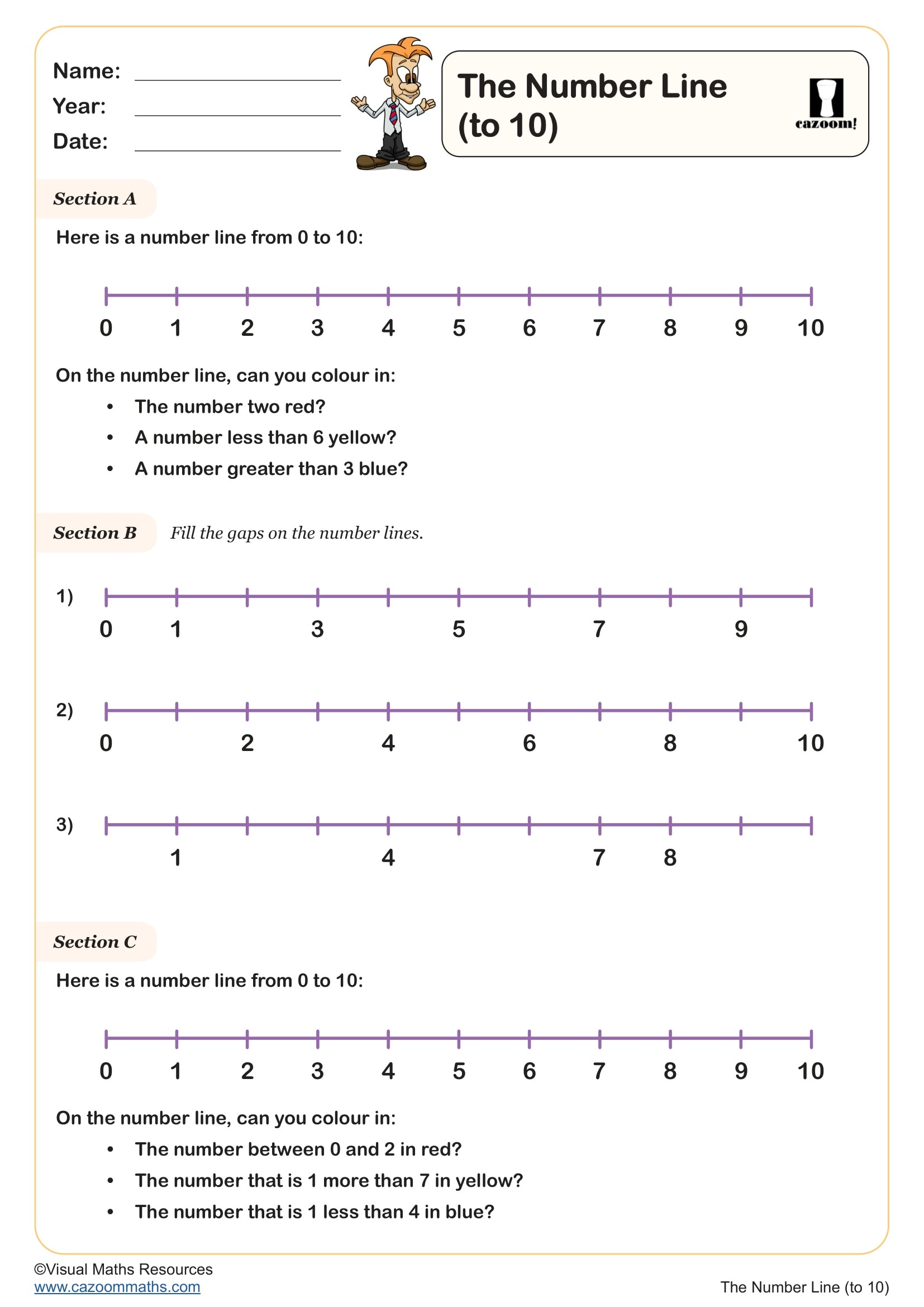
The Number Line (to 100)
Year groups: 1, 2
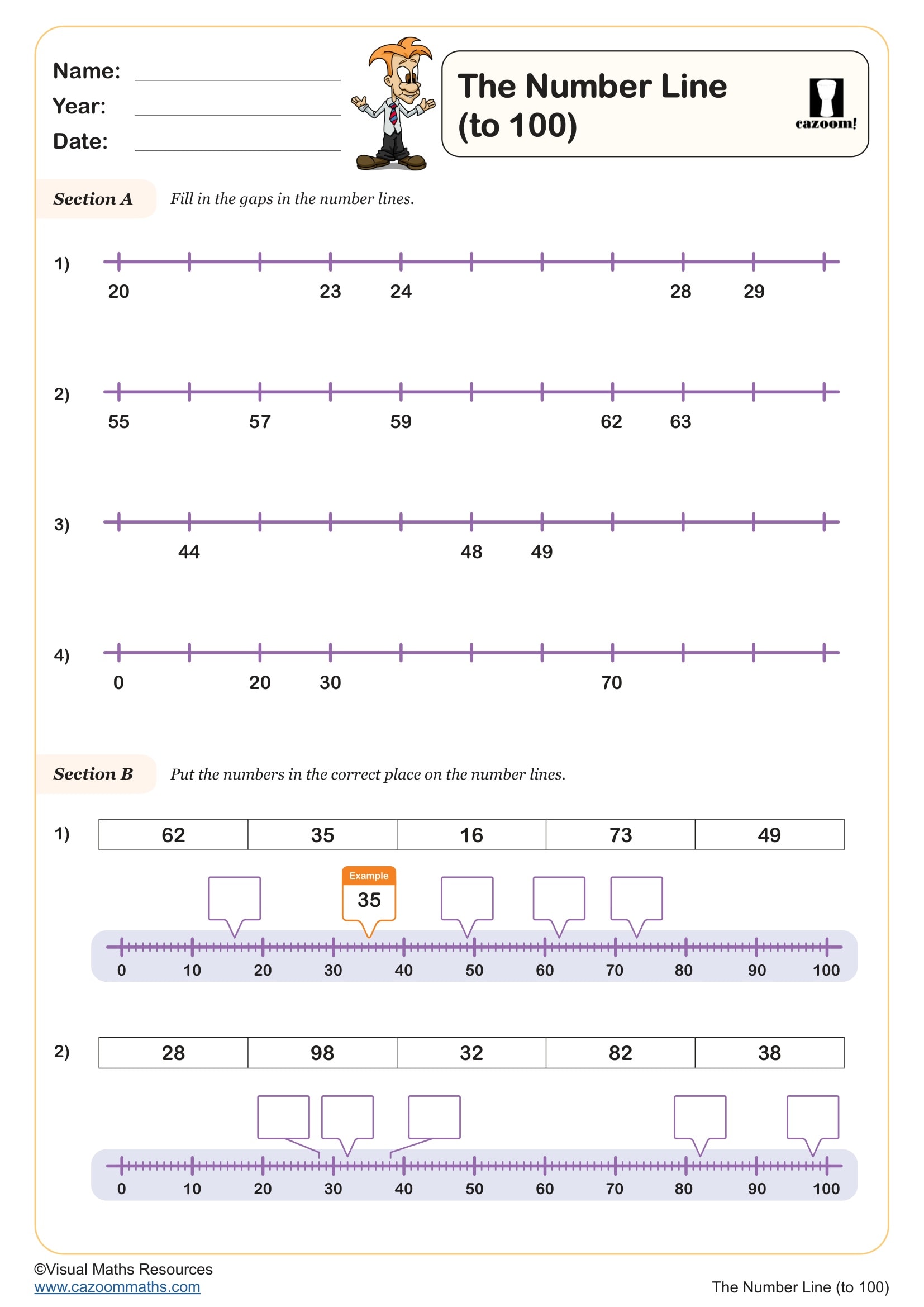
The Number Line (to 20)
Year groups: 1
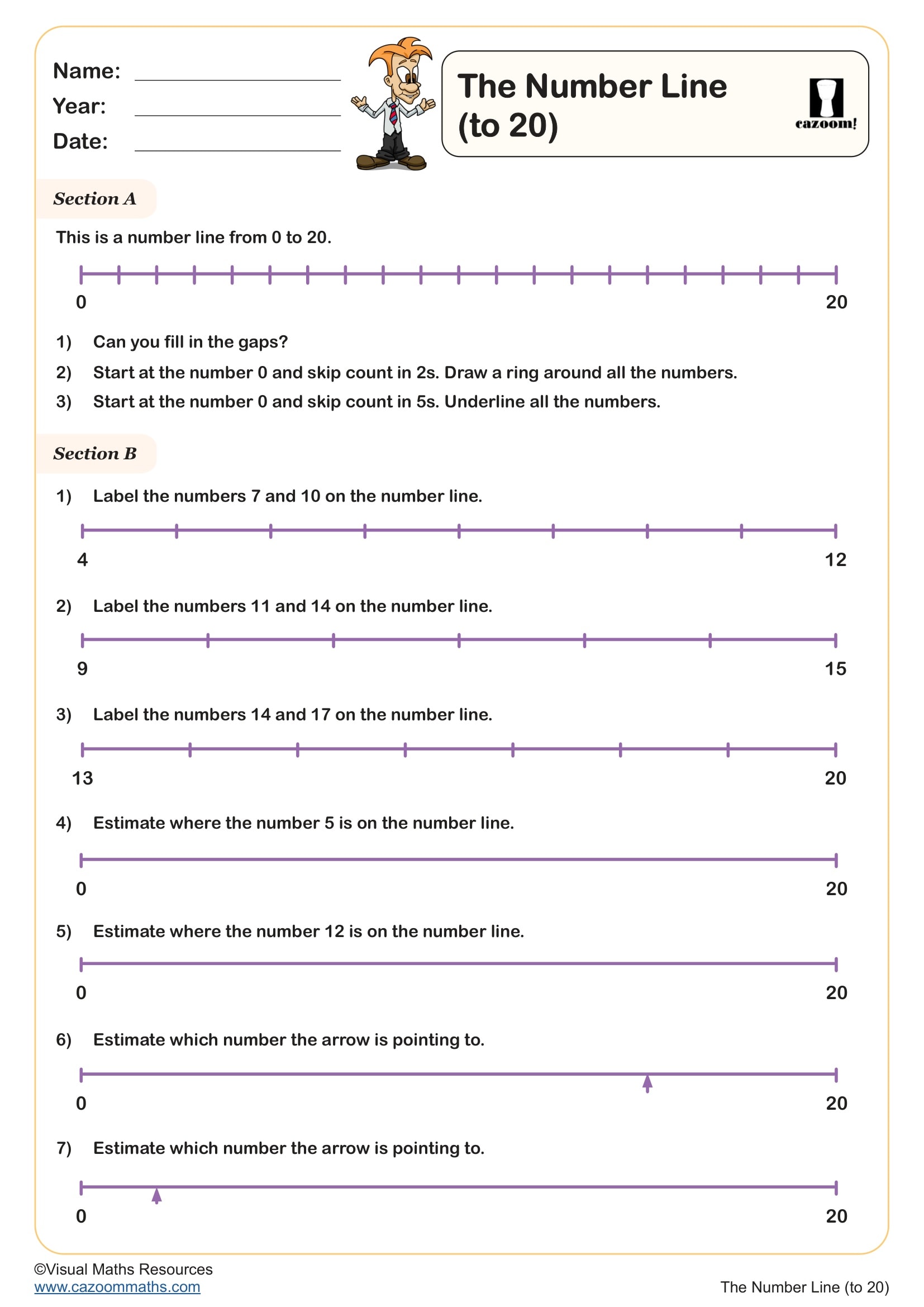
Compare and Order Numbers to 100
Year groups: 2
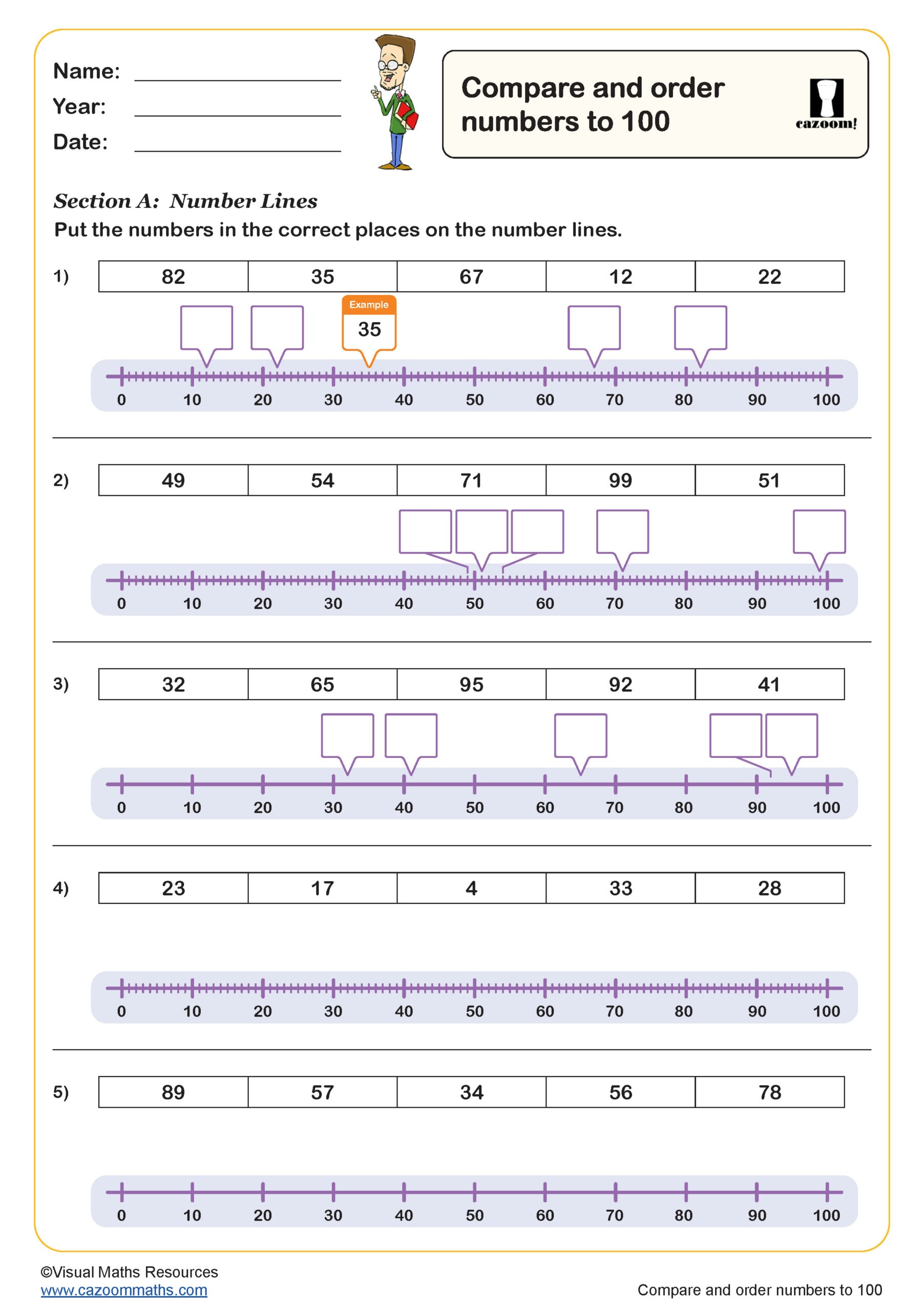
Count in 3s Maze
Year groups: 2
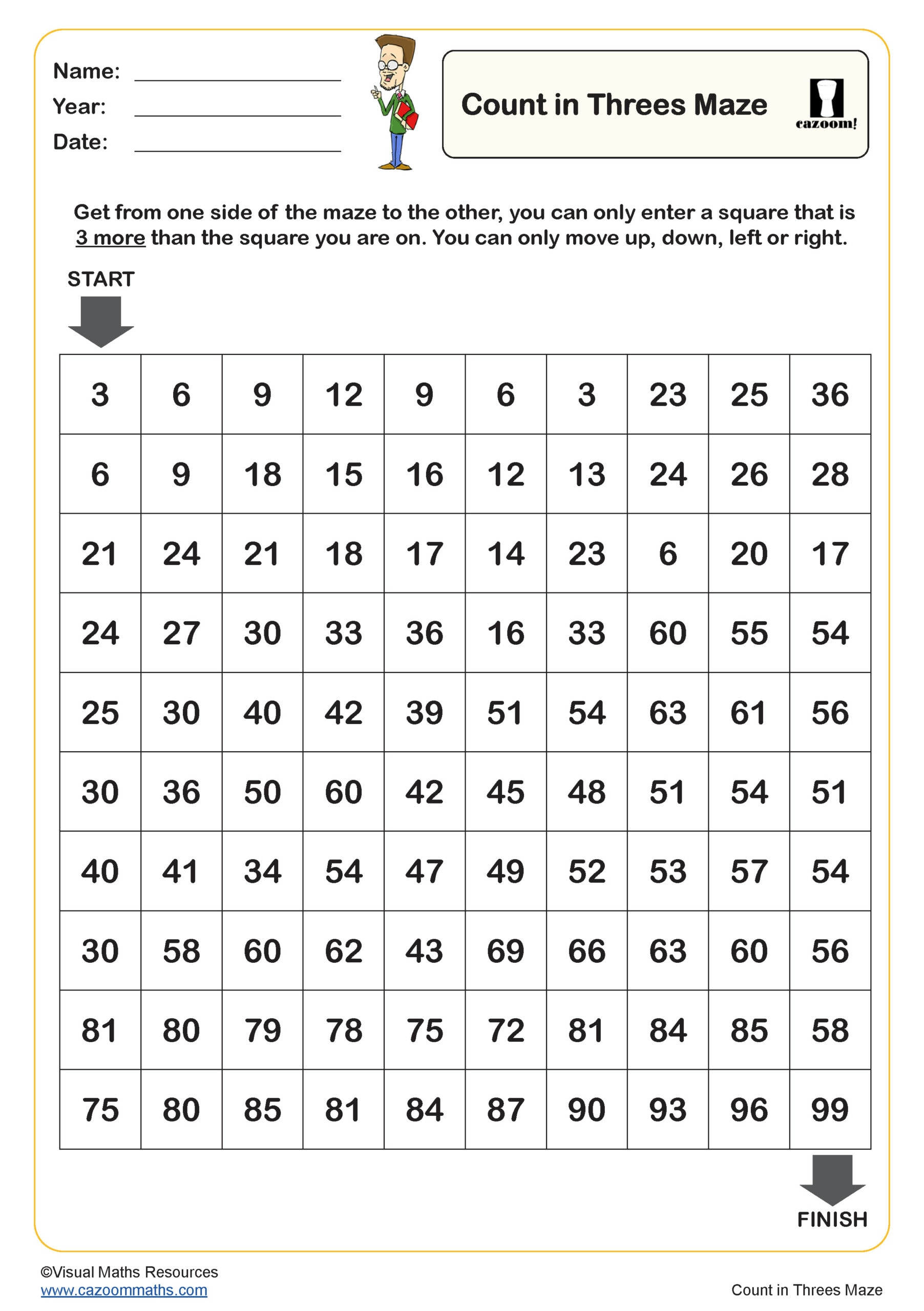
Numerals and Words (up to 100)
Year groups: 2
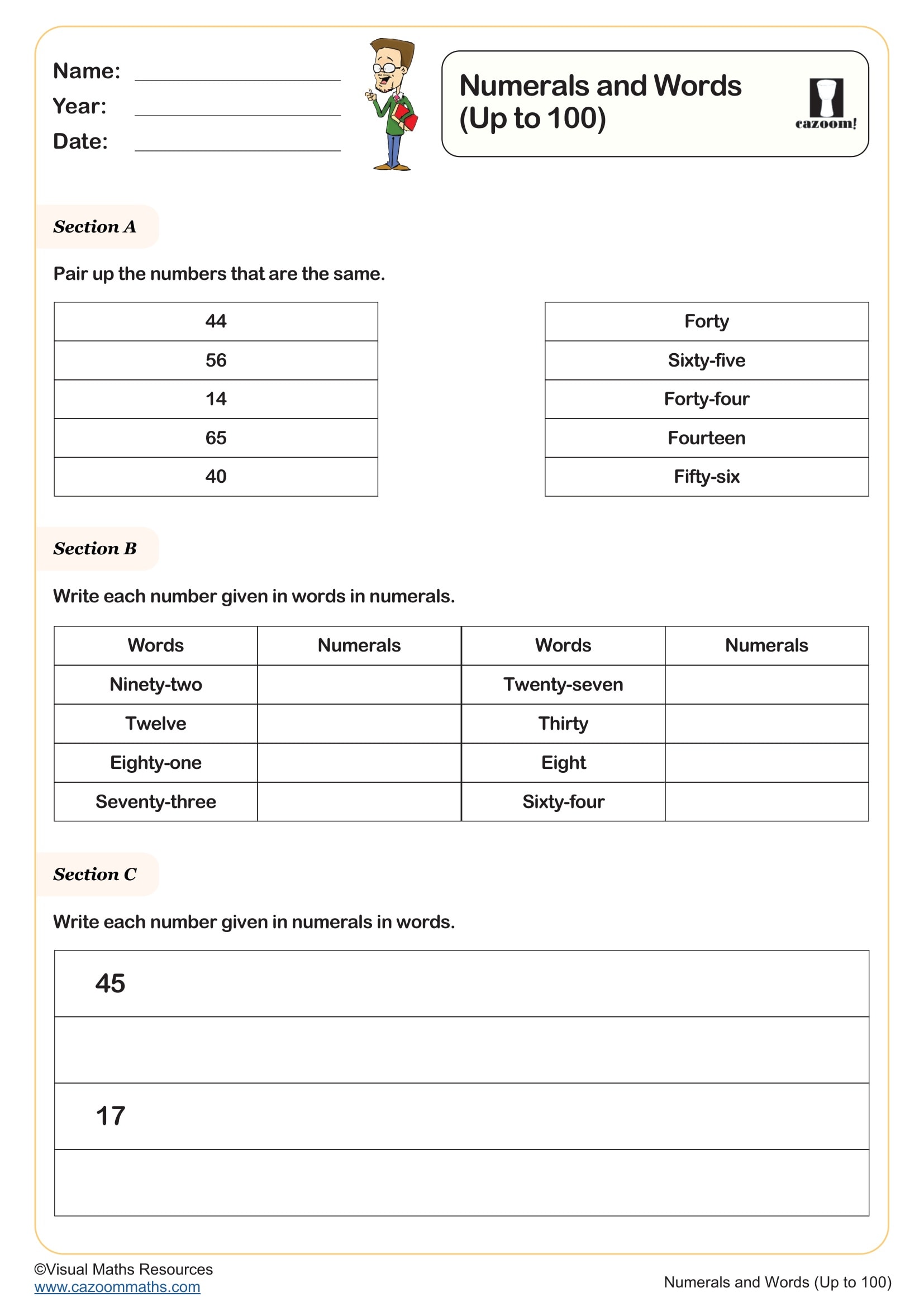
Partitioning Numbers to 100
Year groups: 2
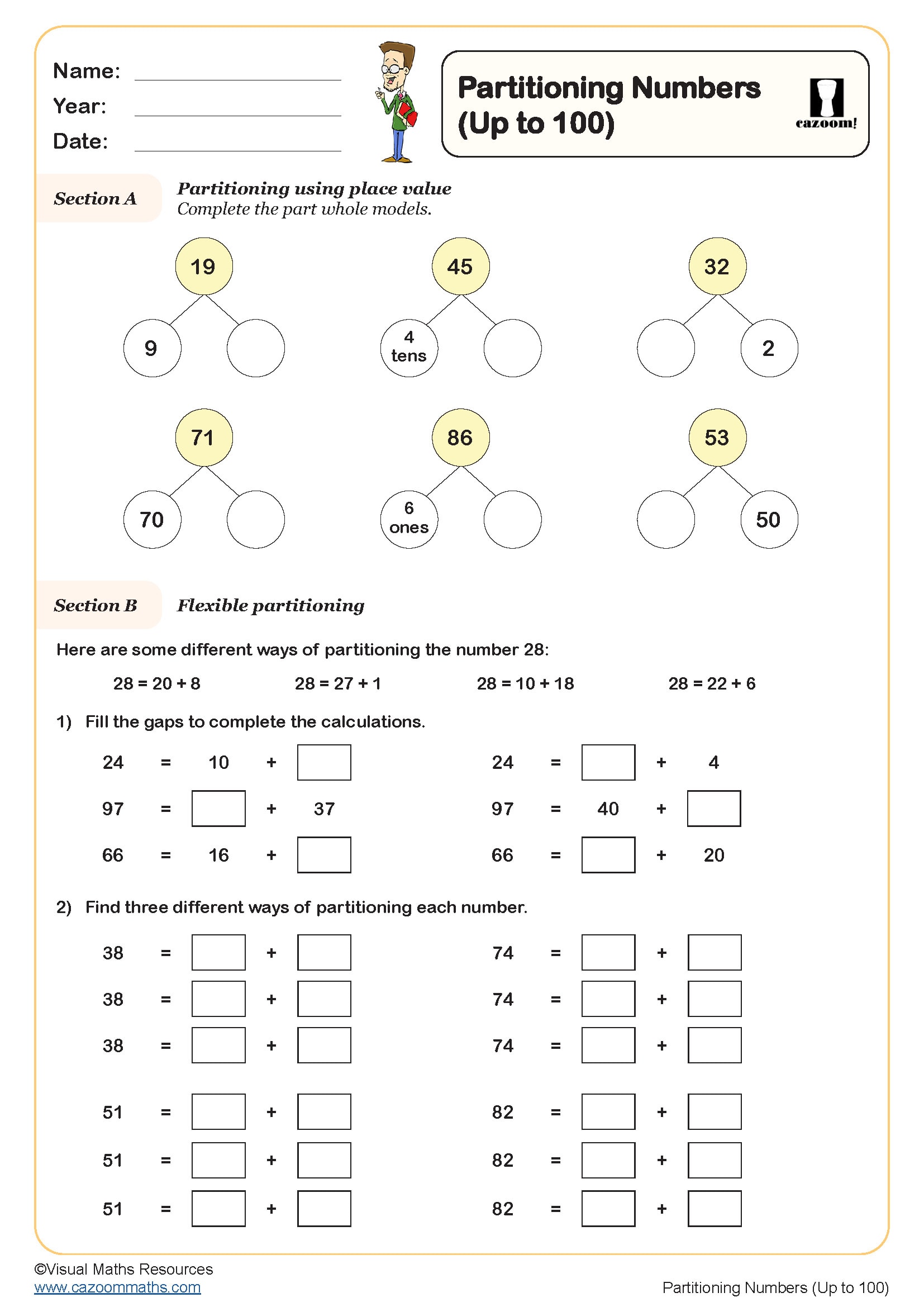
Place Value up to 100 (A)
Year groups: 2
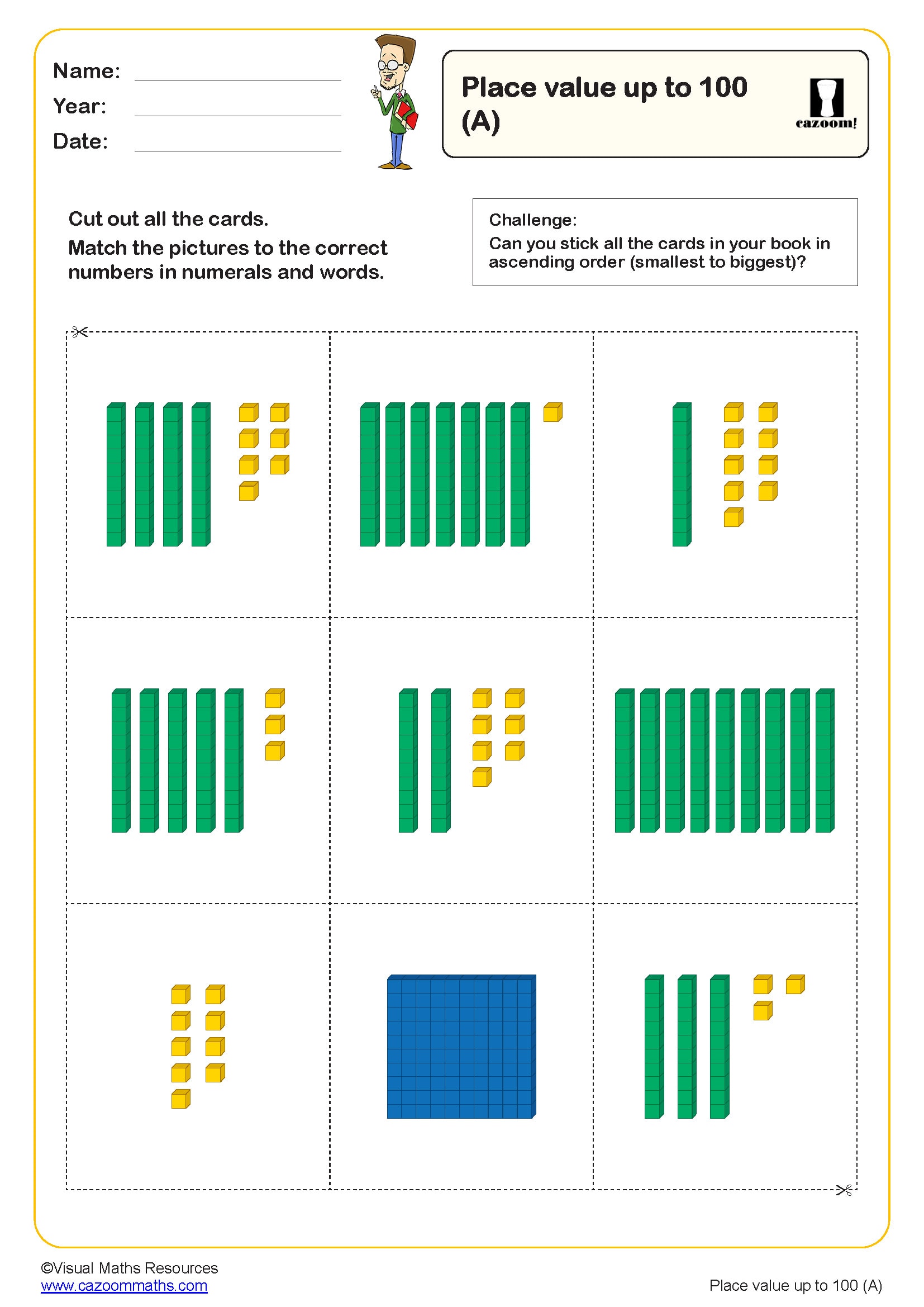
Place Value up to 100 (B)
Year groups: 2
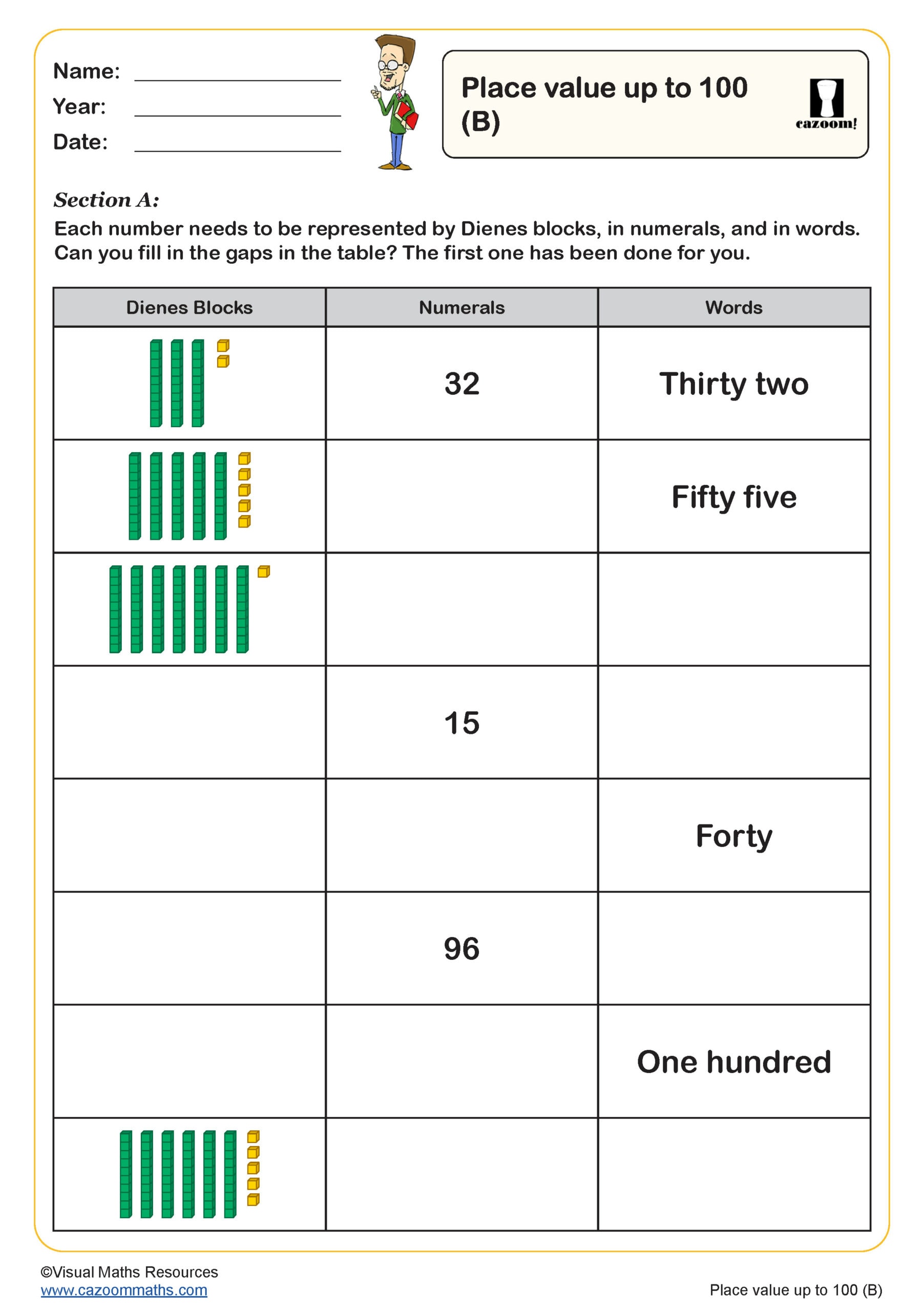
10 More 10 Less
Year groups: 3
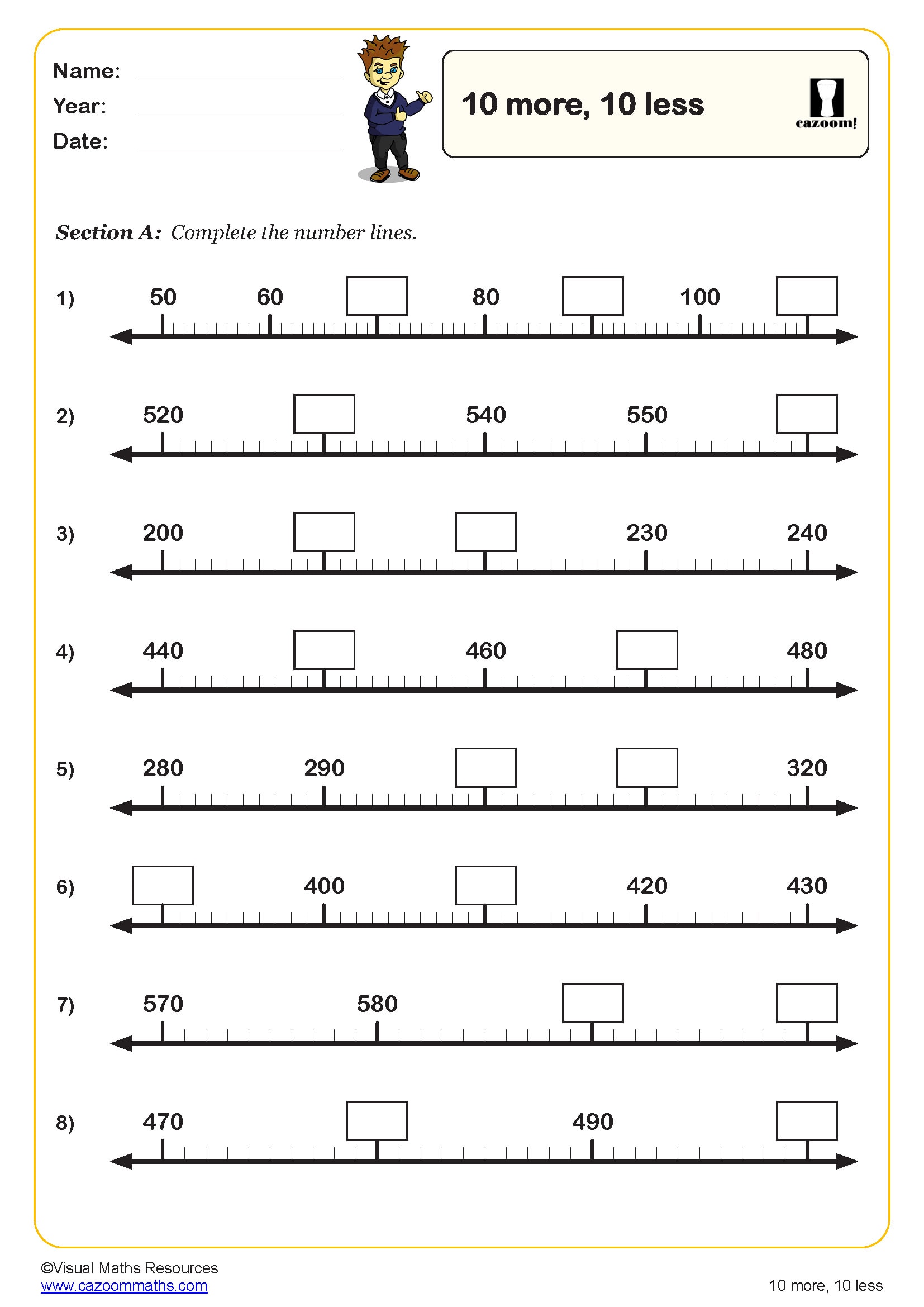
100 More 100 Less
Year groups: 3
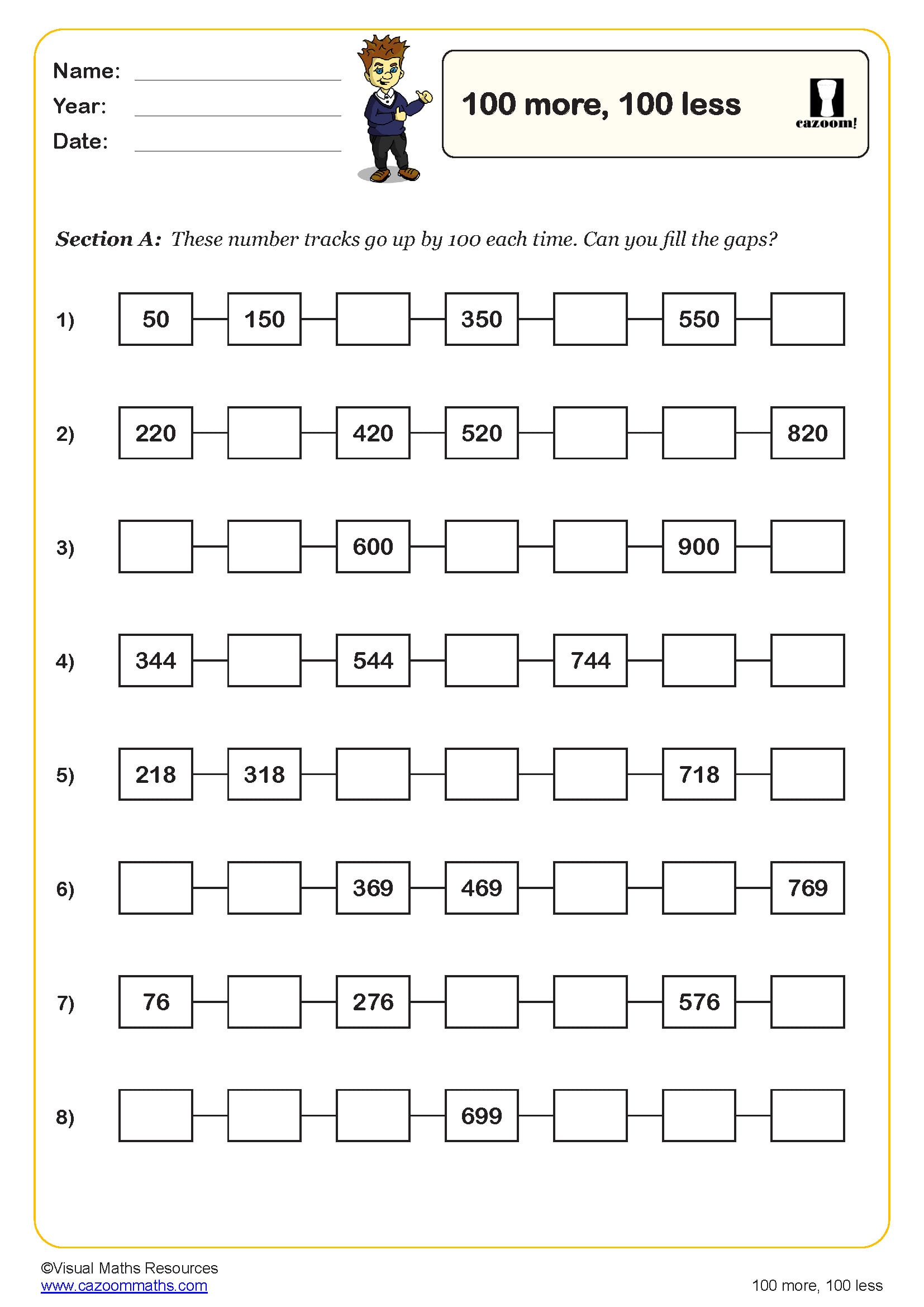
Compare and Order Numbers to 1000
Year groups: 3
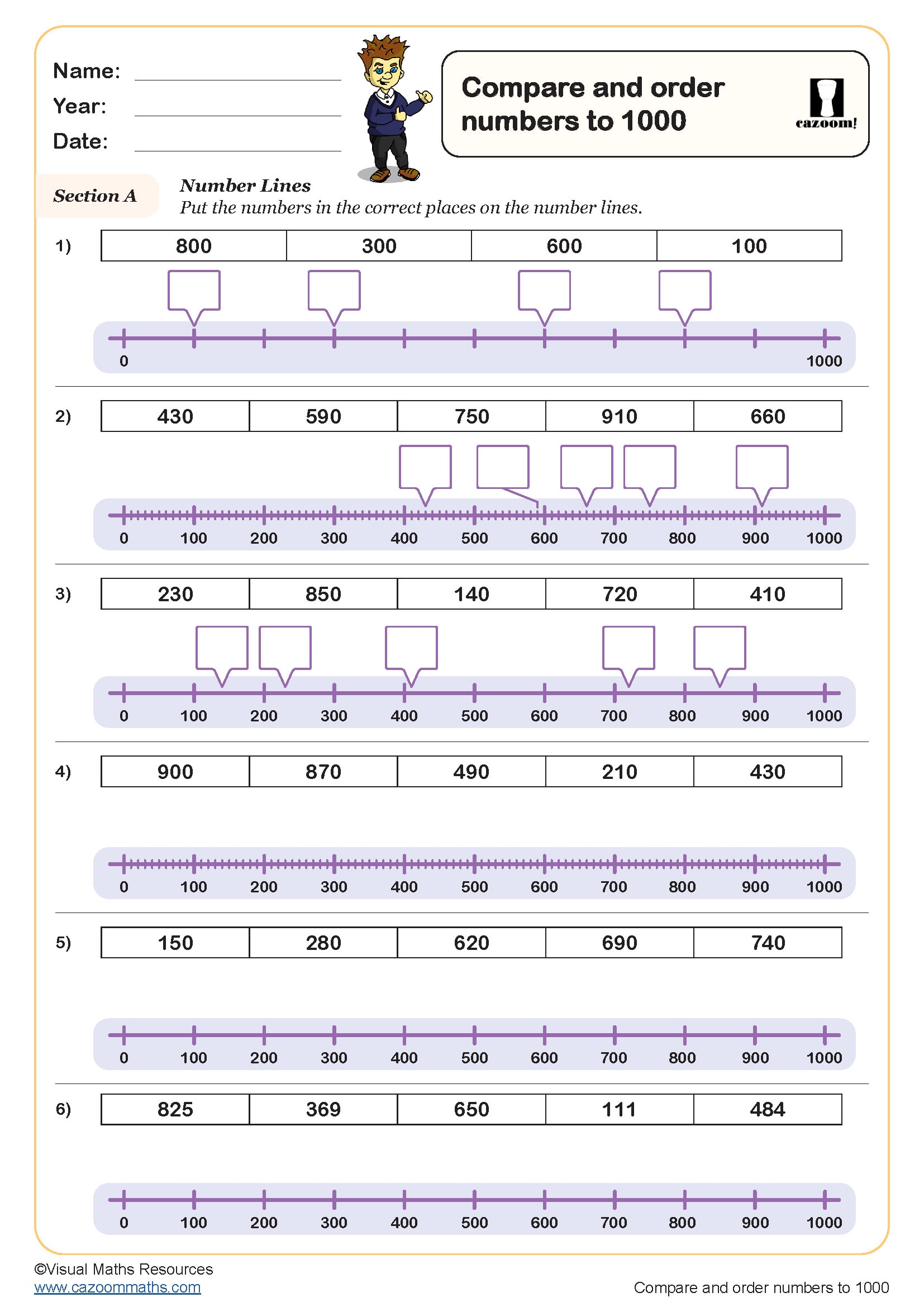
Number Lines to 1,000
Year groups: 3
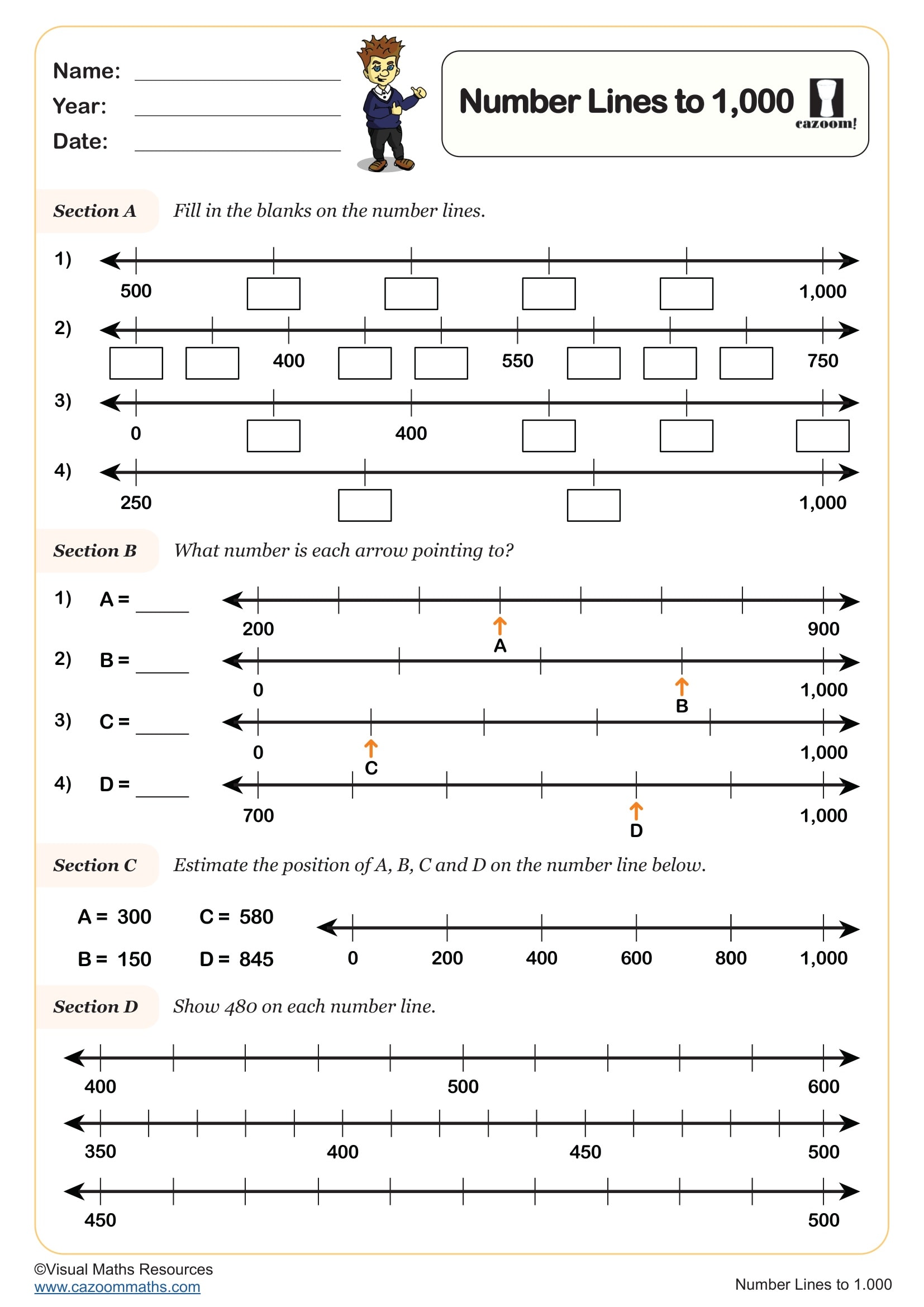
Partitioning Numbers to 1,000
Year groups: 3
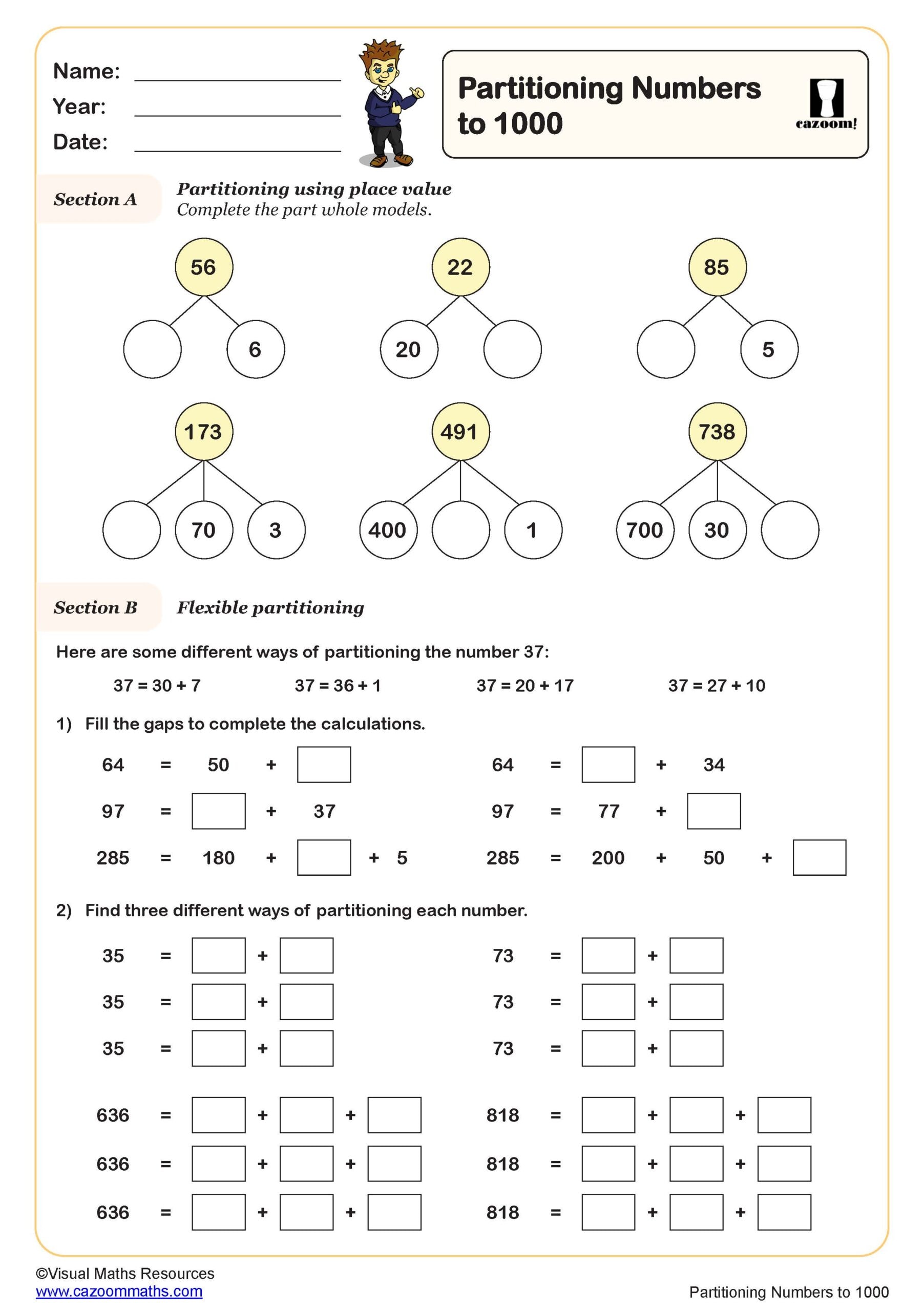
Place Value up to 1000
Year groups: 3
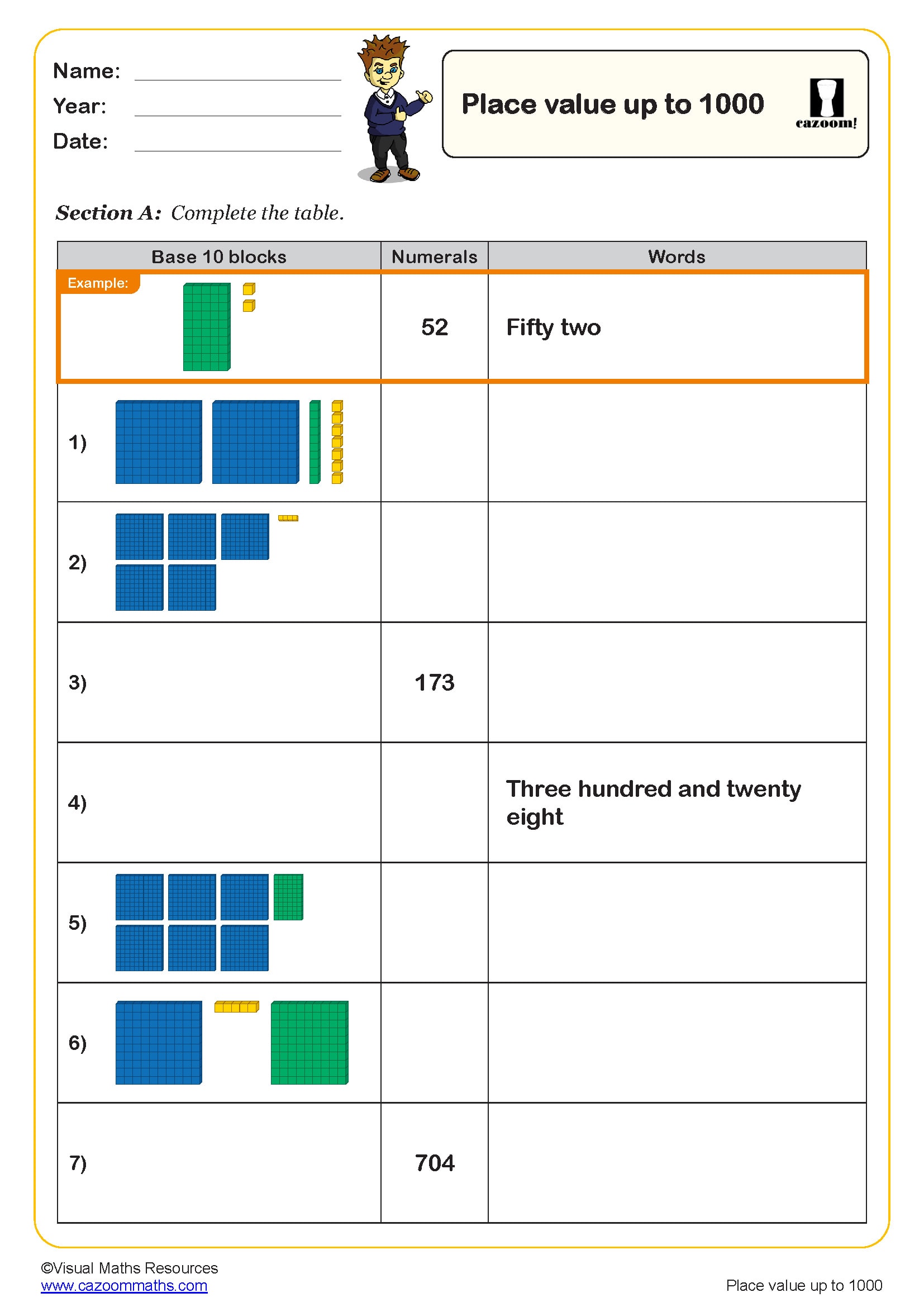
Roman Numerals (A)
Year groups: 3
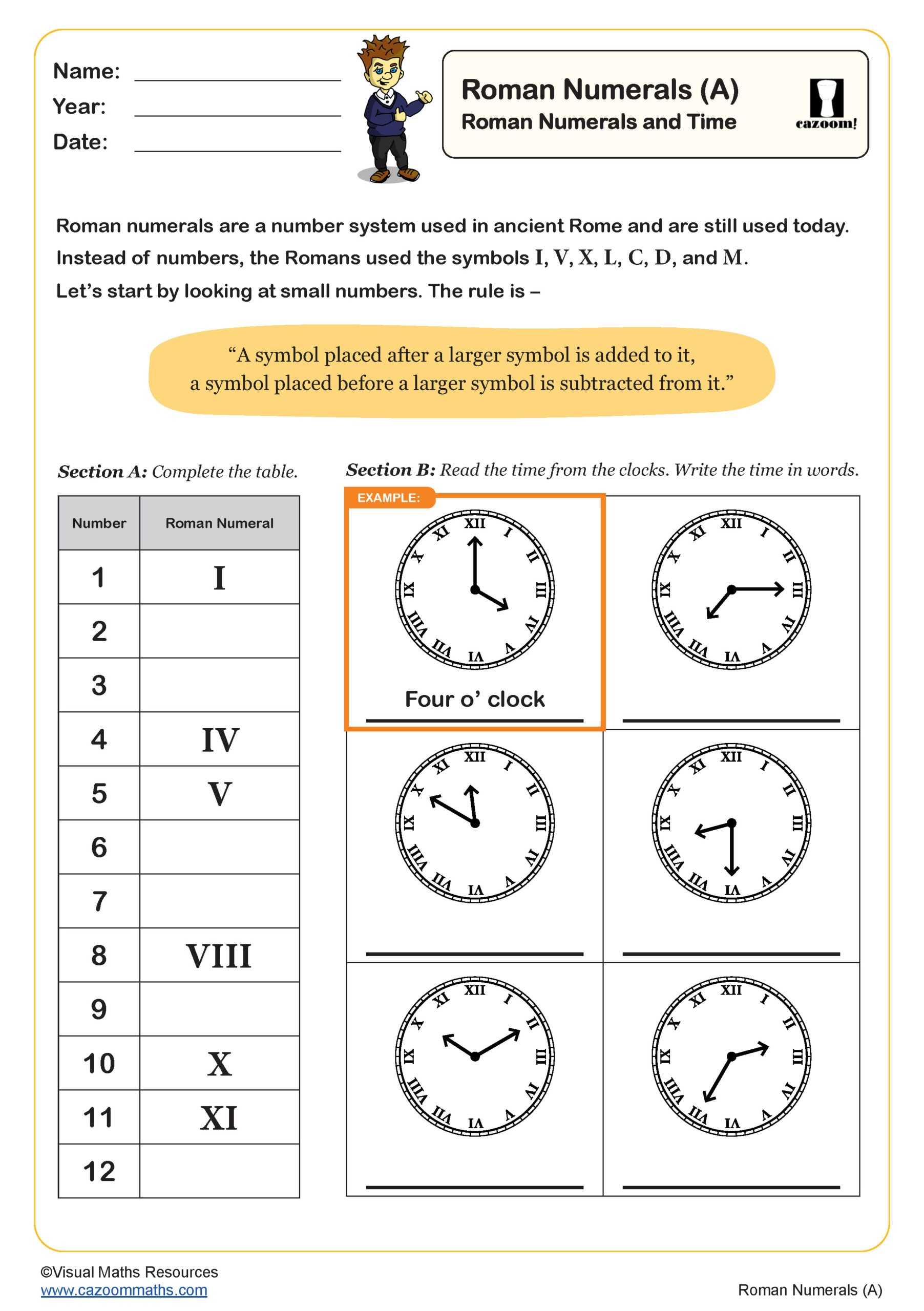
1000 More 1000 Less (A)
Year groups: 4
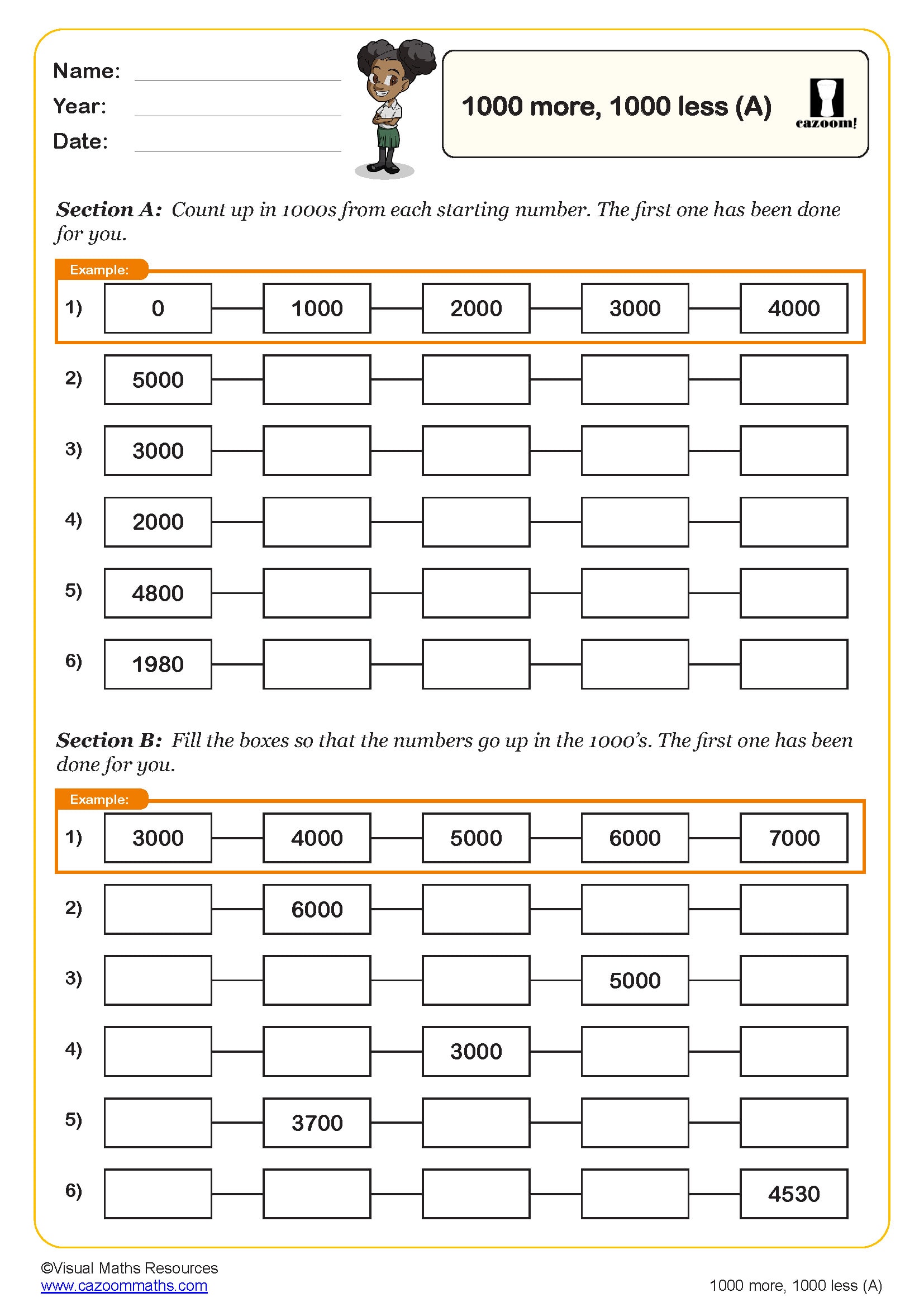
1000 More 1000 Less (B)
Year groups: 4
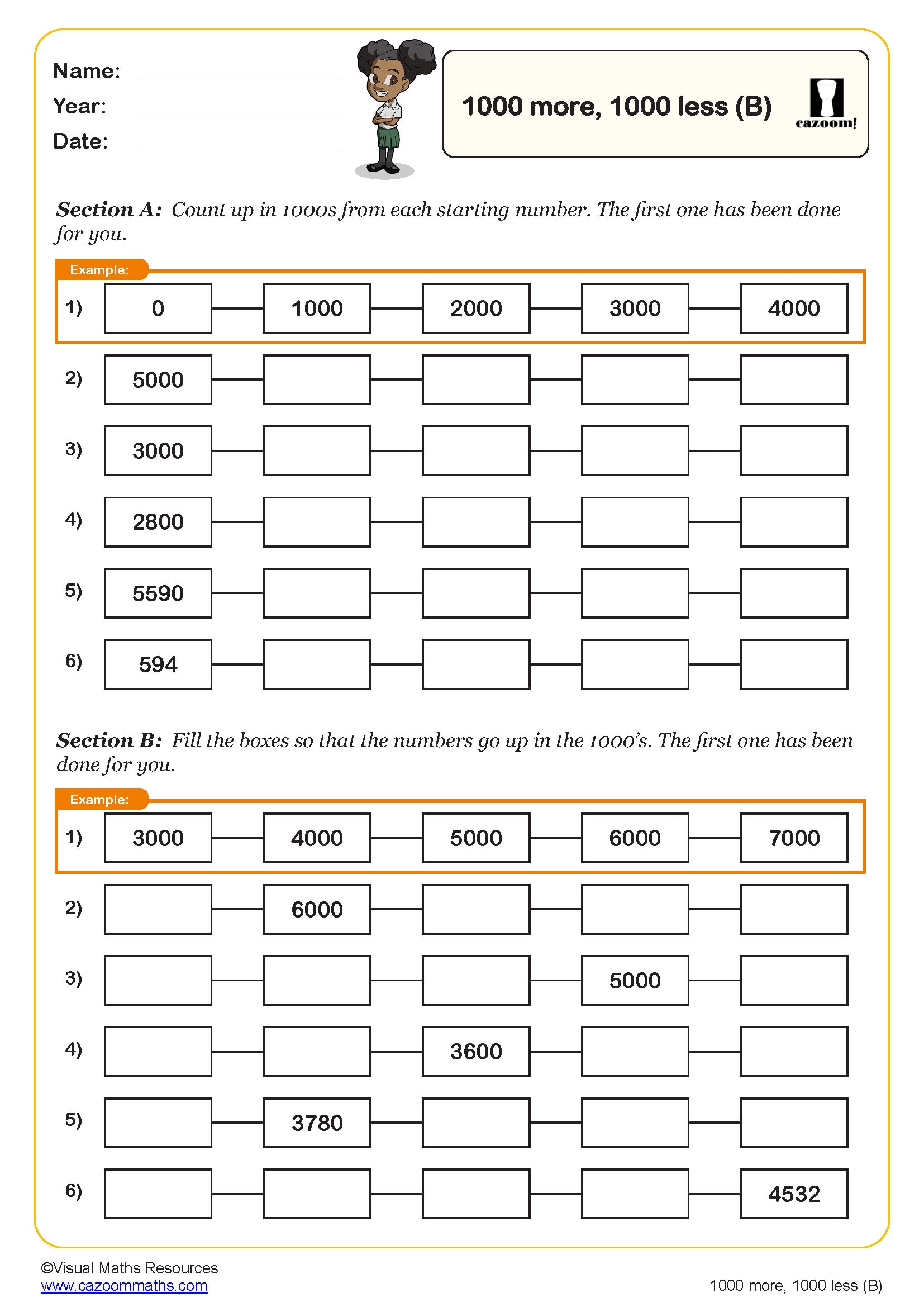
1000 More 1000 Less (C)
Year groups: 4
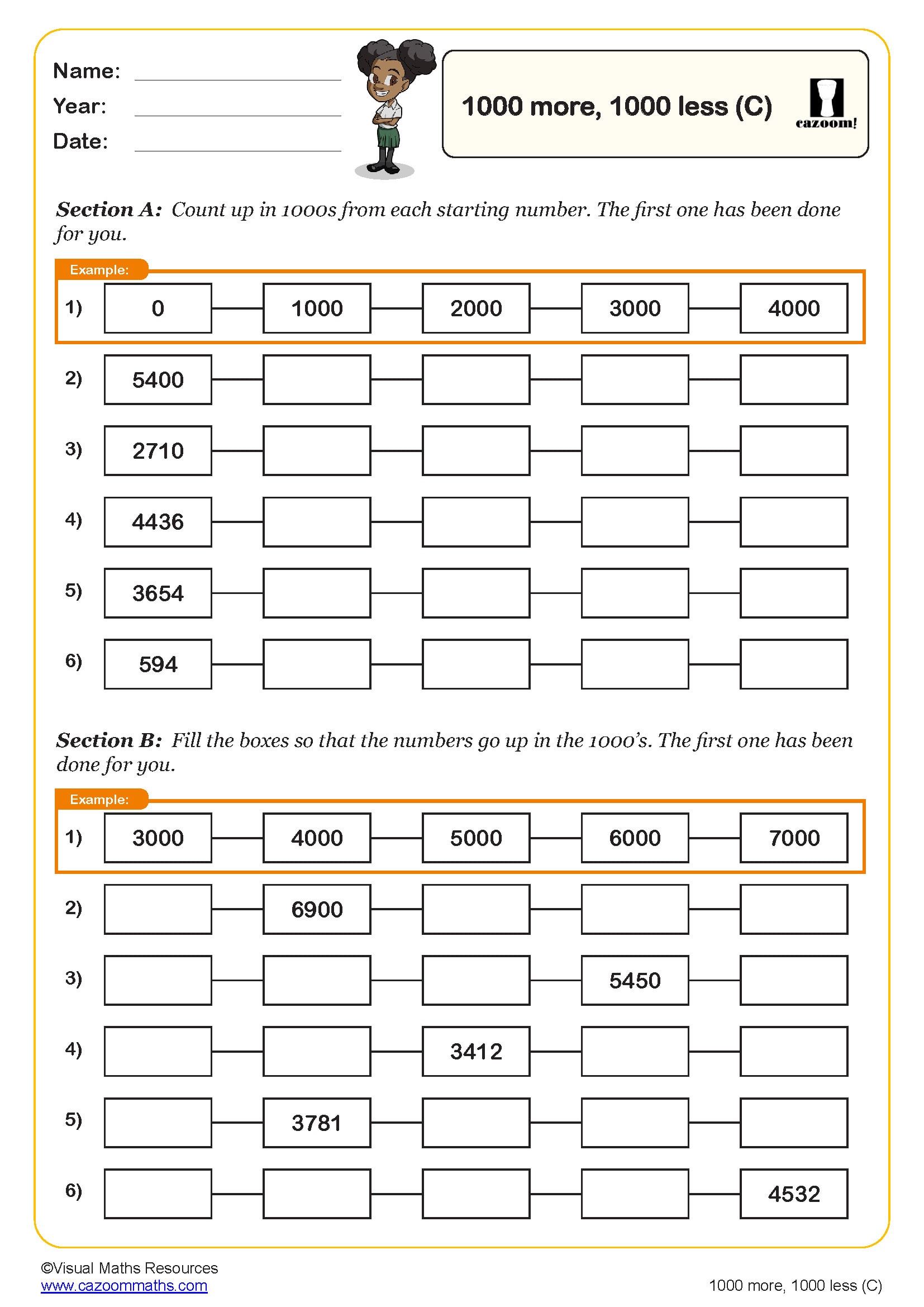
Compare and Order Numbers to 10,000
Year groups: 4
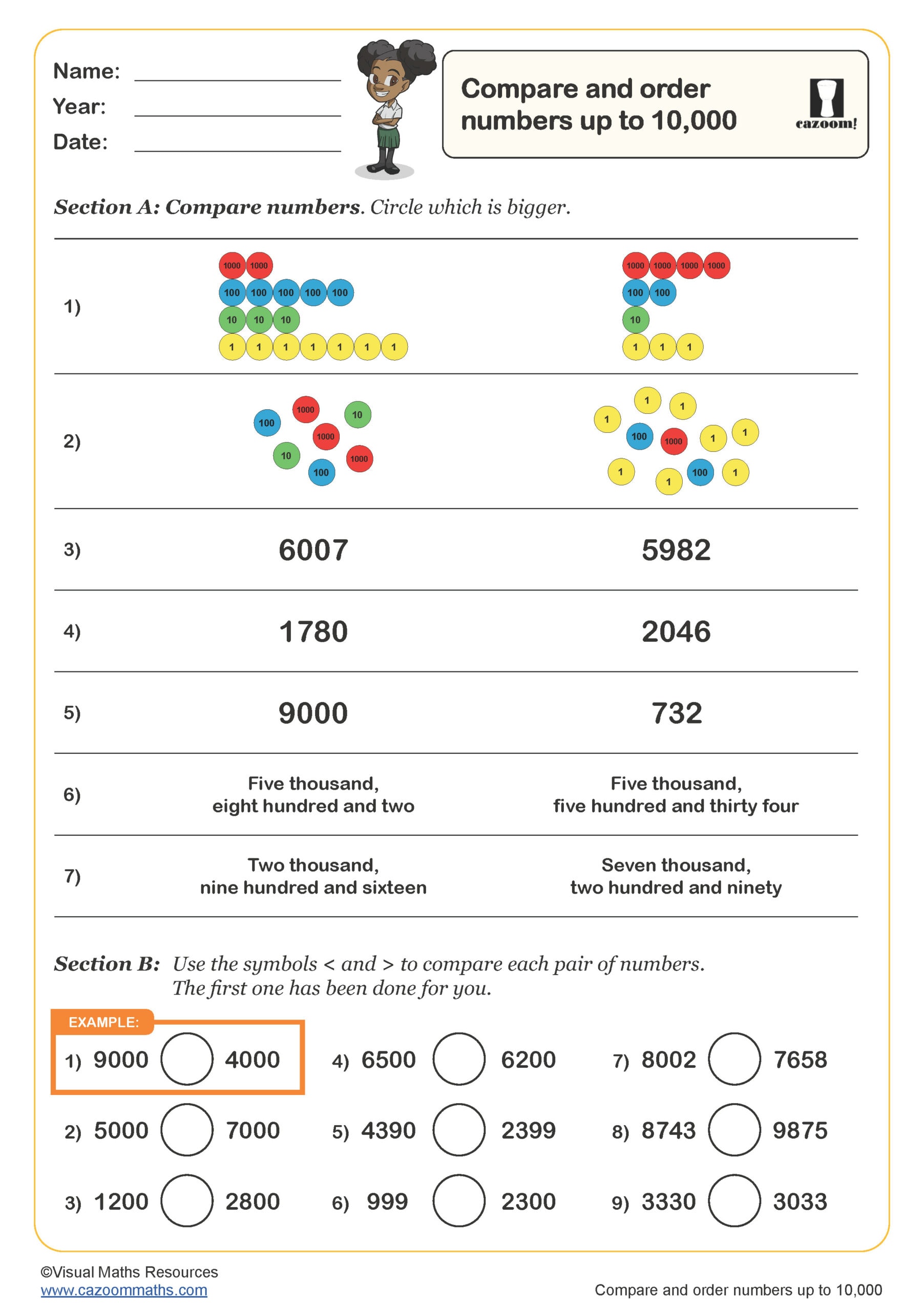
Compare and Order Positive and Negative Numbers
Year groups: 4
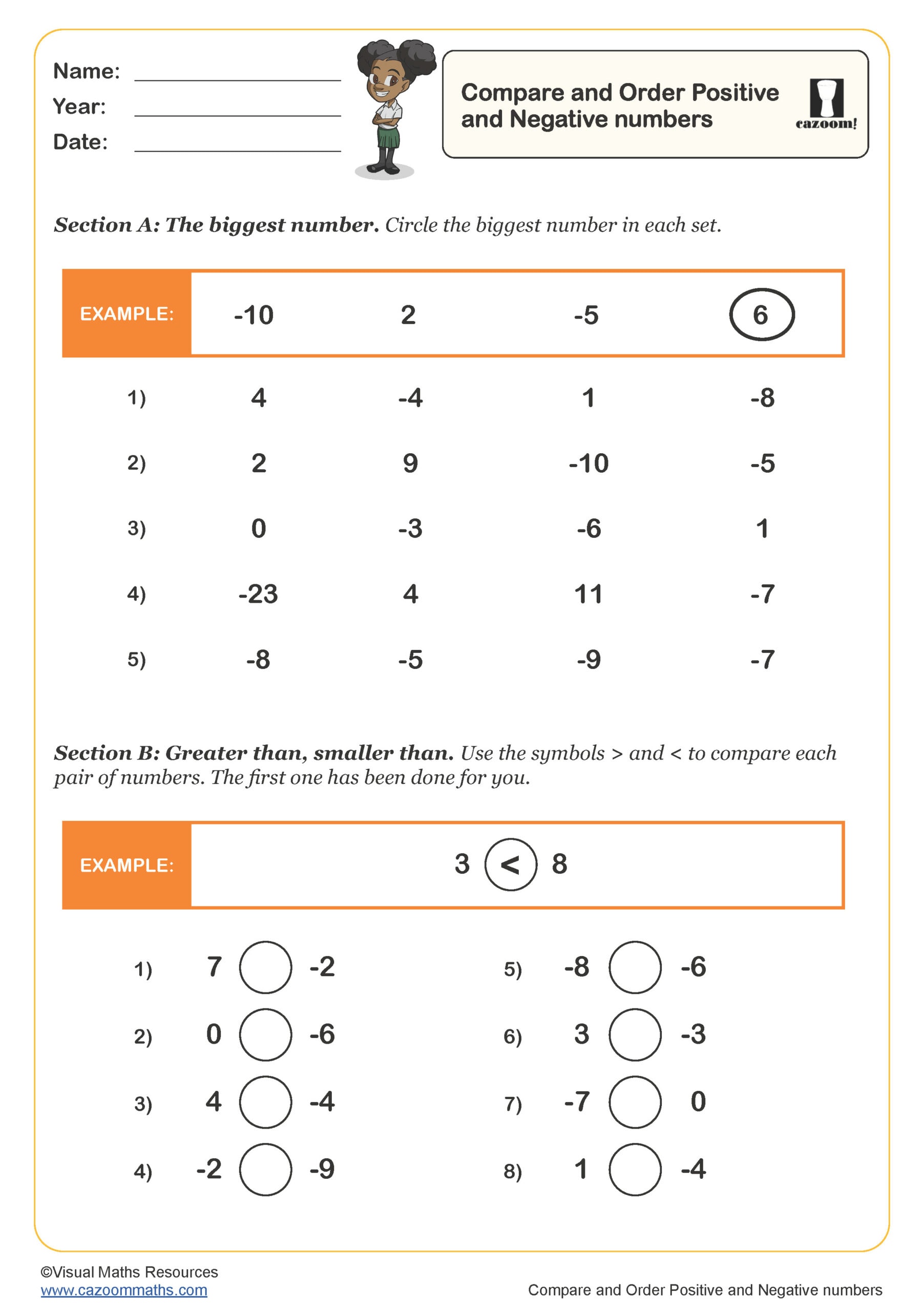
Decimal Place Value - Tenths and Hundredths
Year groups: 4
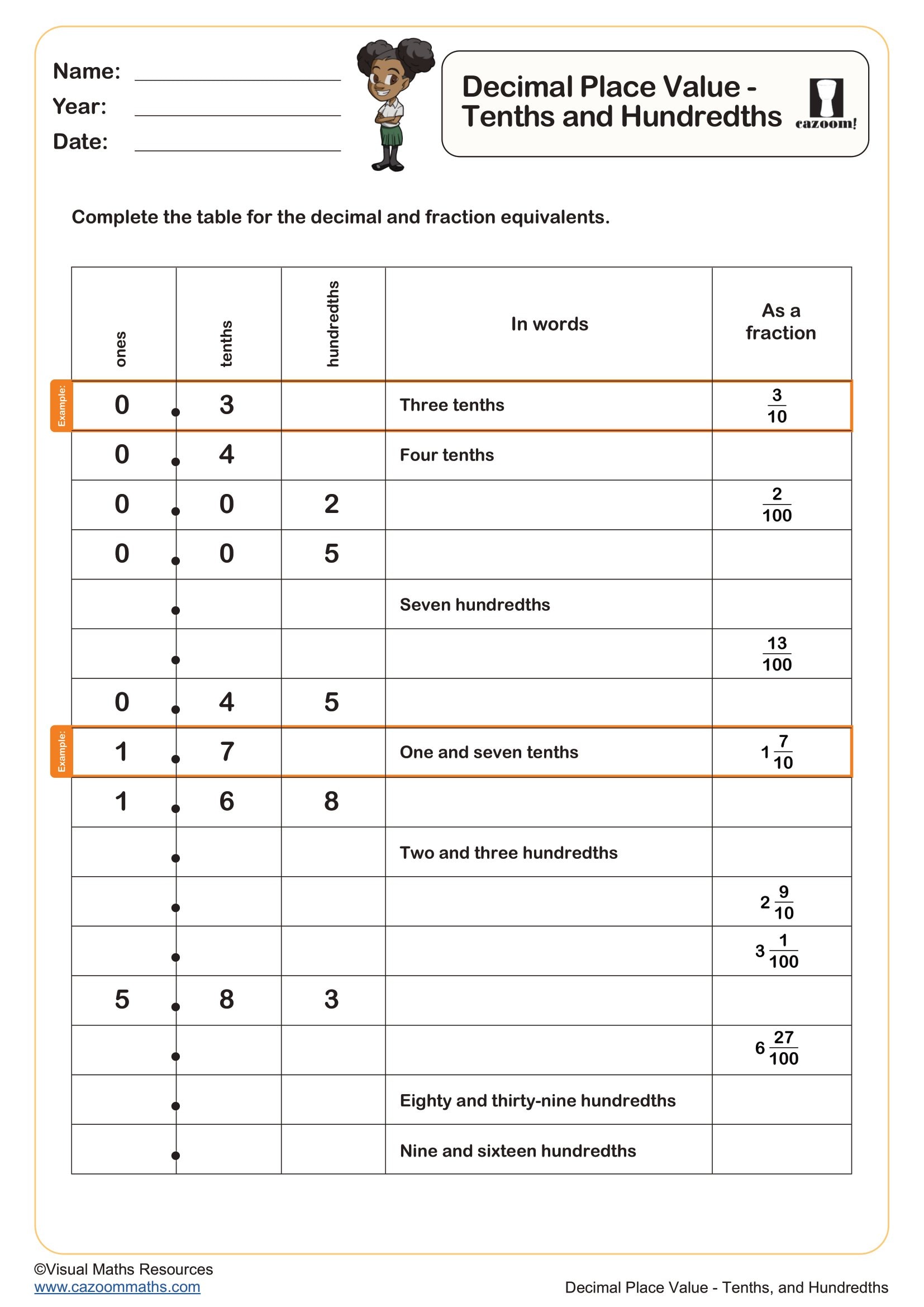
Divide 1 and 2 Digit Numbers by 10
Year groups: 4
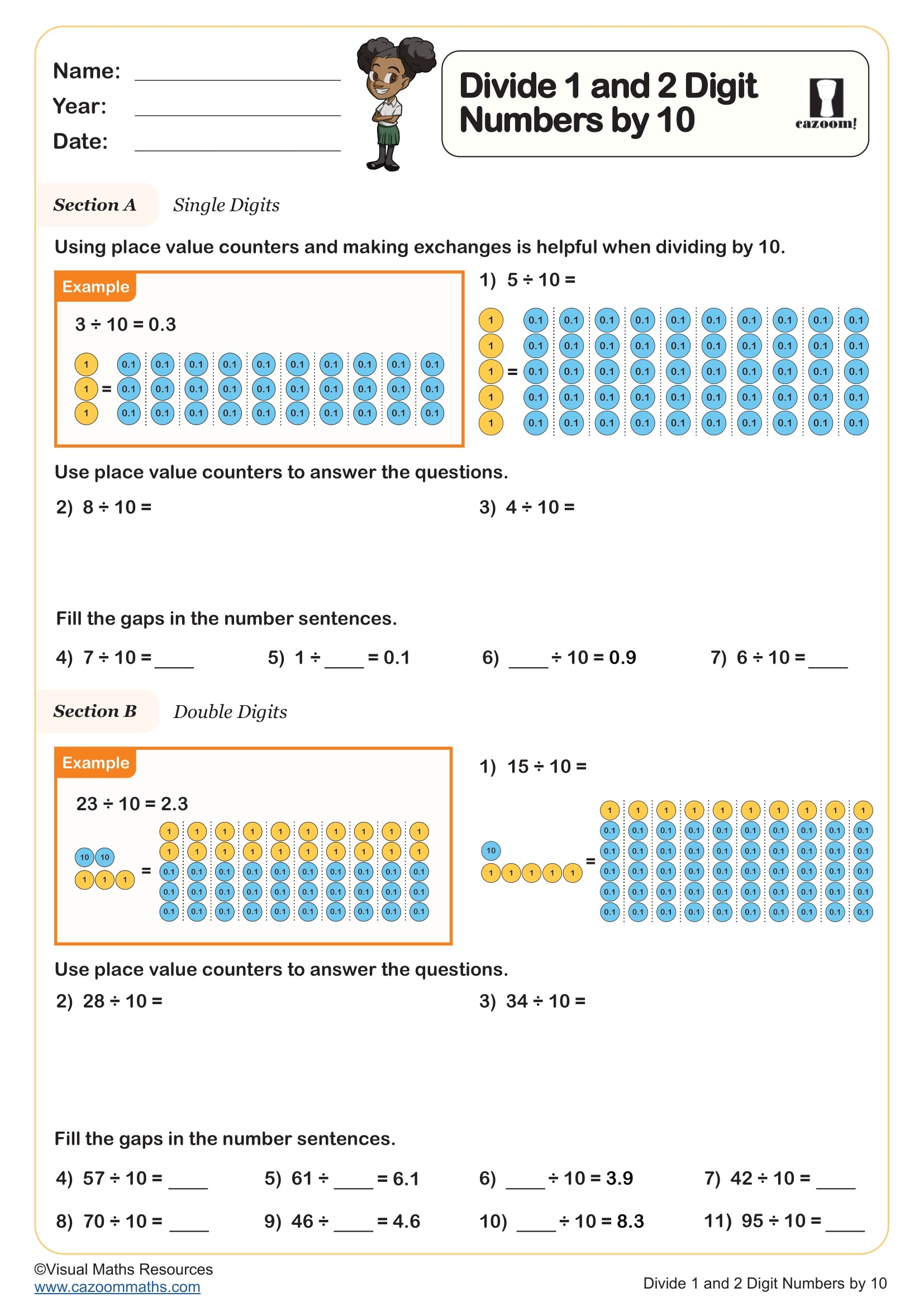
Divide 1 and 2 Digit Numbers by 100
Year groups: 4
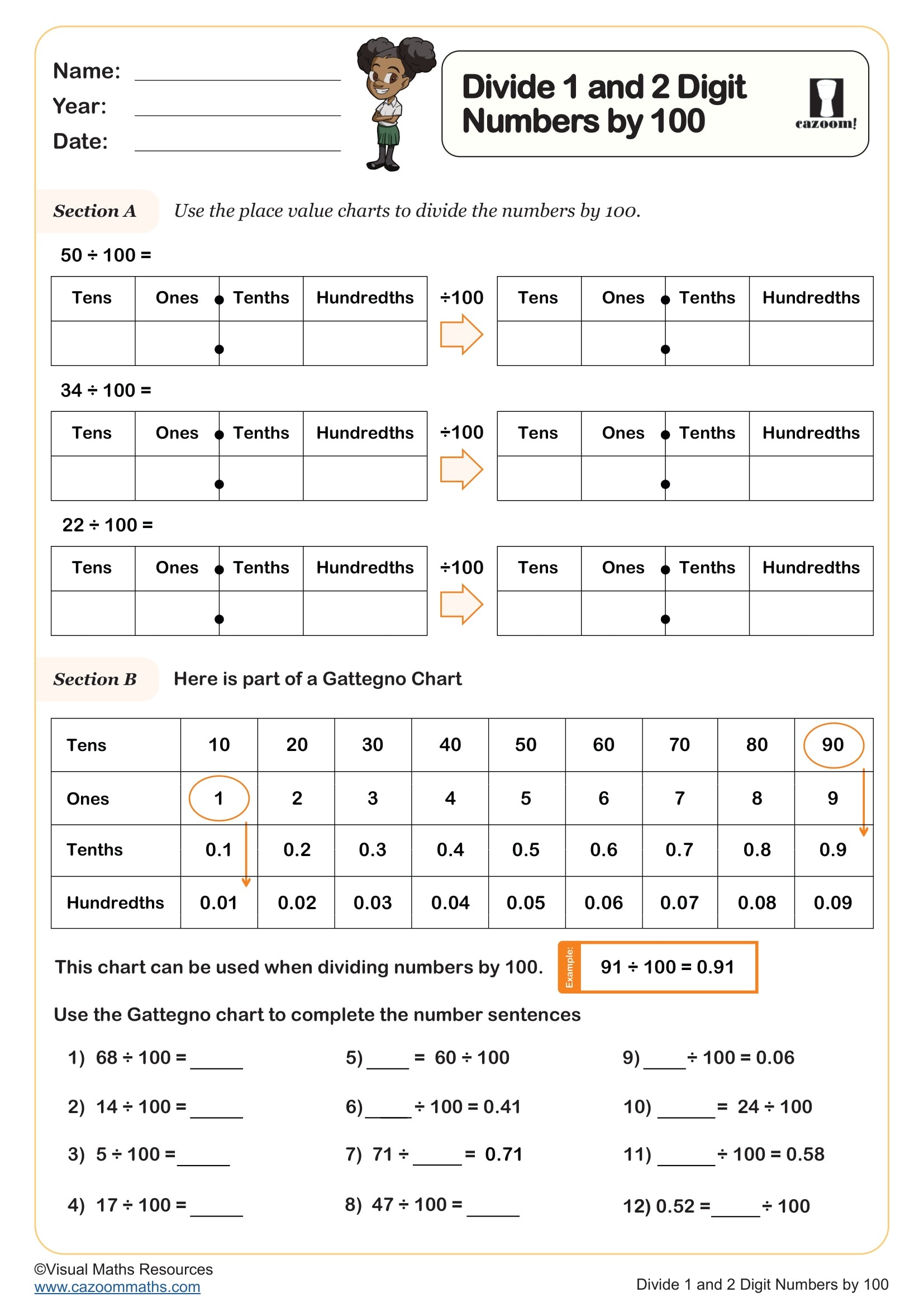
Estimating Shopping Bills
Year groups: 4
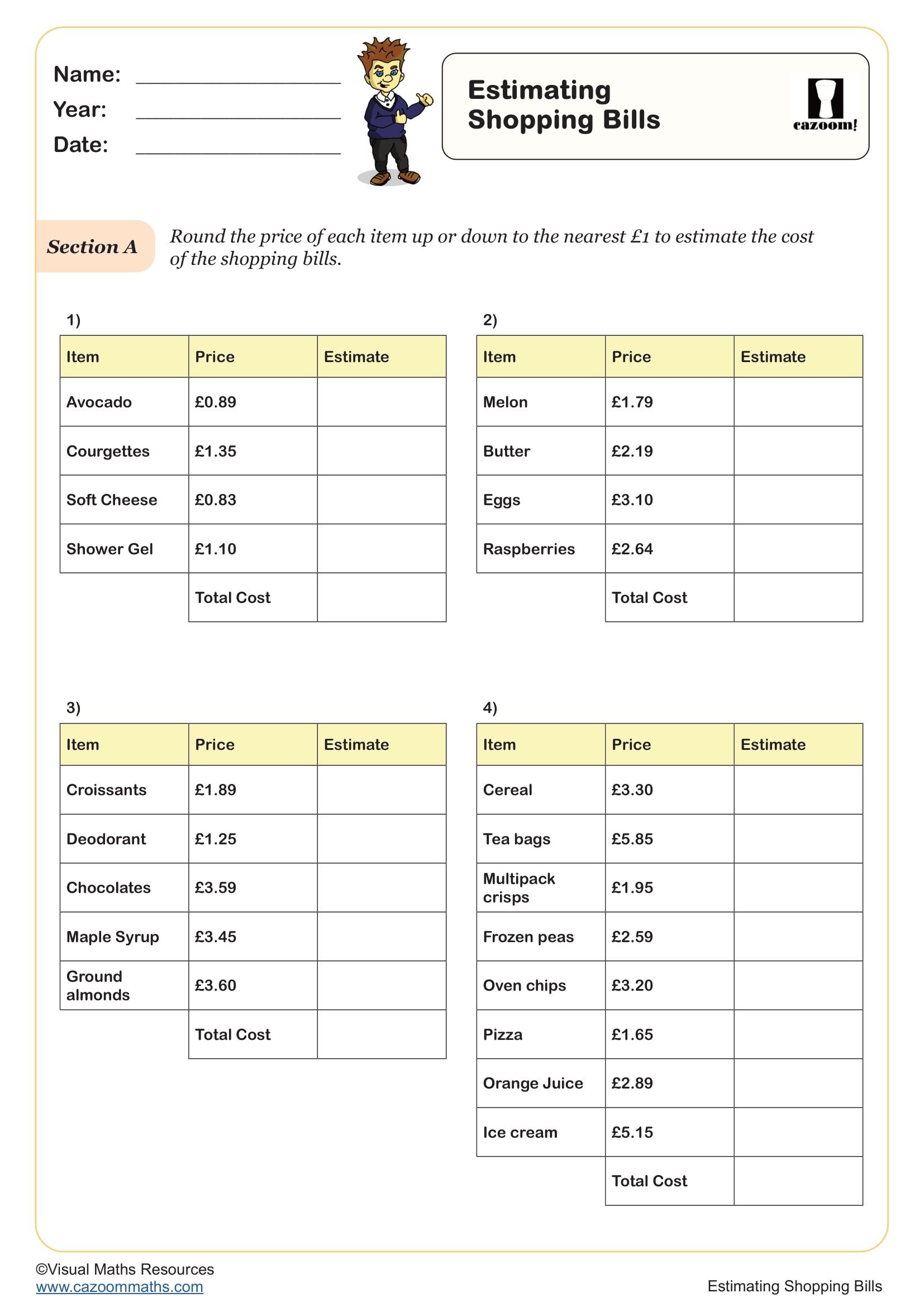
Negative Numbers
Year groups: 4
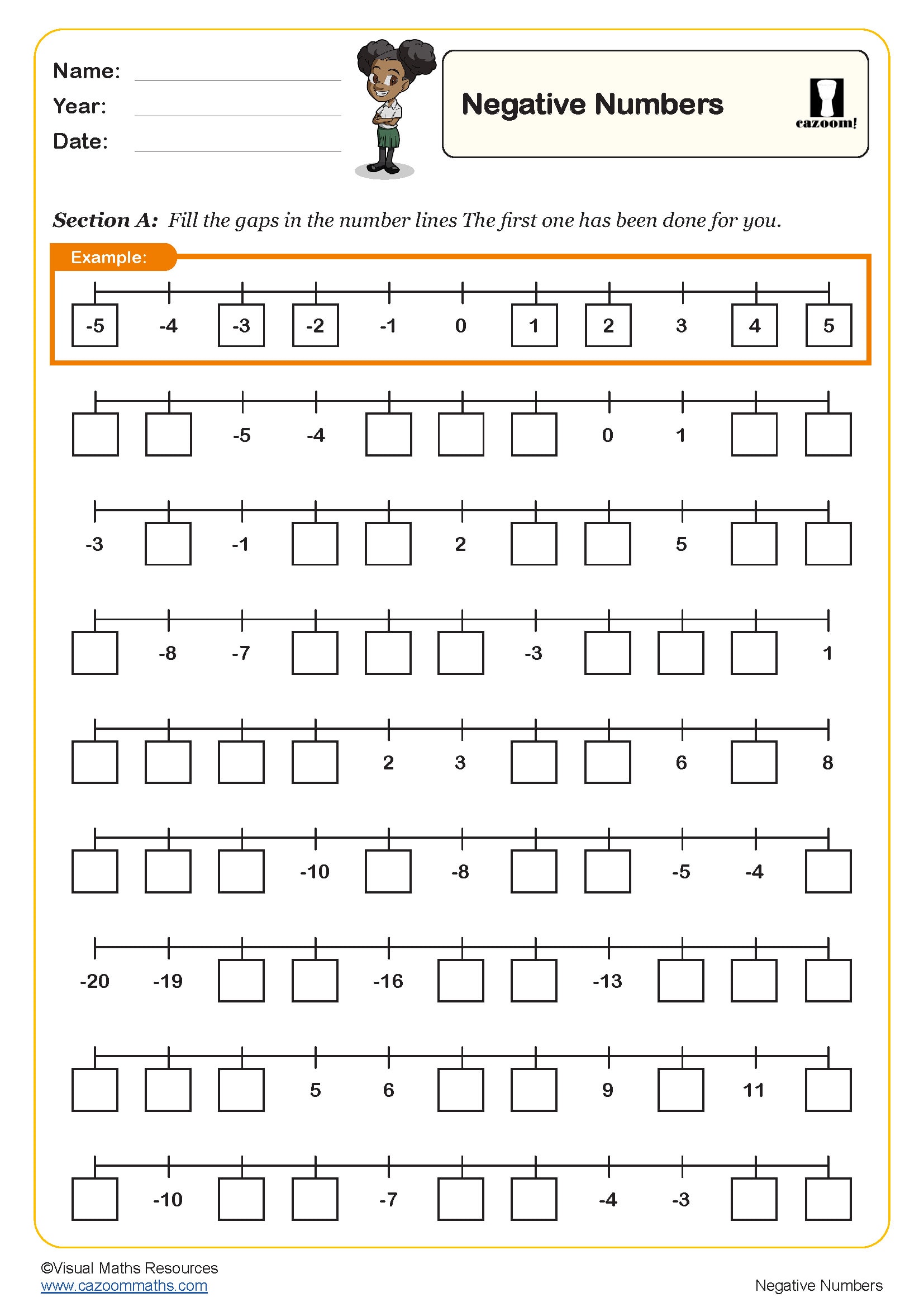
Place Value up to 10,000 (A)
Year groups: 4
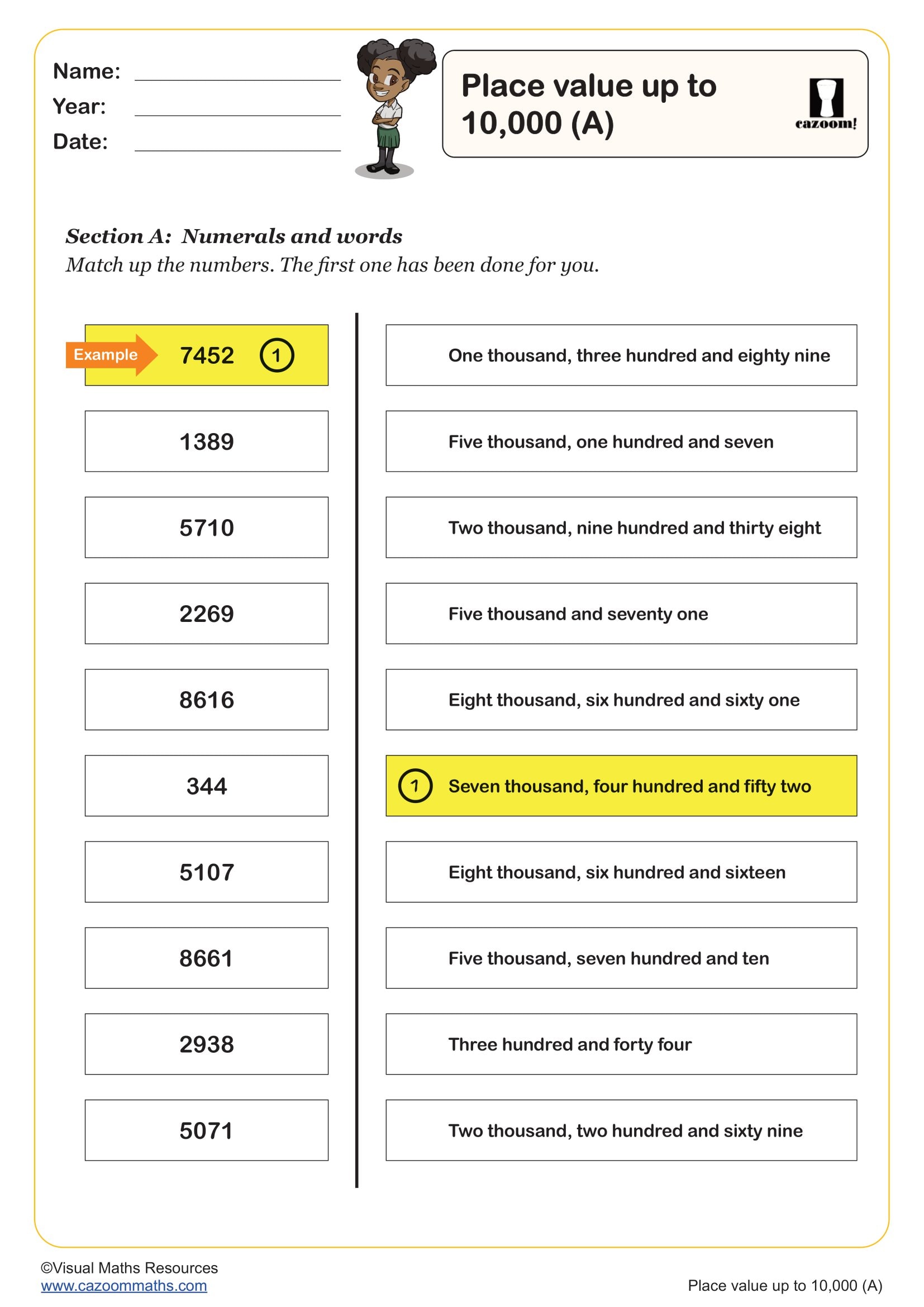
Place Value up to 10,000 (B)
Year groups: 4
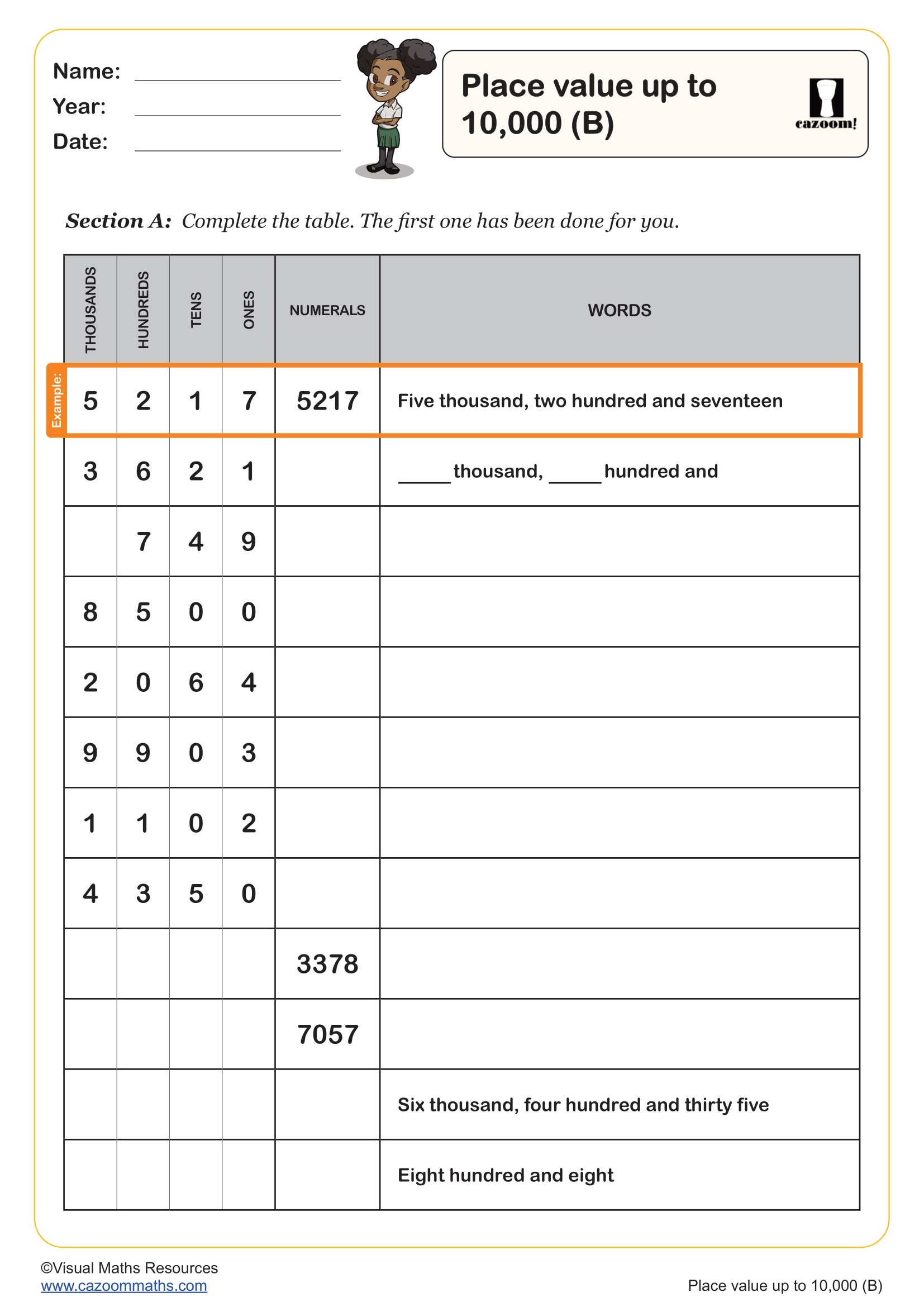
Place Value up to 10,000 (C)
Year groups: 4

Roman Numerals (B)
Year groups: 4
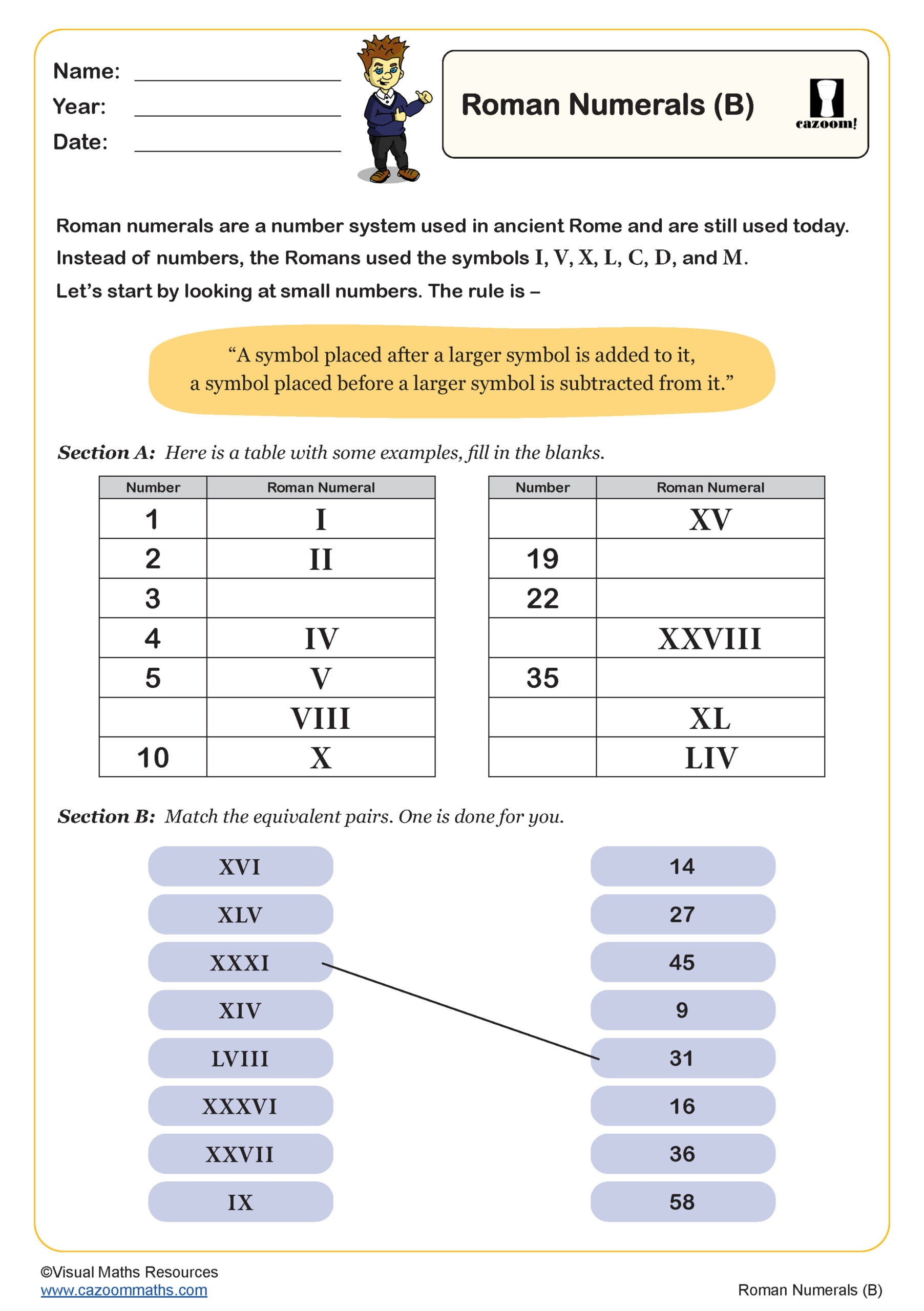
Roman Numerals (C)
Year groups: 4
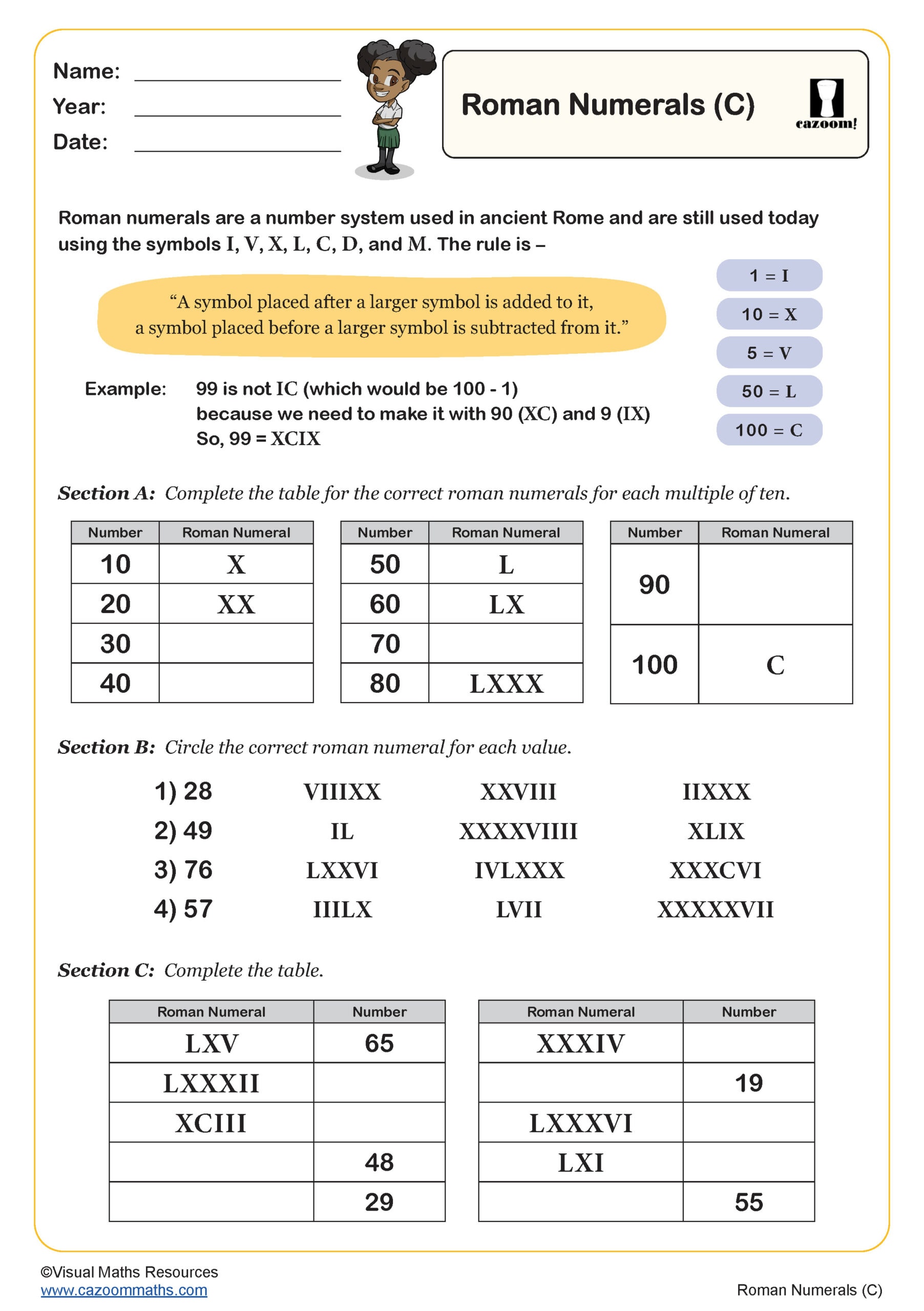
Rounding Charts
Year groups: 4, 5
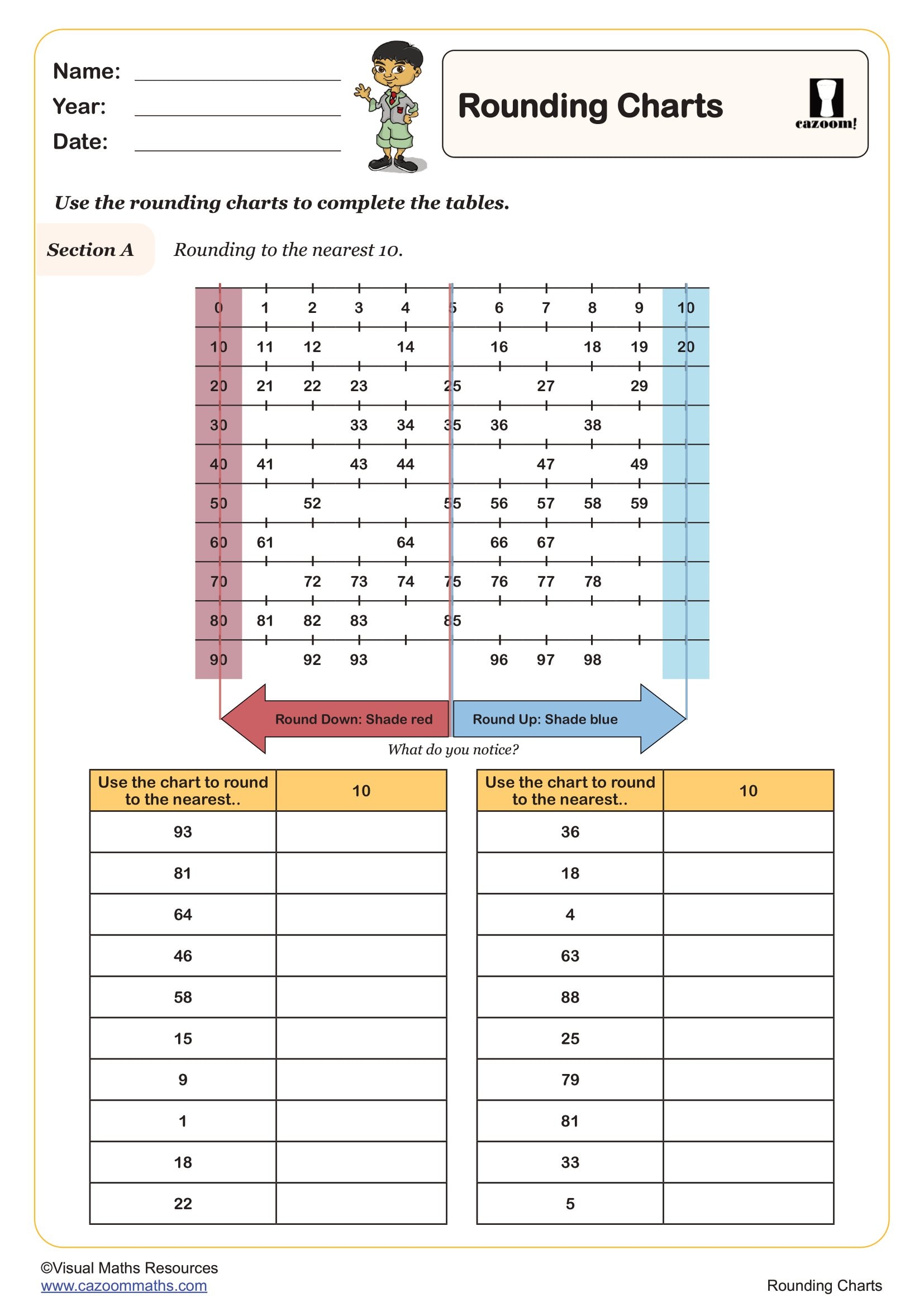
Rounding Numbers to the Nearest 10 Using Number Lines (A)
Year groups: 4
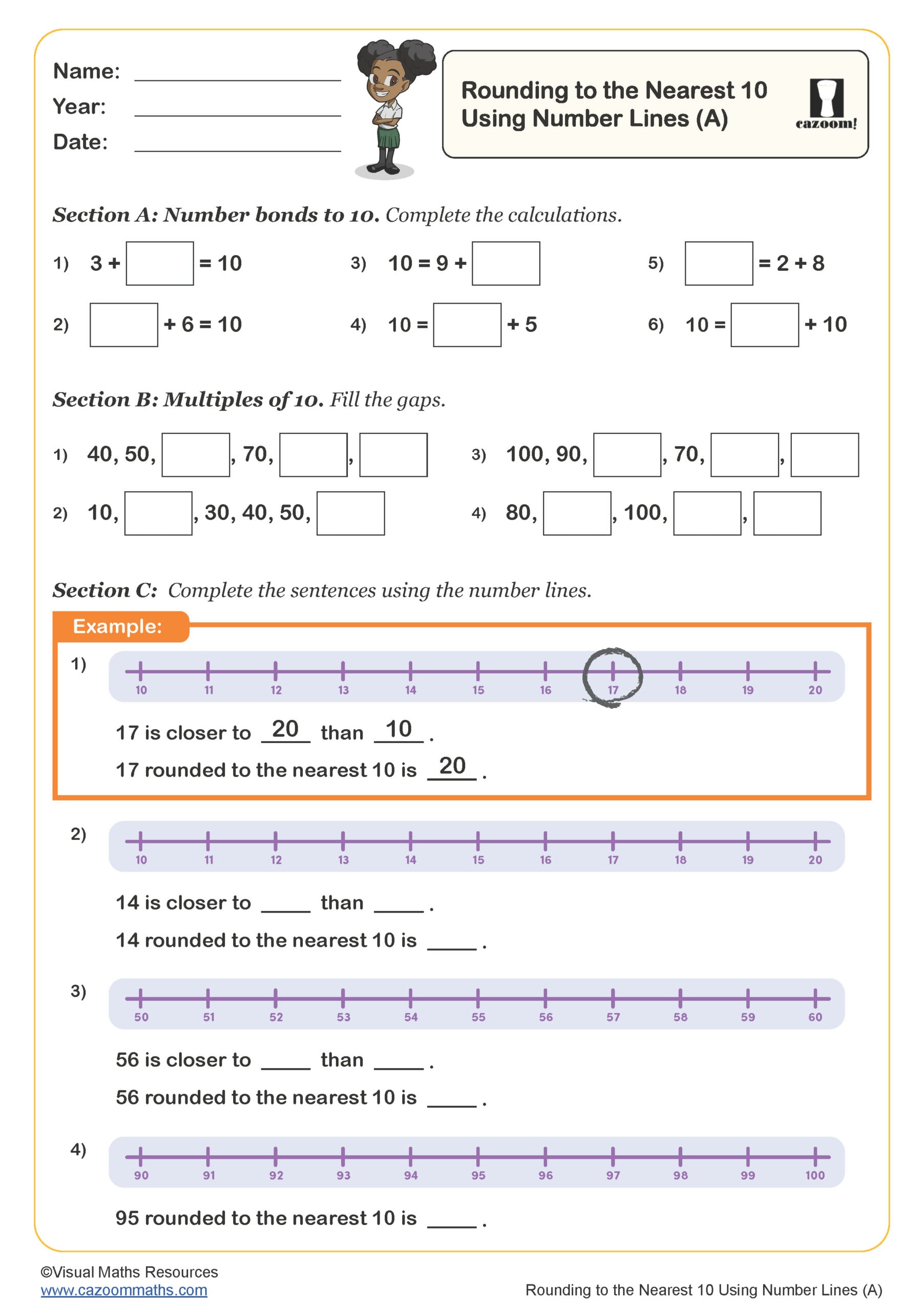
Rounding Numbers to the Nearest 10 Using Number Lines (B)
Year groups: 4
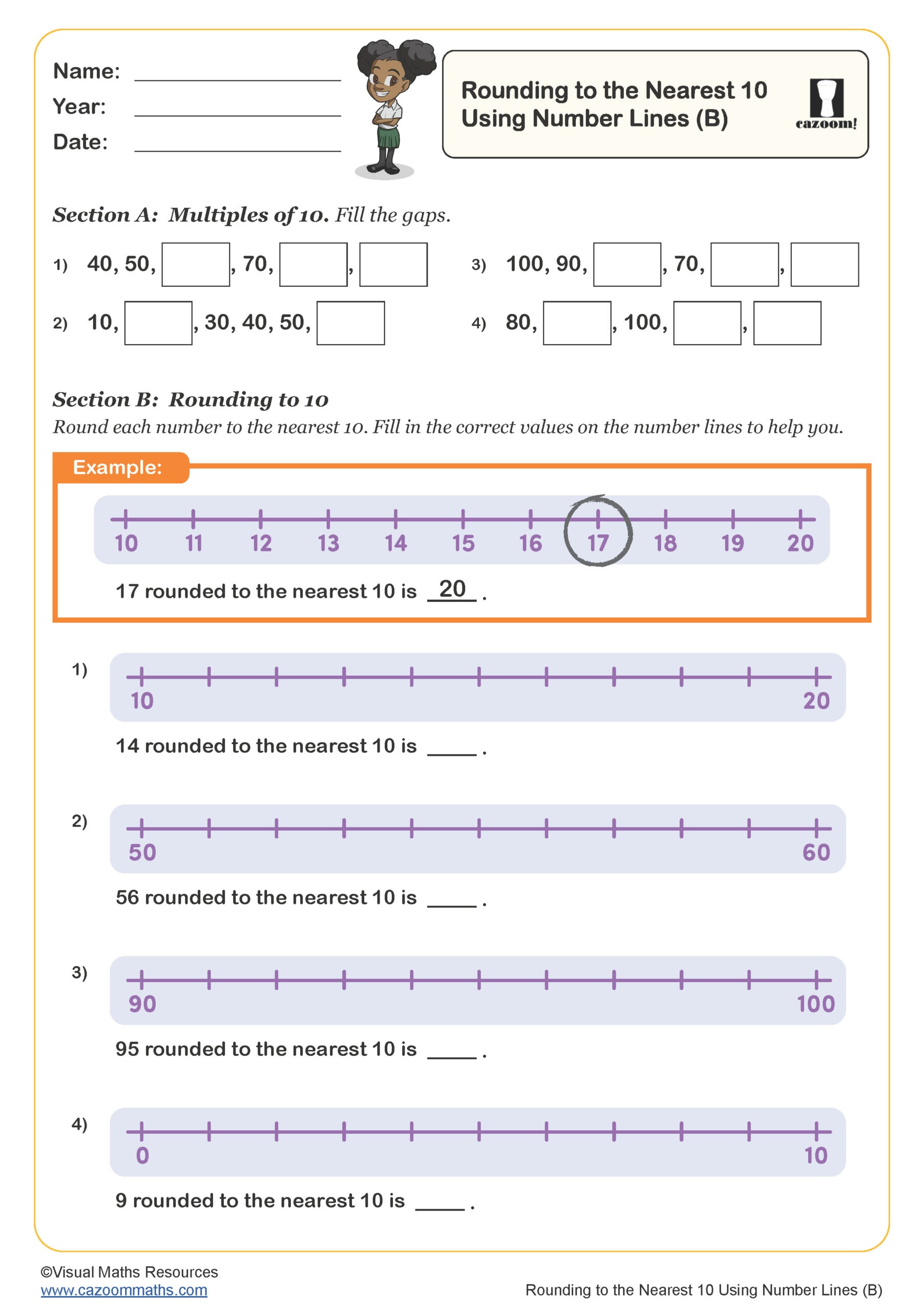
Rounding Numbers to the Nearest 10 Using Number Lines (C)
Year groups: 4
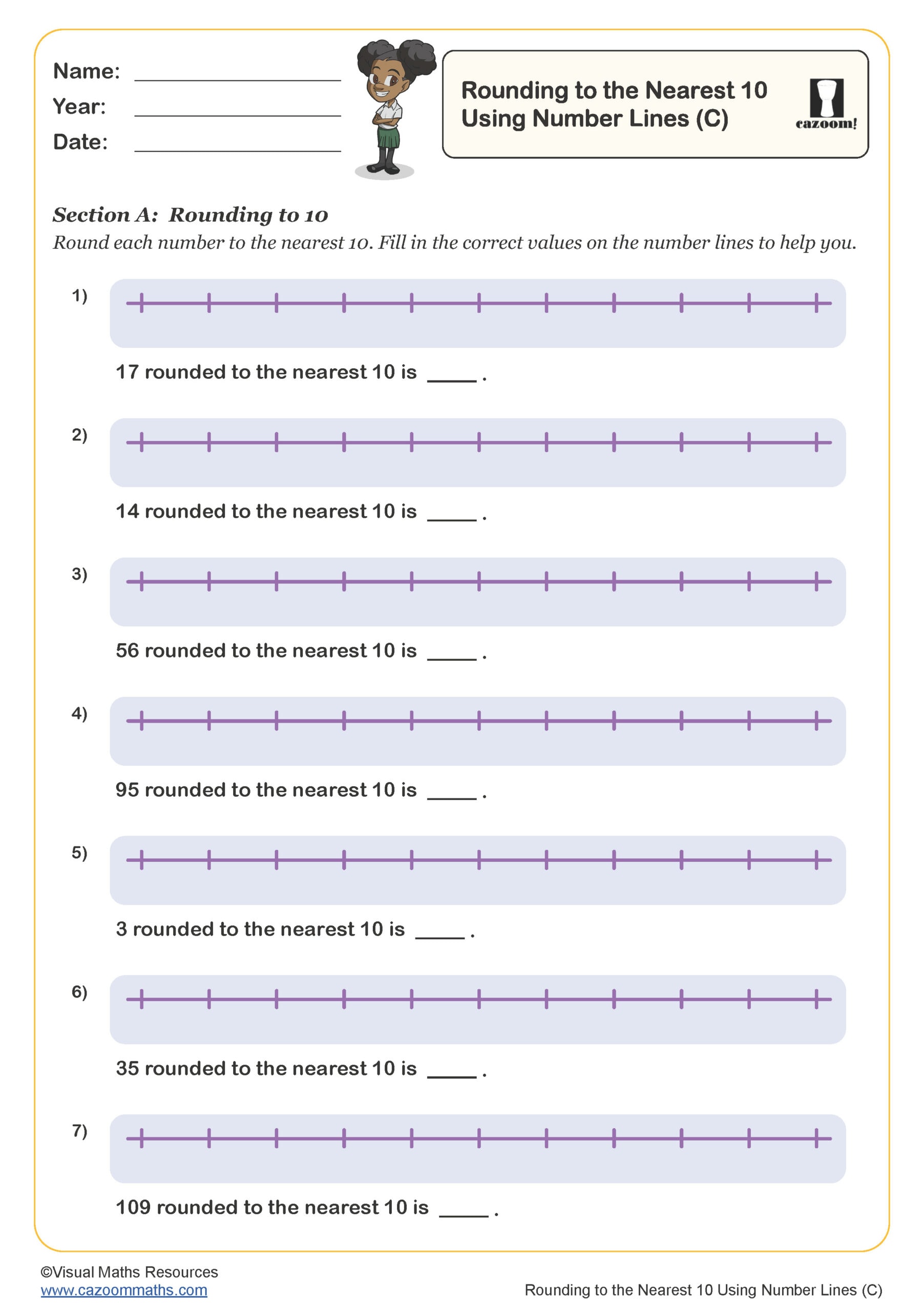
Rounding Numbers to the Nearest 100 Using Number Lines (A)
Year groups: 4
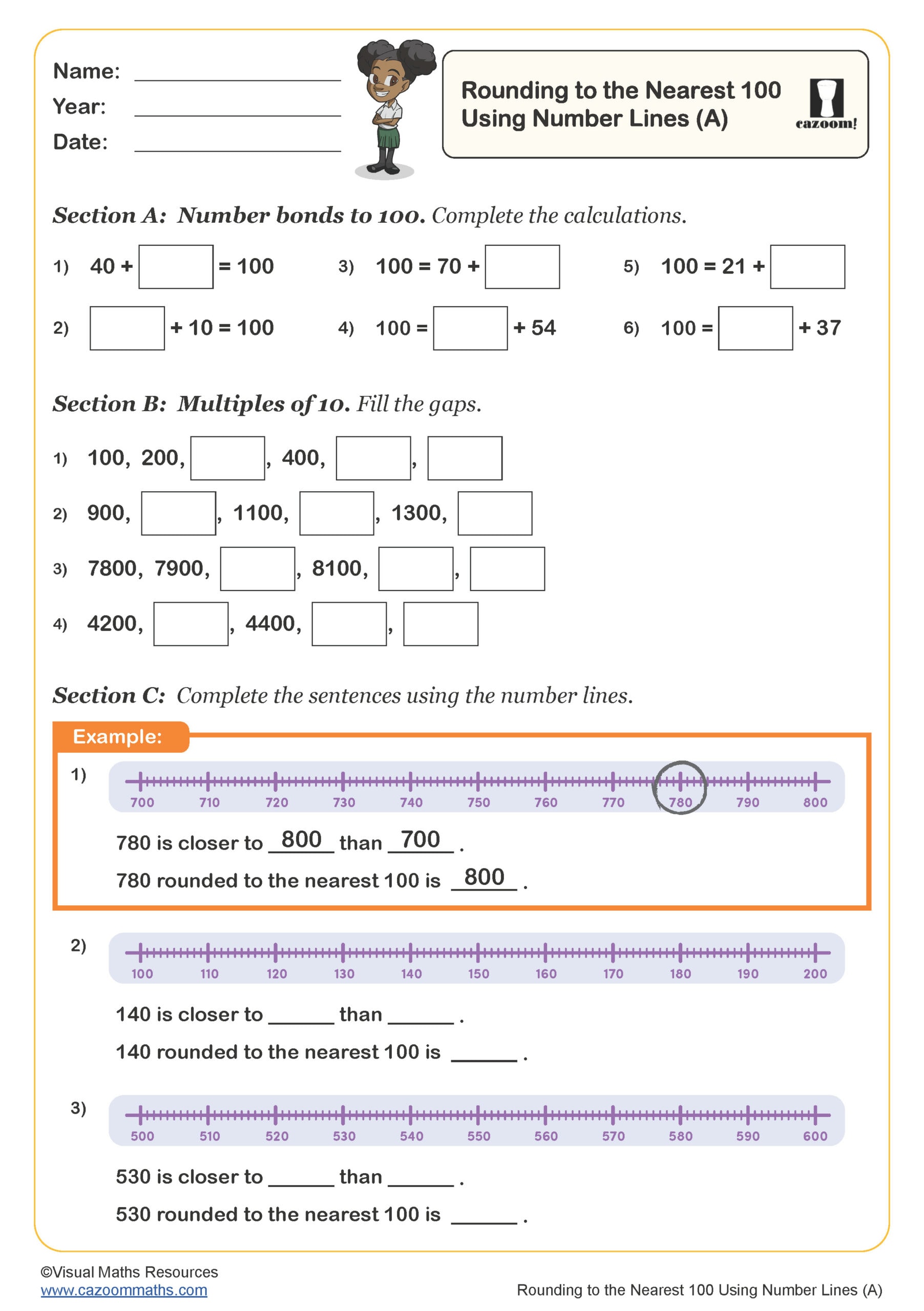
Rounding Numbers to the Nearest 100 Using Number Lines (B)
Year groups: 4
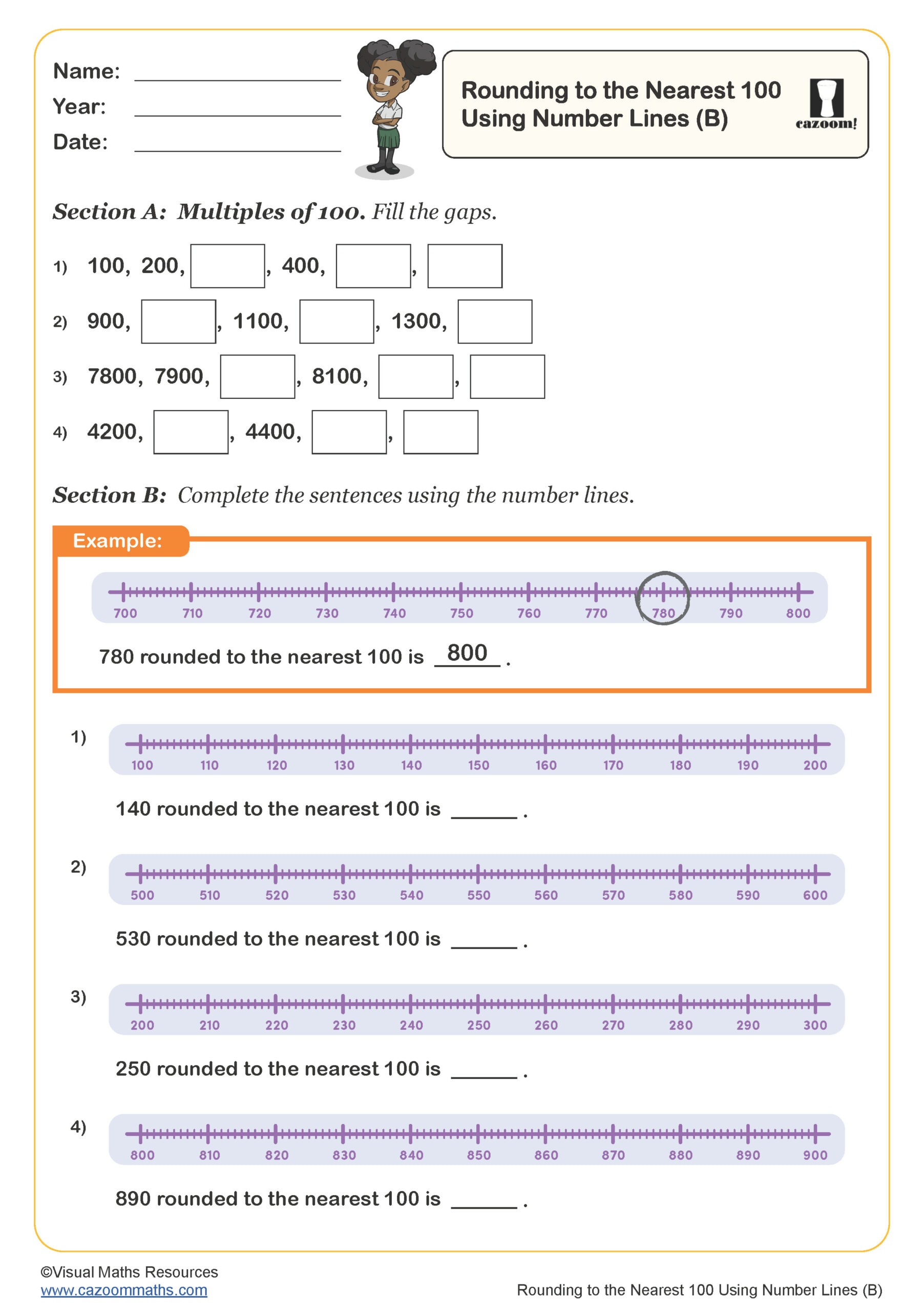
Rounding Numbers to the Nearest 100 Using Number Lines (C)
Year groups: 4
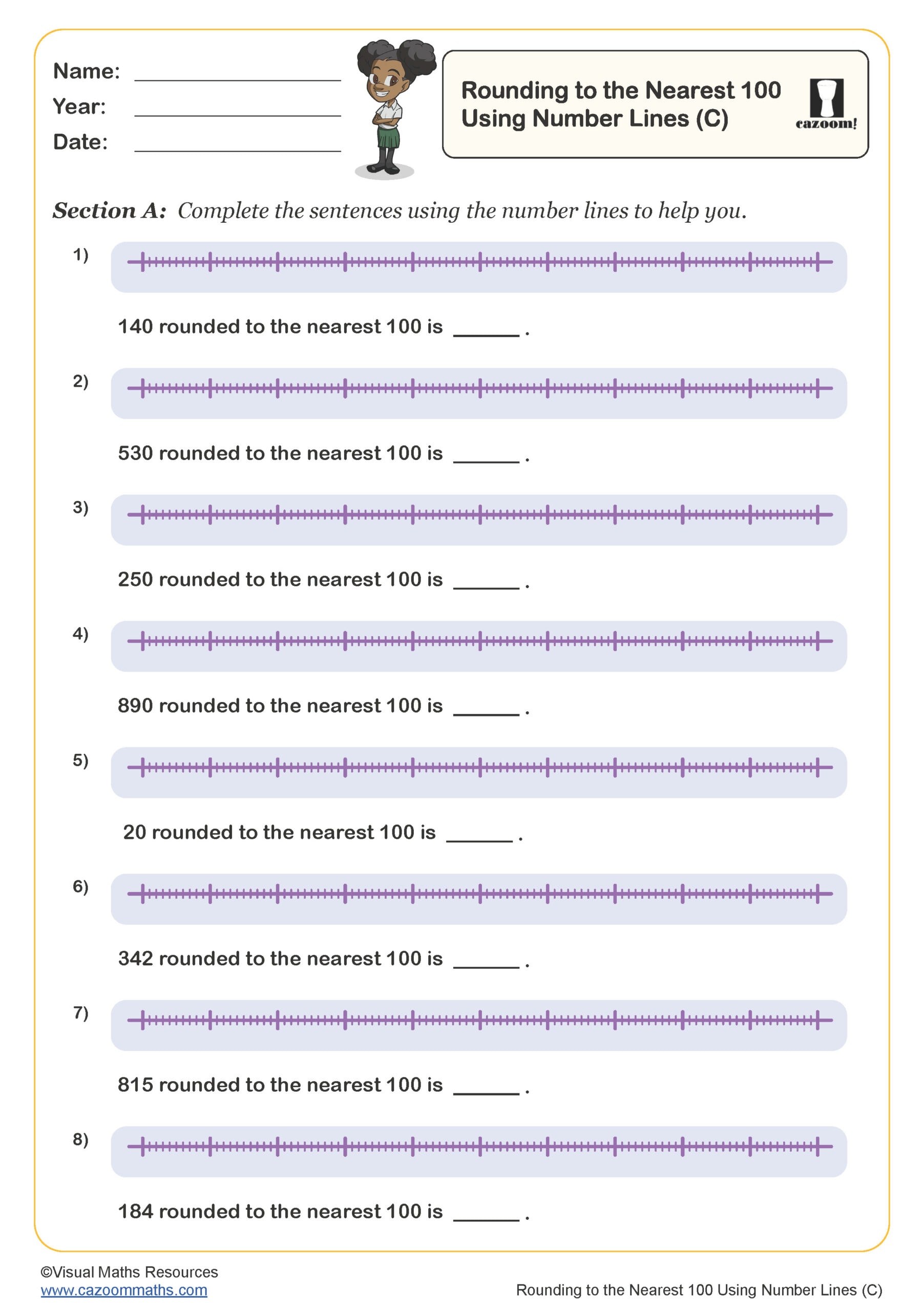
Rounding to the Nearest Multiple of 1,000
Year groups: 4
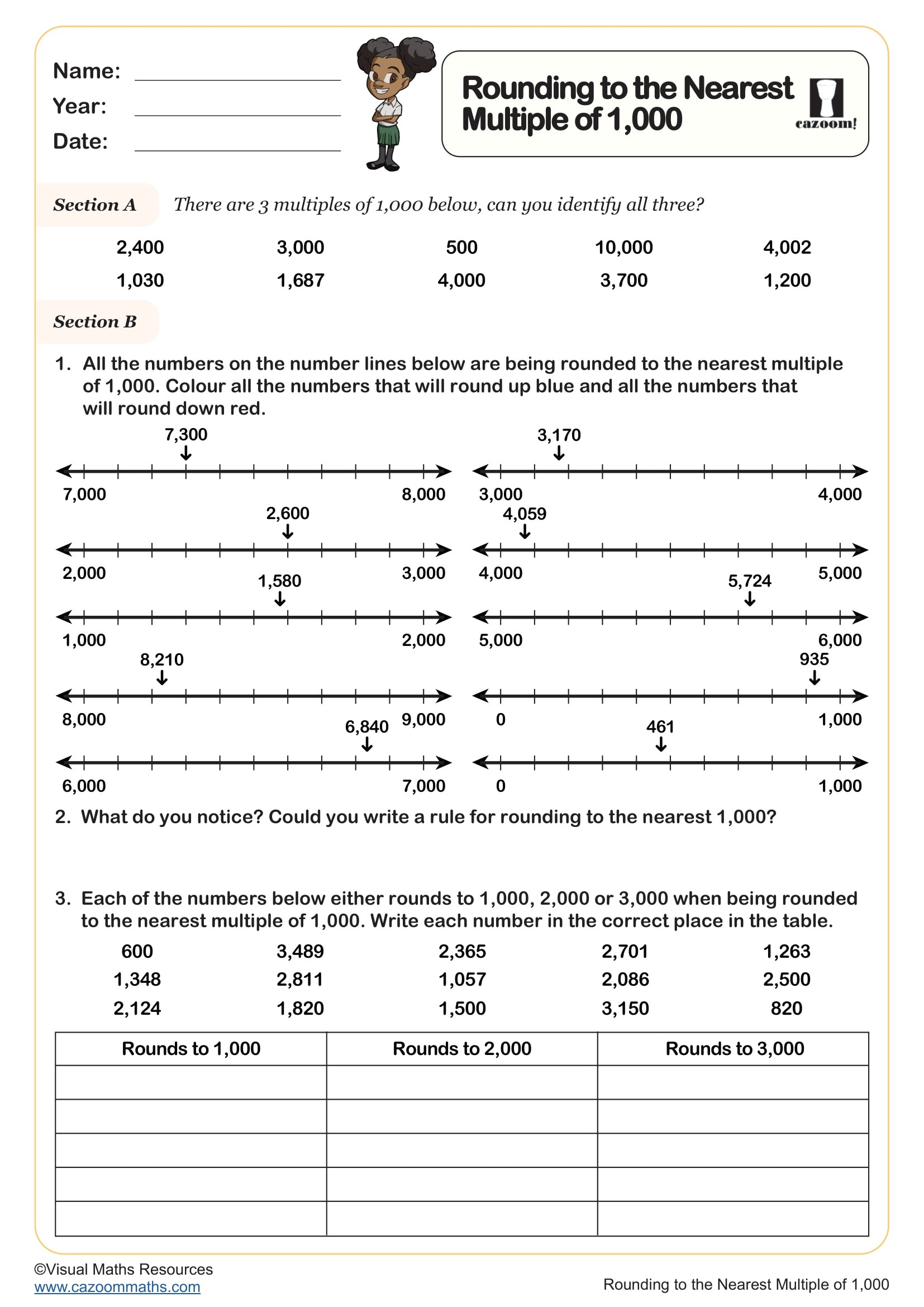
Rounding to Whole Numbers (A)
Year groups: 4
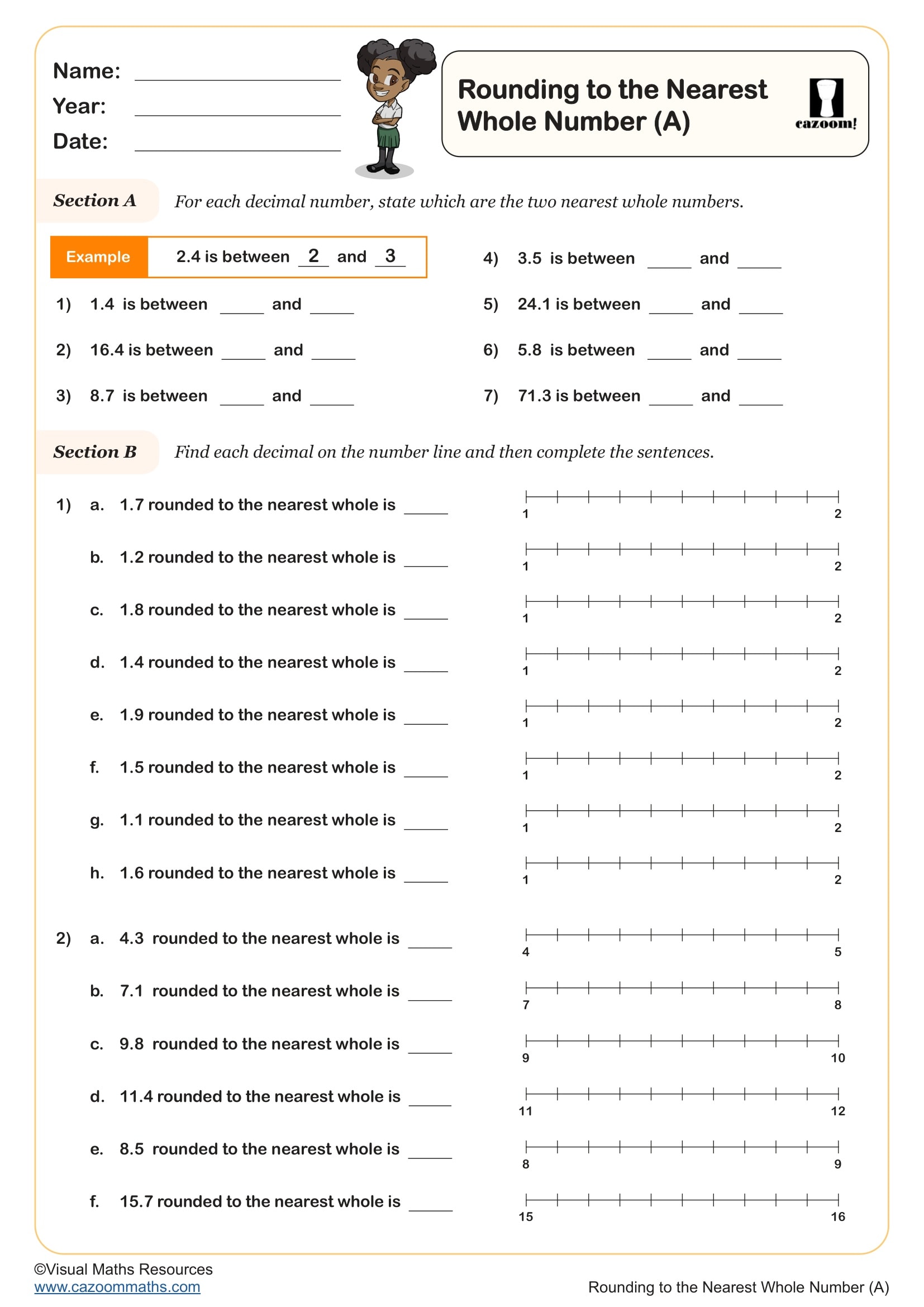
Comparing Temperatures
Year groups: 5
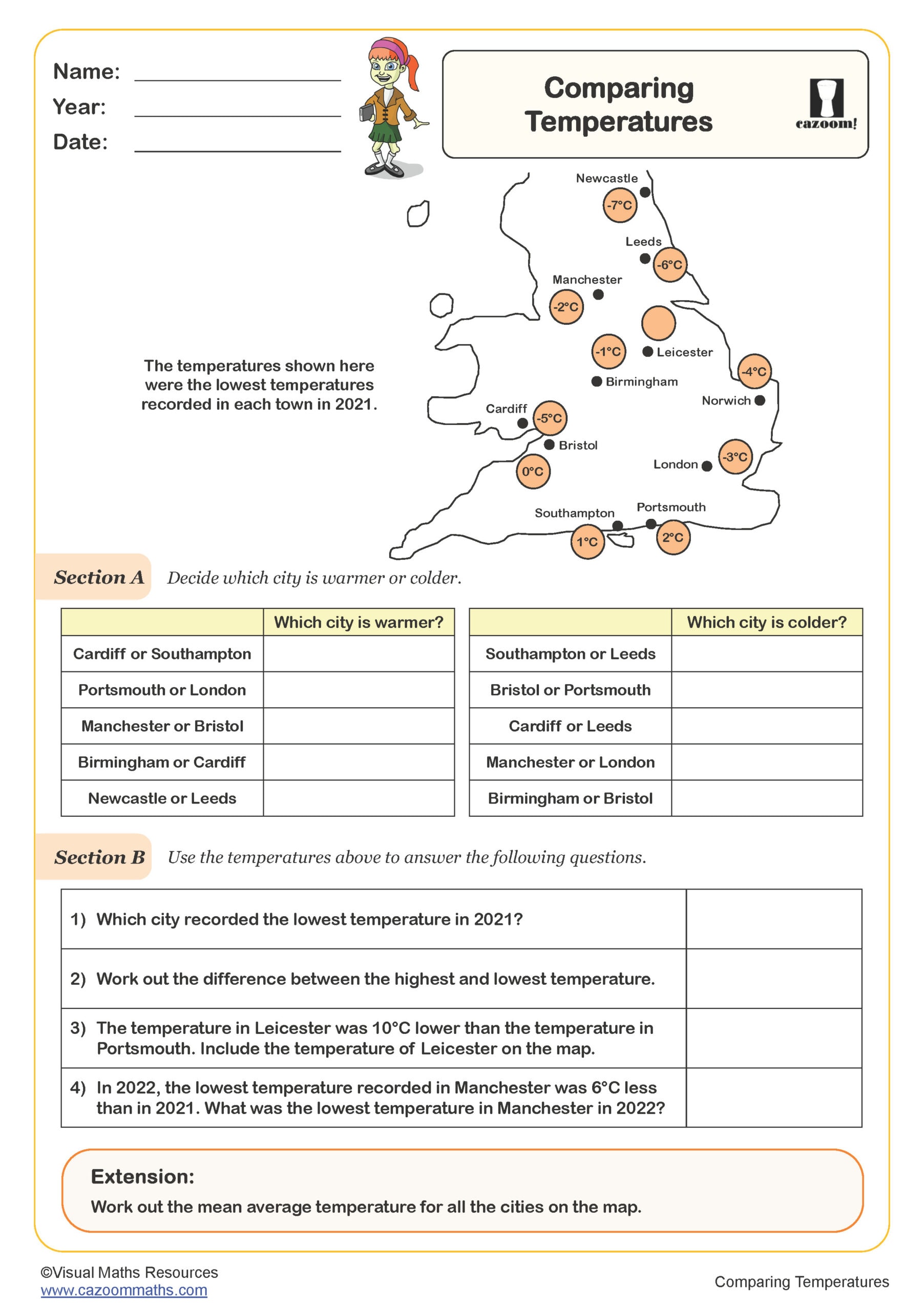
Decimal Place Partitioning
Year groups: 5
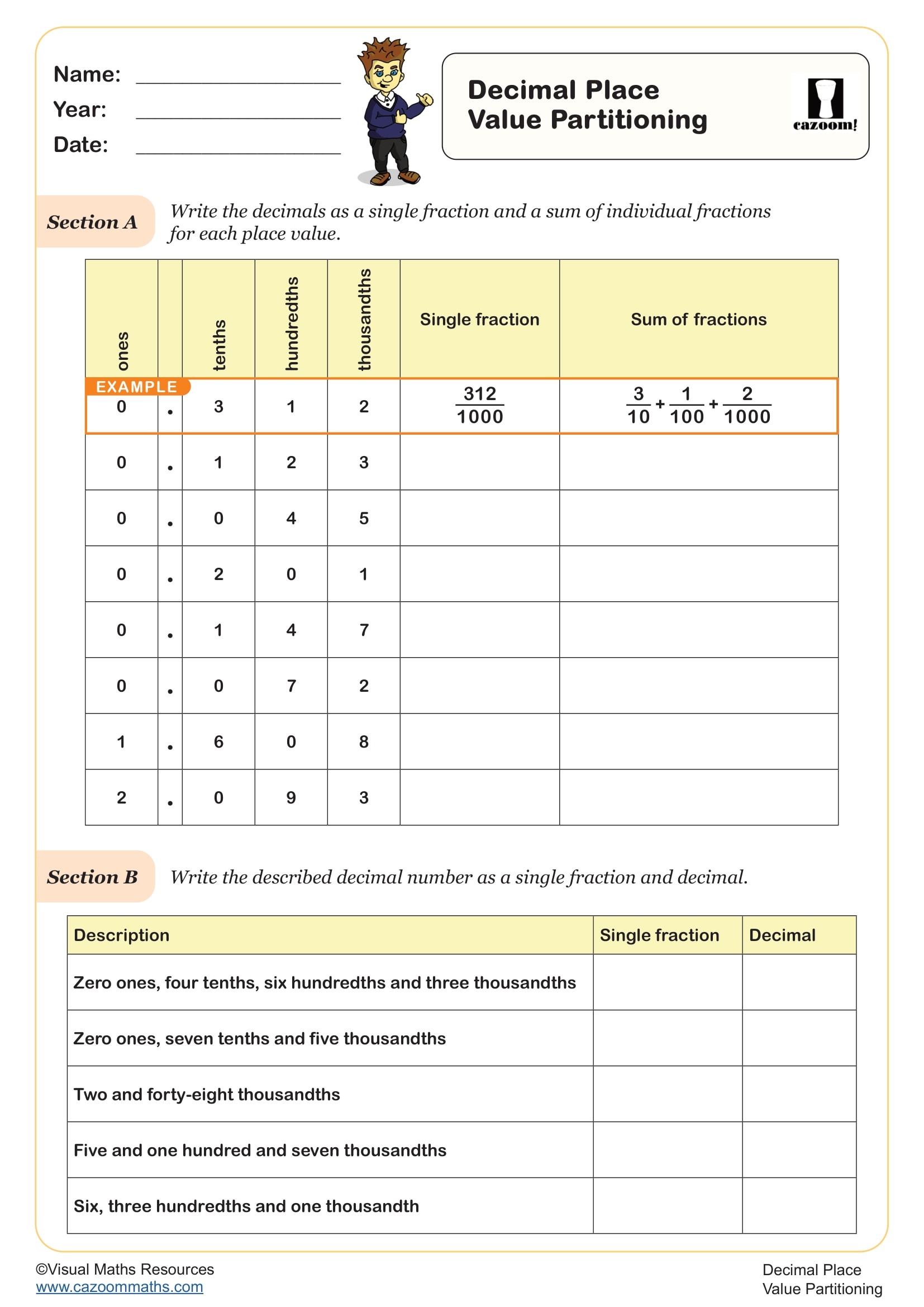
Decimal Place Value - Tenths, Hundredths and Thousandths
Year groups: 5
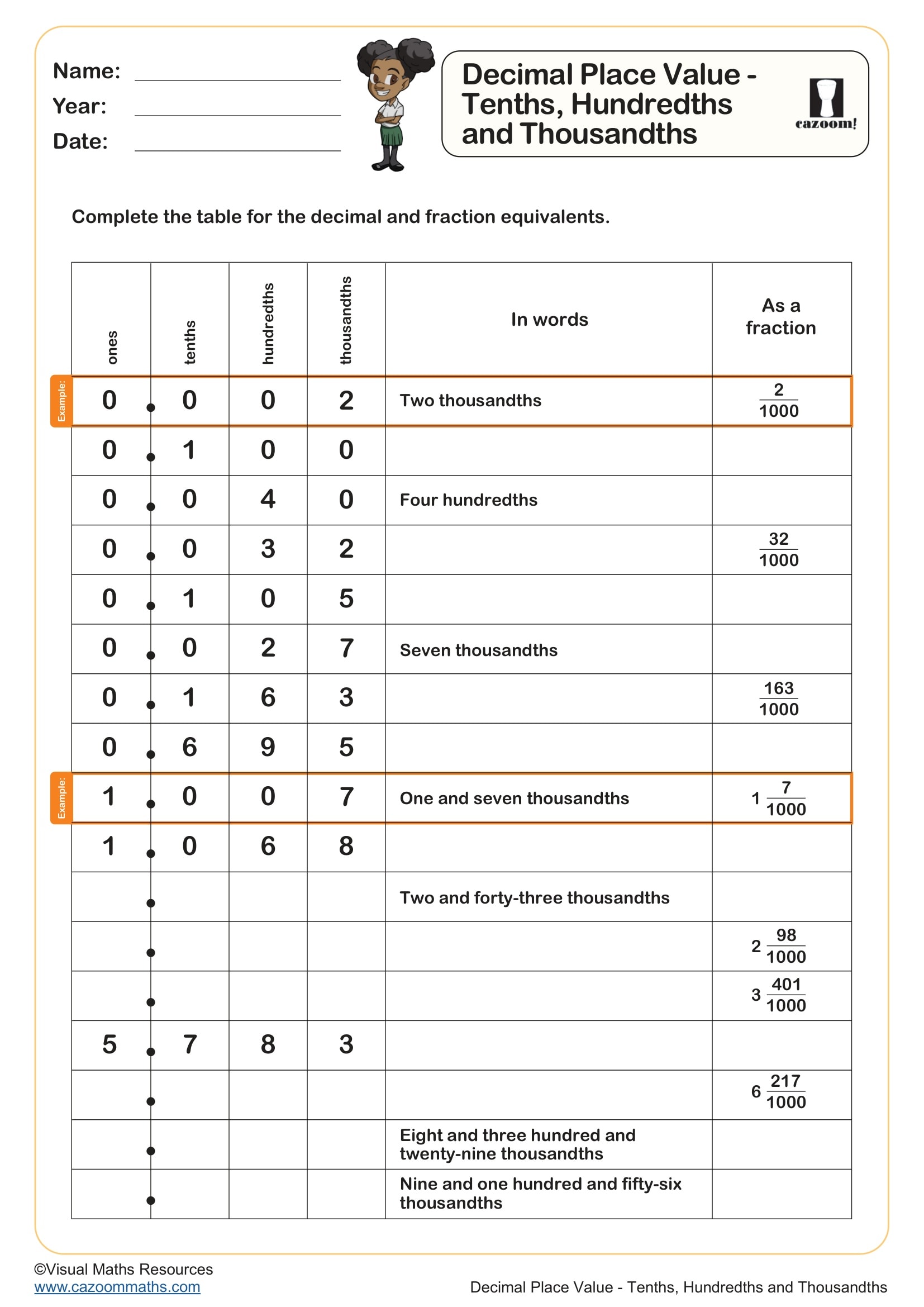
Numbers to 1,000,000
Year groups: 5
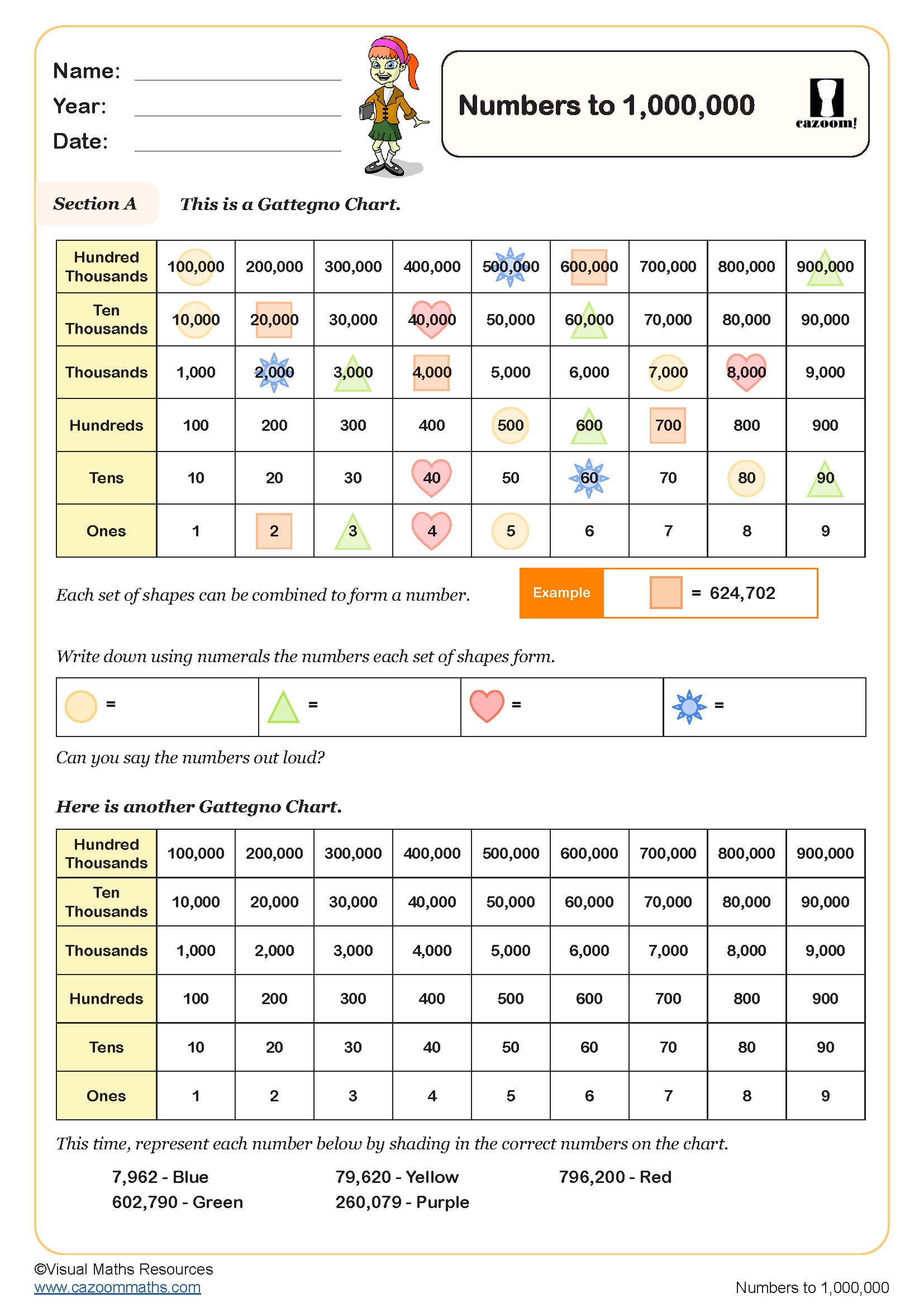
Partitioning Numbers to 1,000,000
Year groups: 5
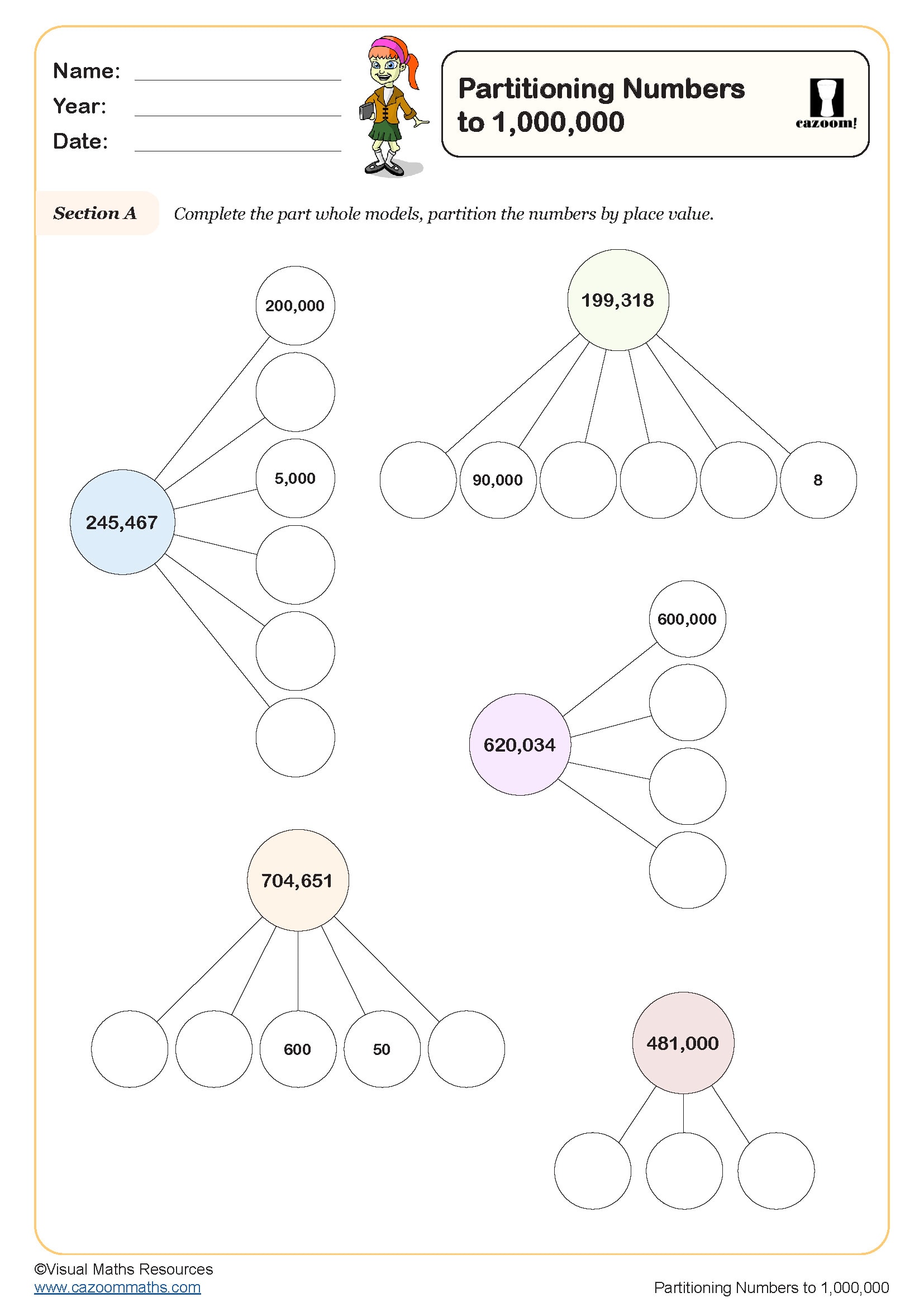
Roman Numerals (D)
Year groups: 5
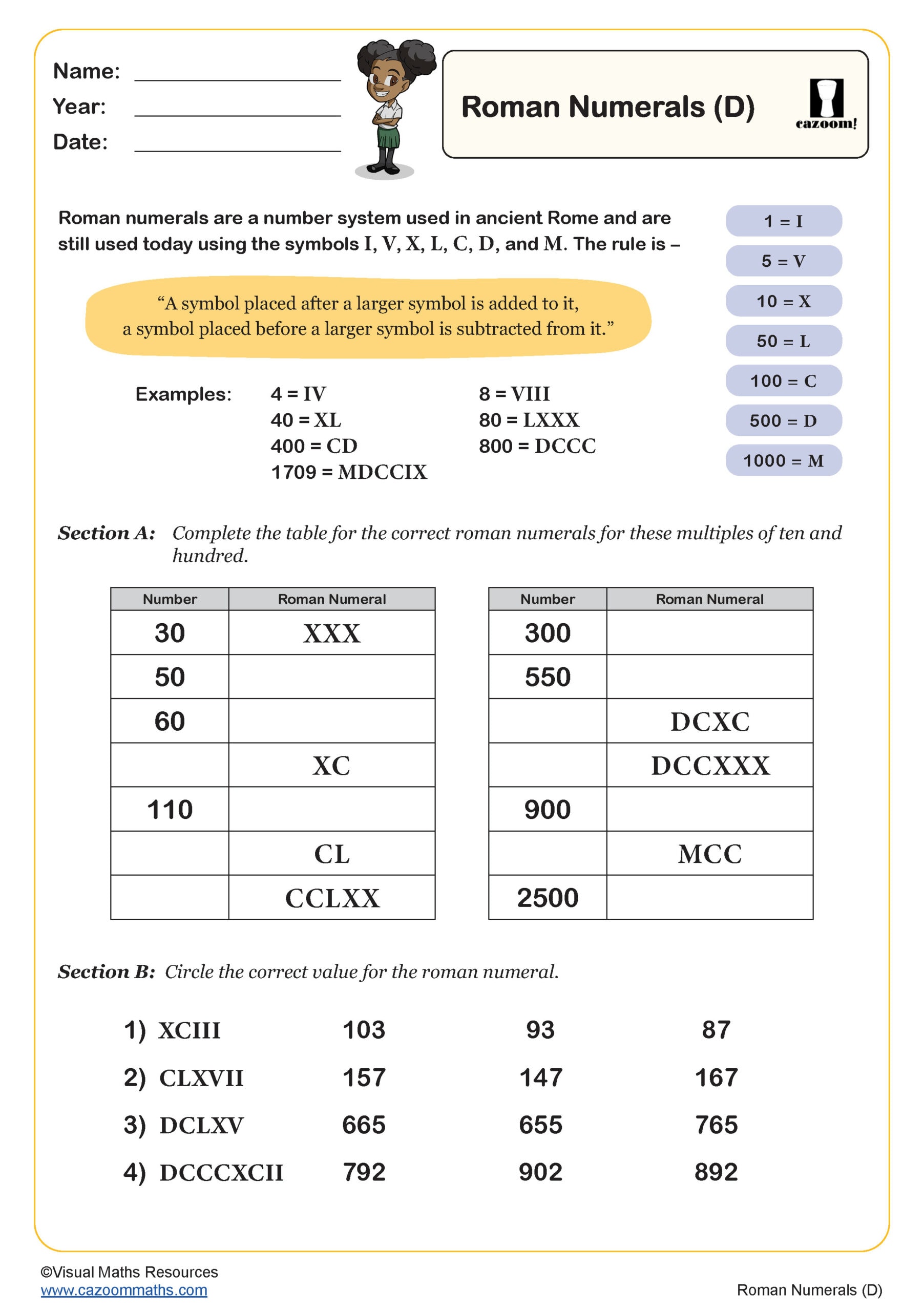
Rounding to one Decimal Place
Year groups: 5
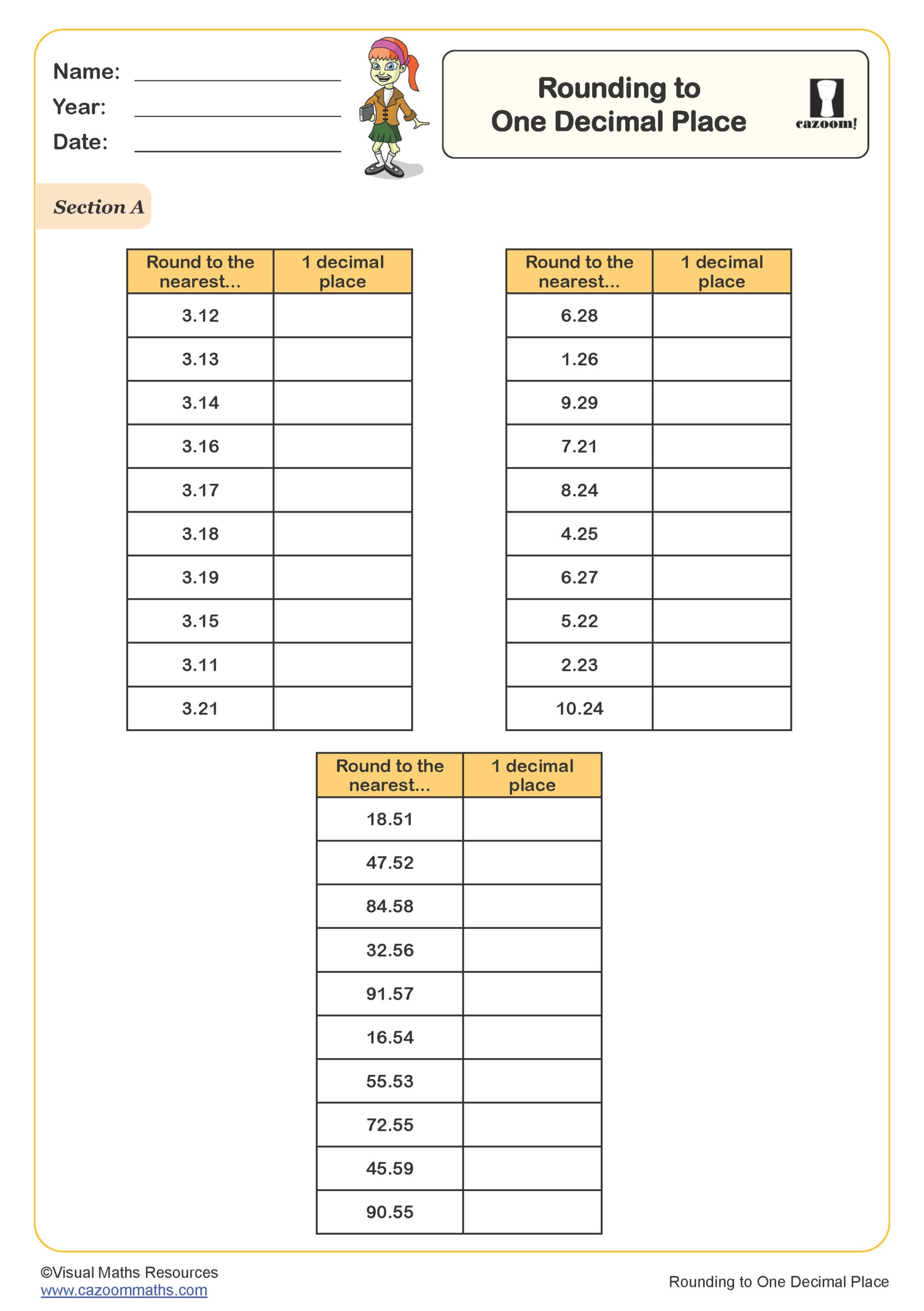
Rounding to Whole Numbers (B)
Year groups: 5
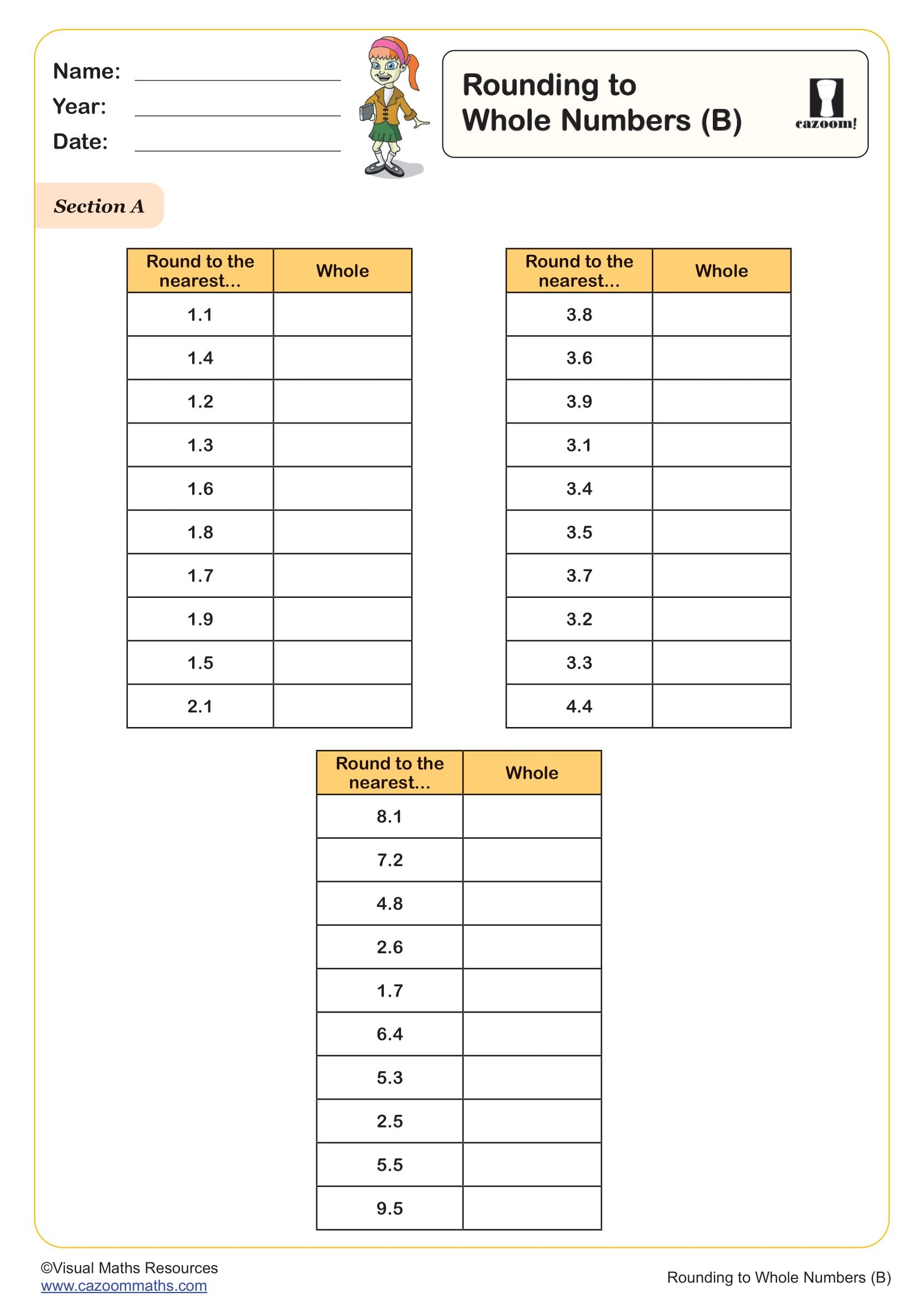
Using Place Value to Find More or Less Than A Given Number
Year groups: 5
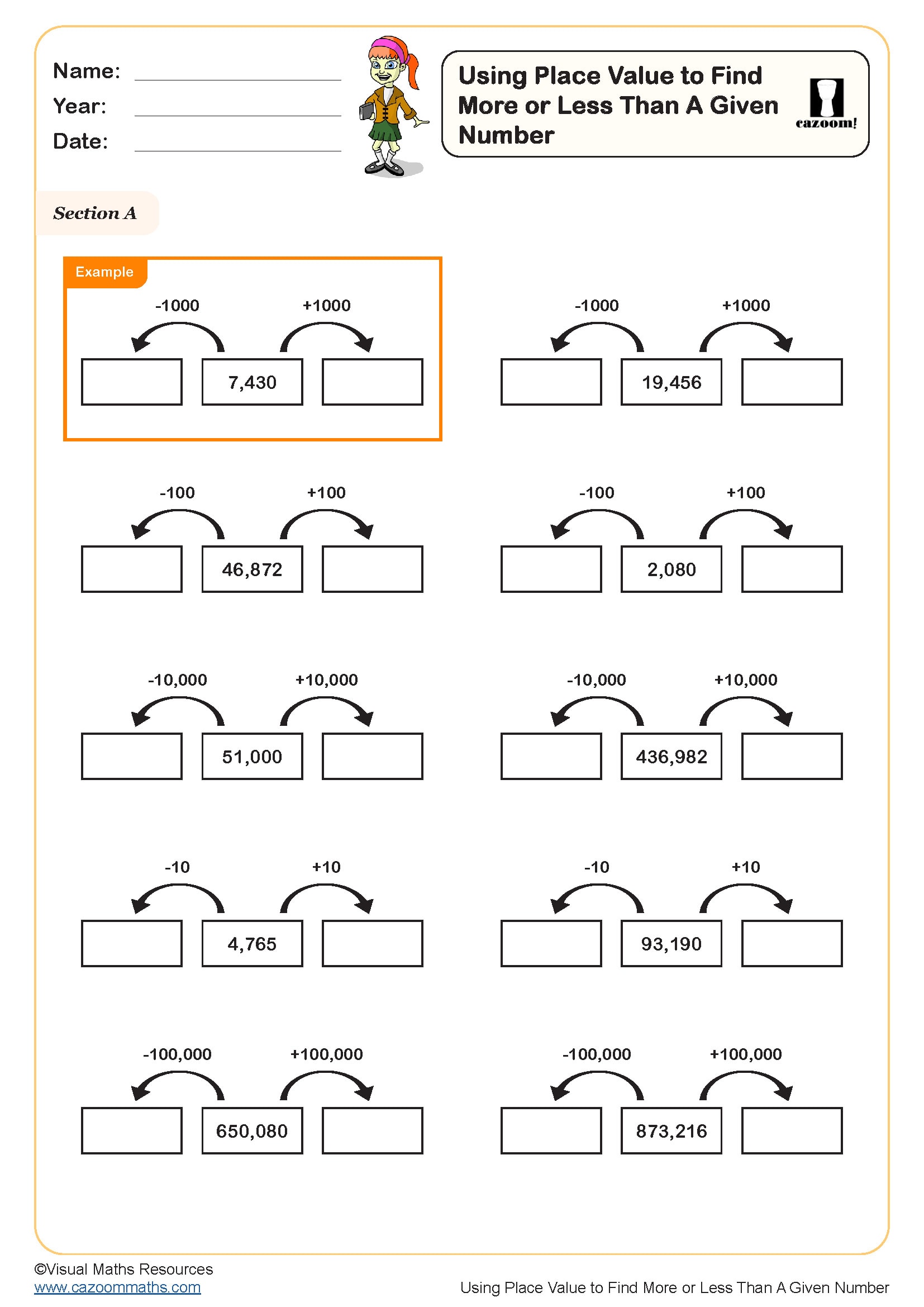
Calculations Crossing Zero (A)
Year groups: 6
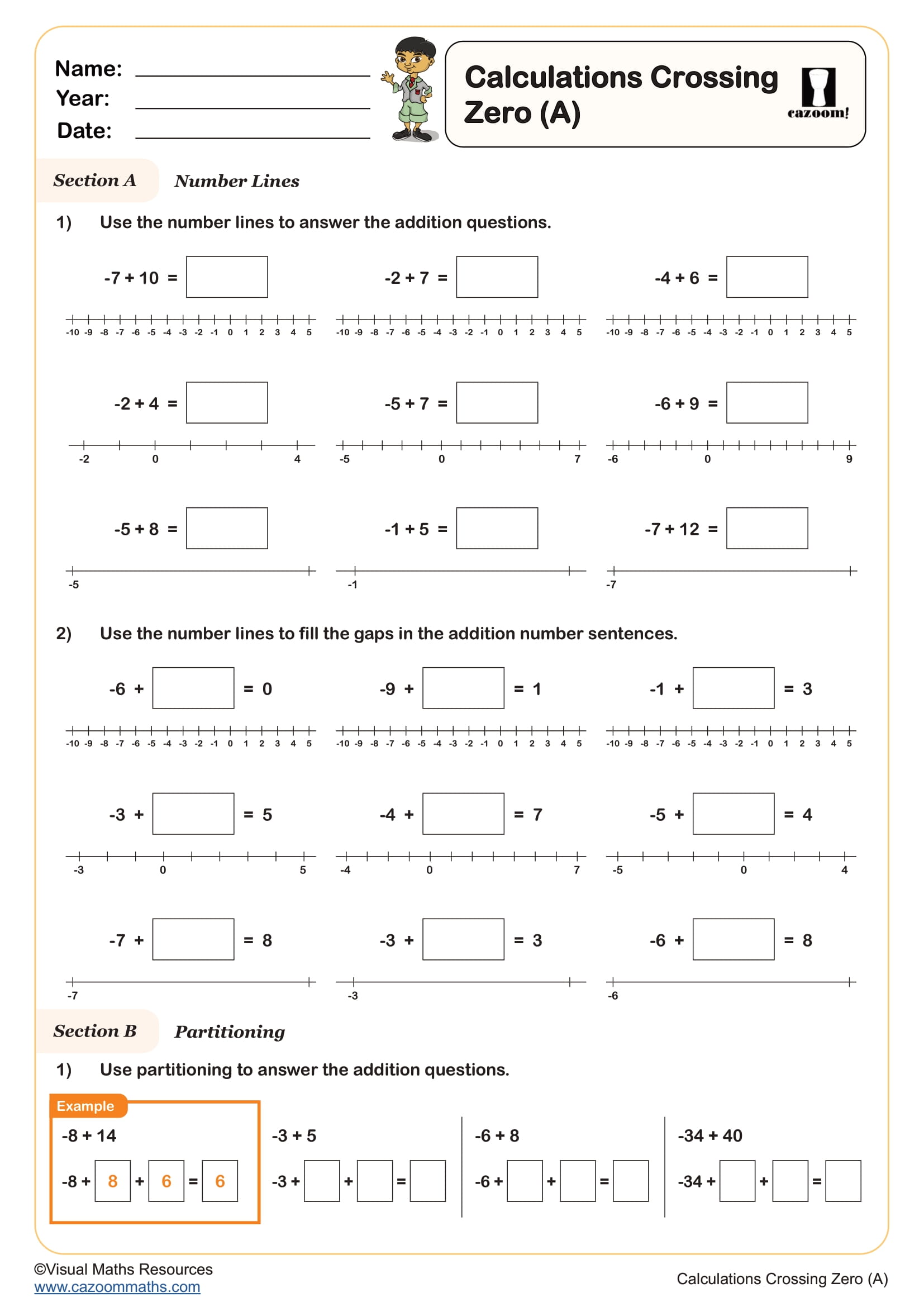
Calculations Crossing Zero (B)
Year groups: 6
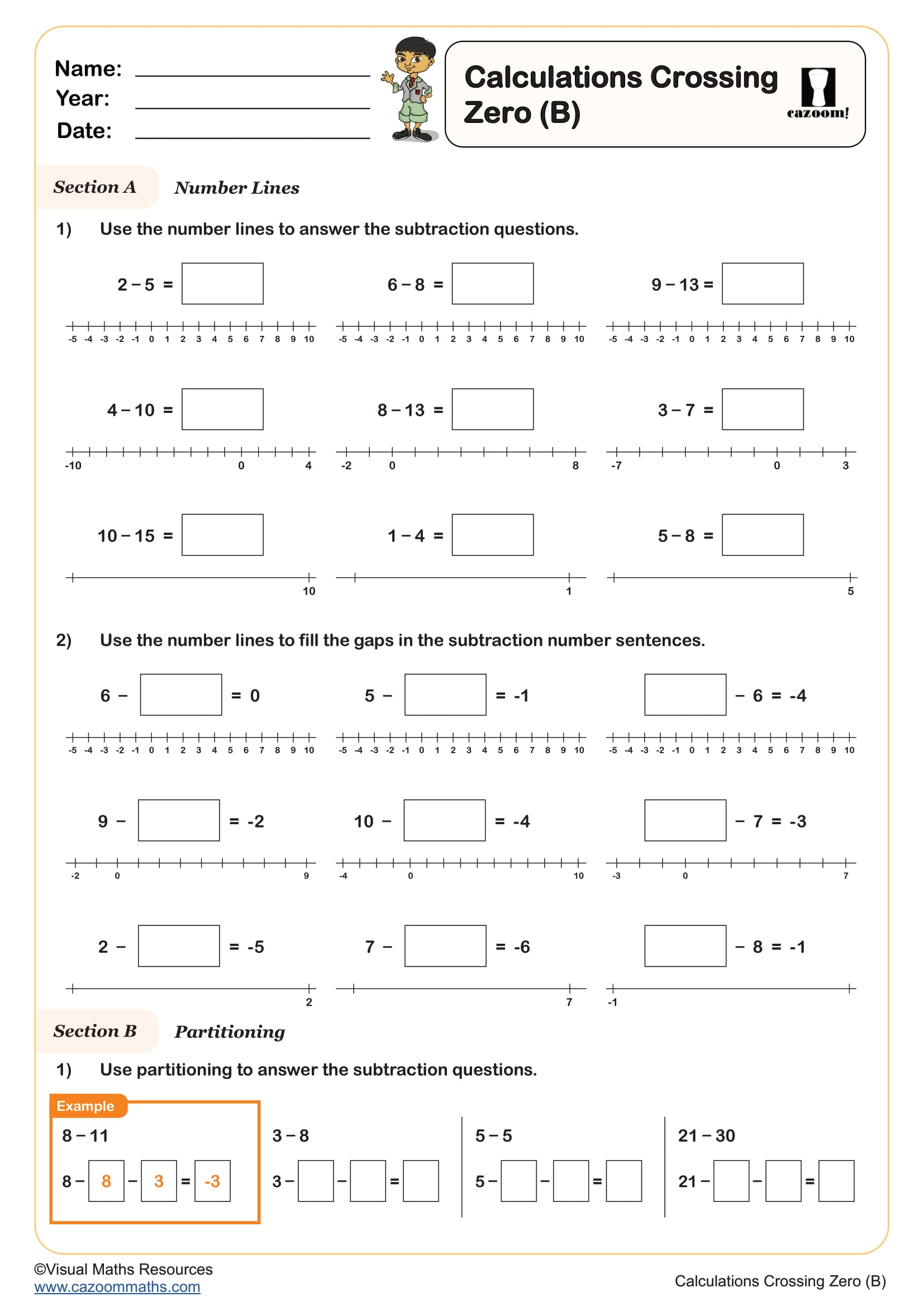
Calculations Crossing Zero (C)
Year groups: 6
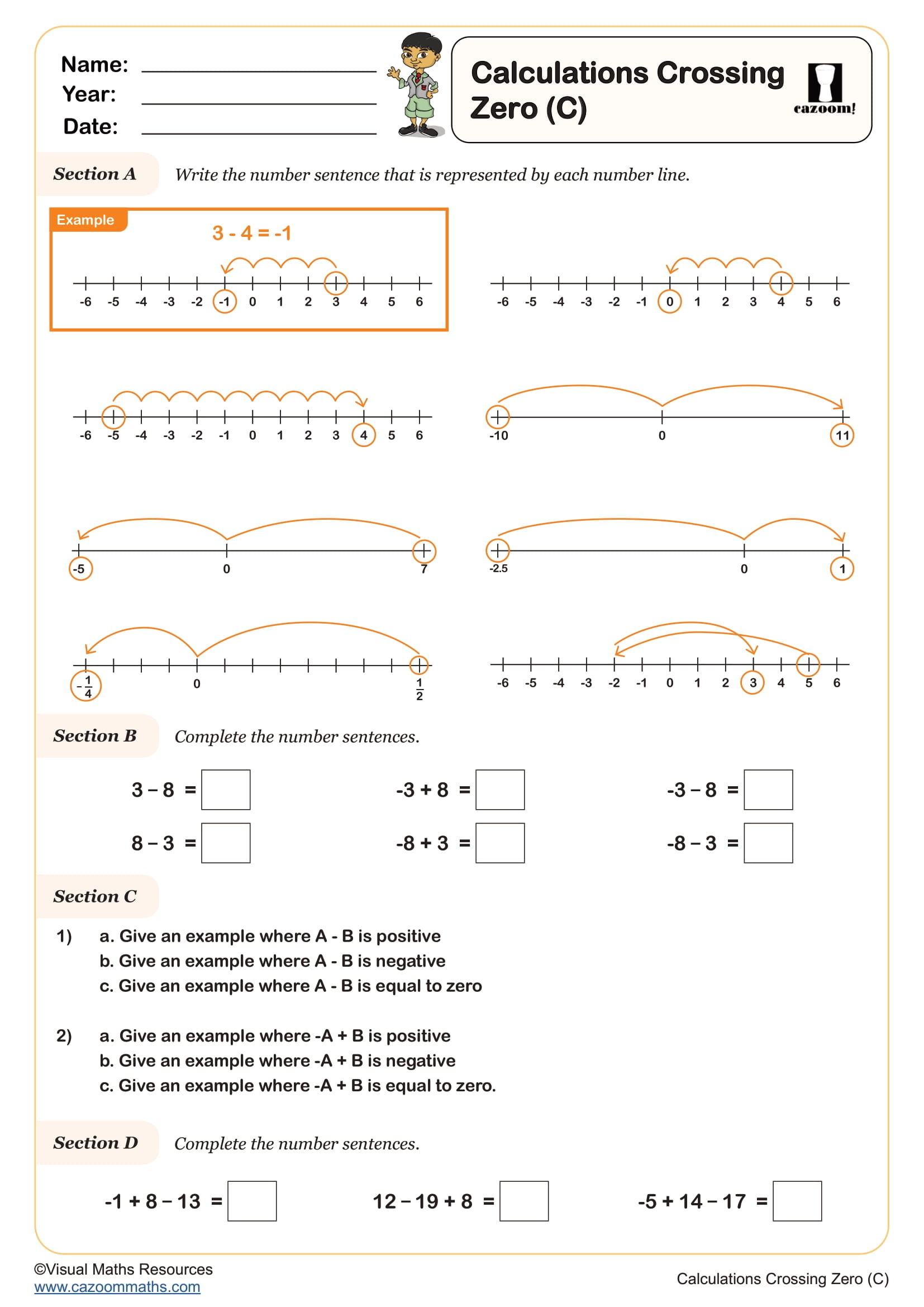
Rounding to the Nearest 100
Year groups: 6
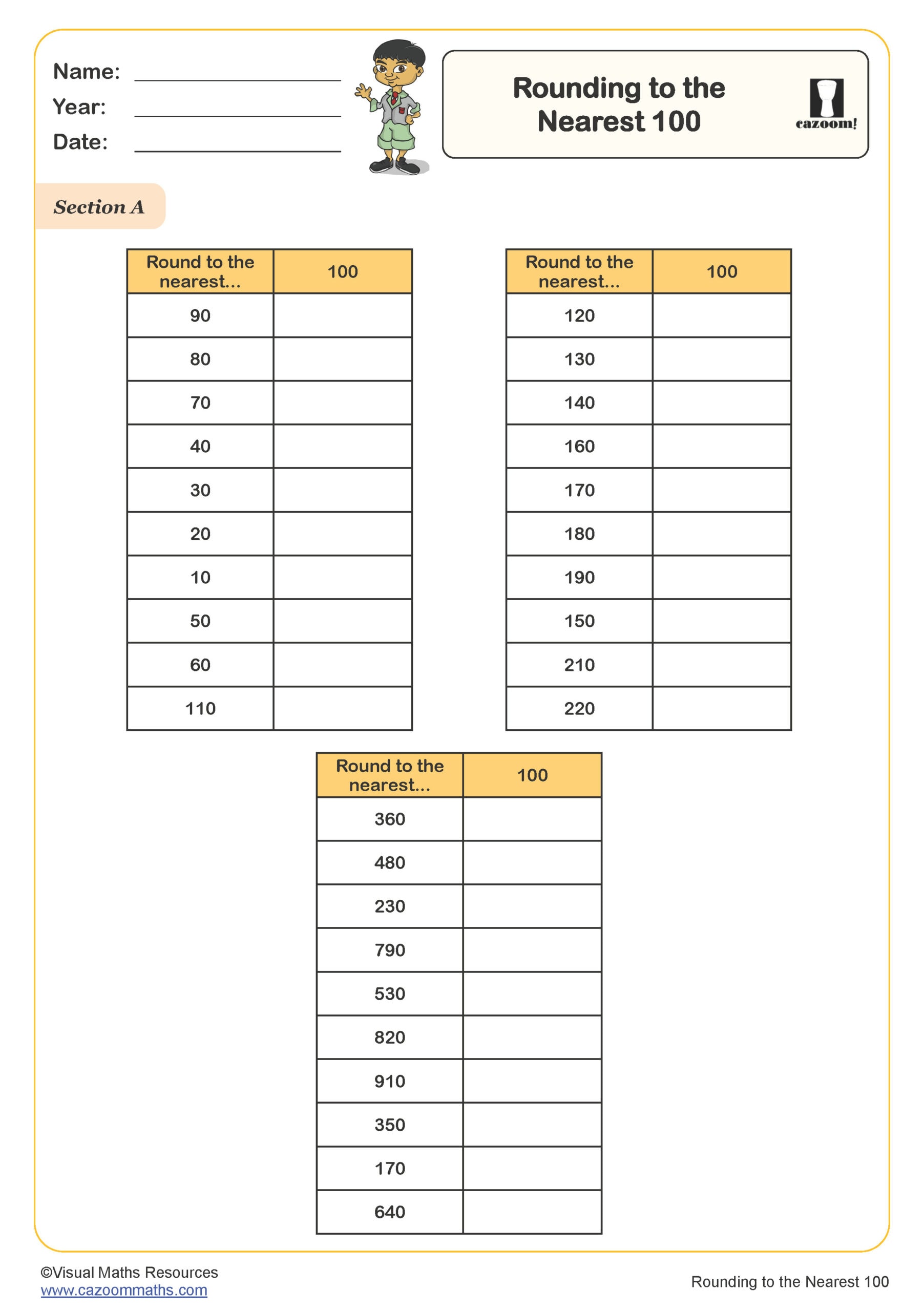
Rounding to the Nearest Ten
Year groups: 6
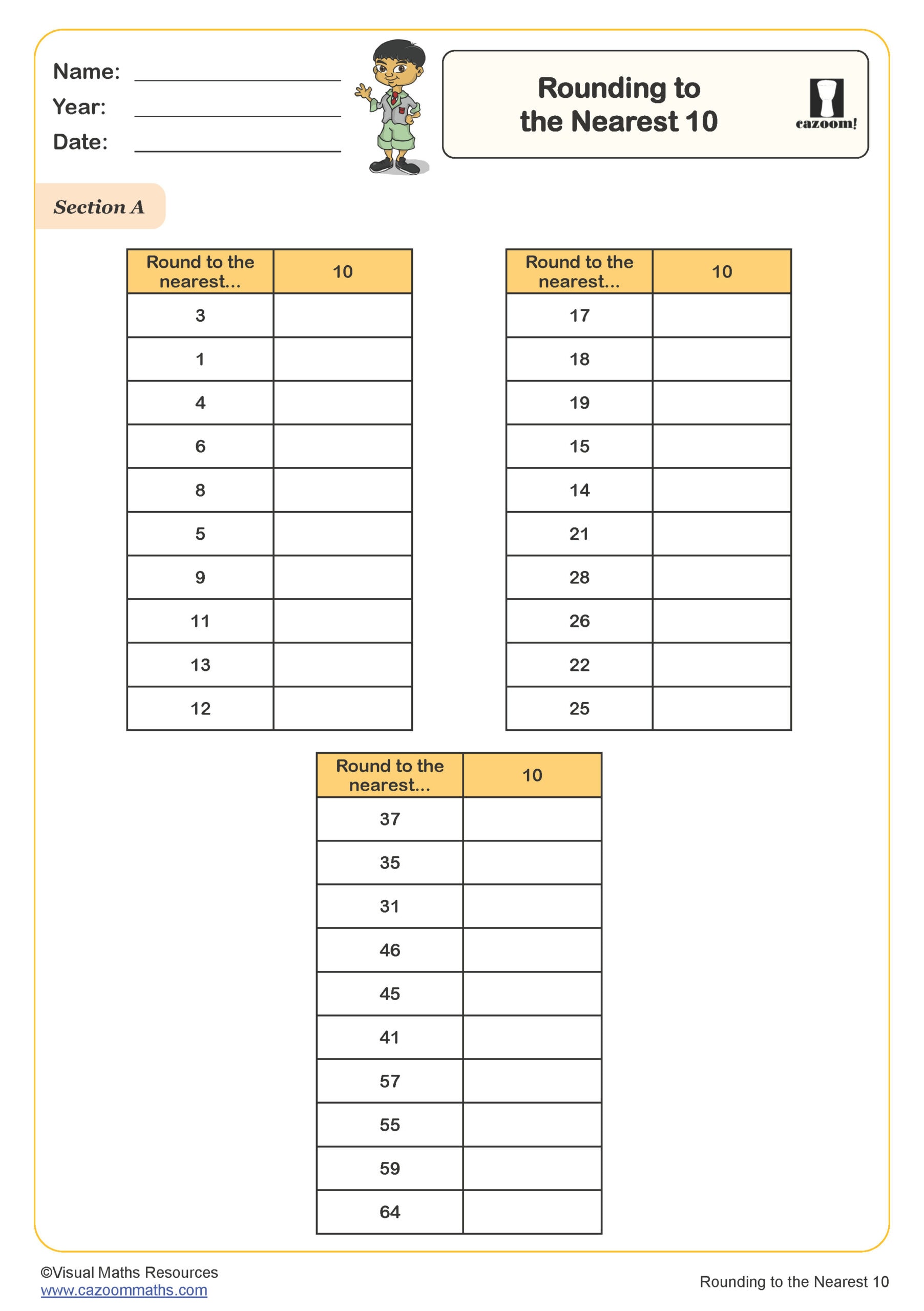
Words and Numerals
Year groups: 6
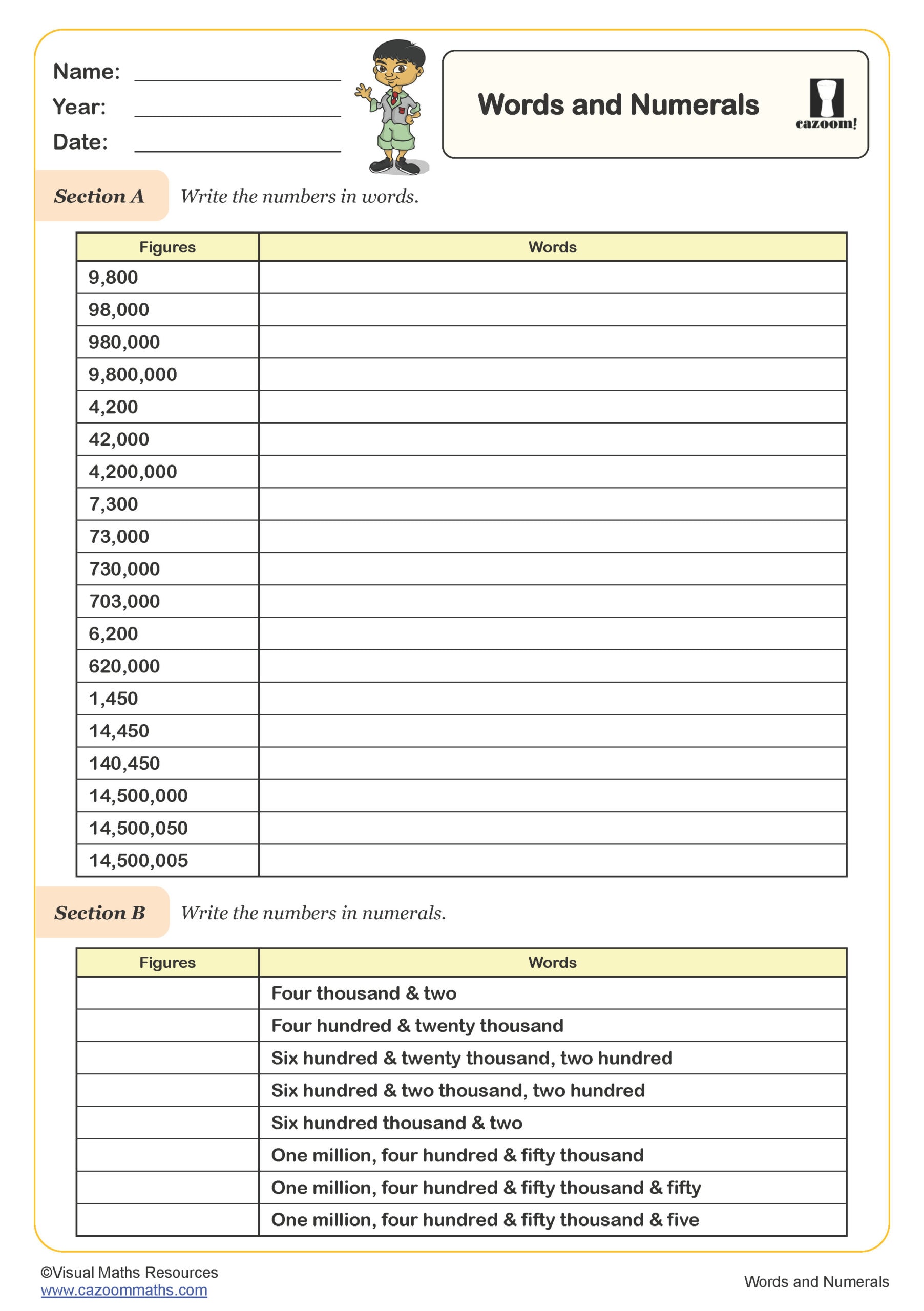
Writing numbers in numerials from words (A)
Year groups: 6
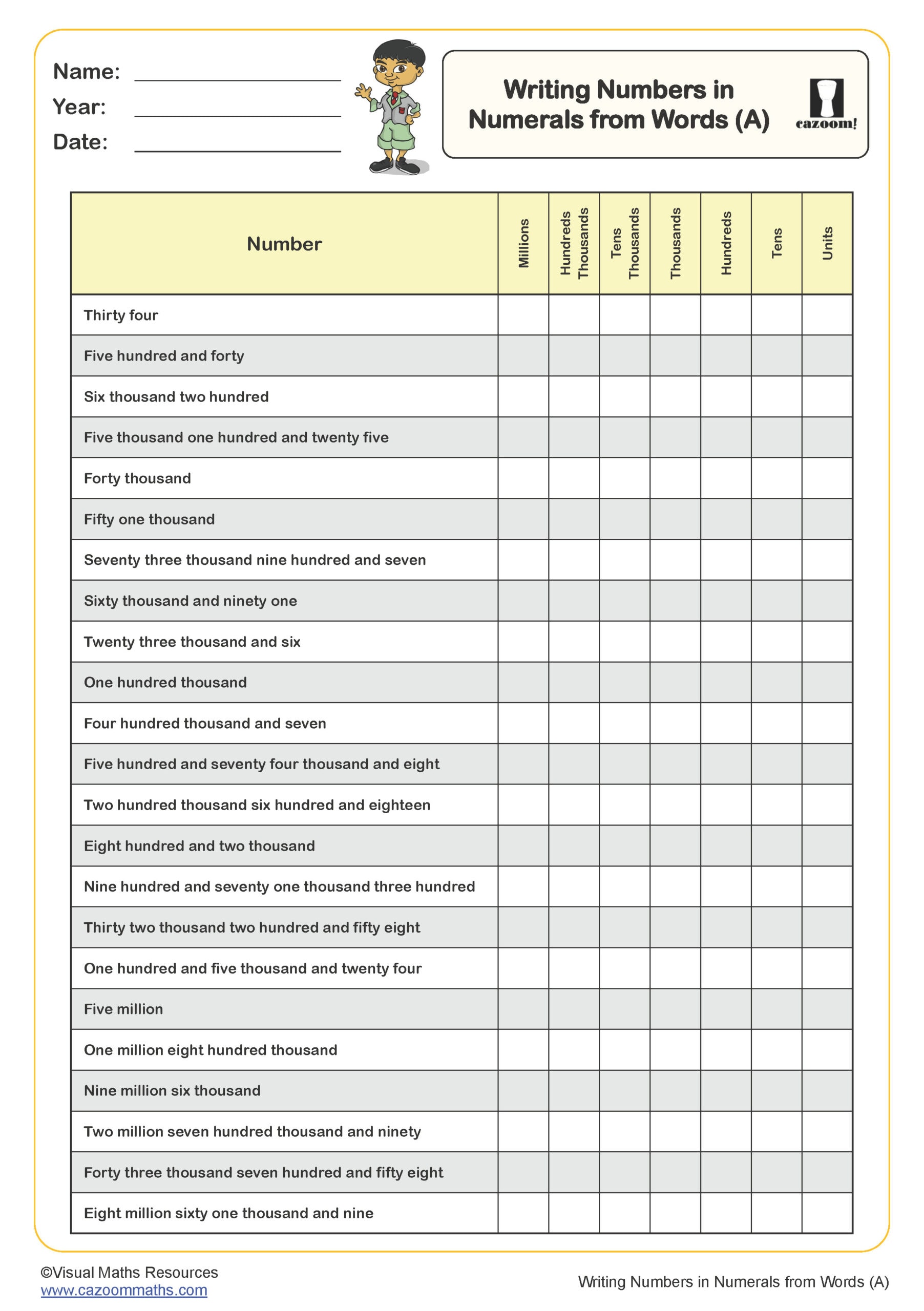
Writing numbers in numerials from words (B)
Year groups: 6
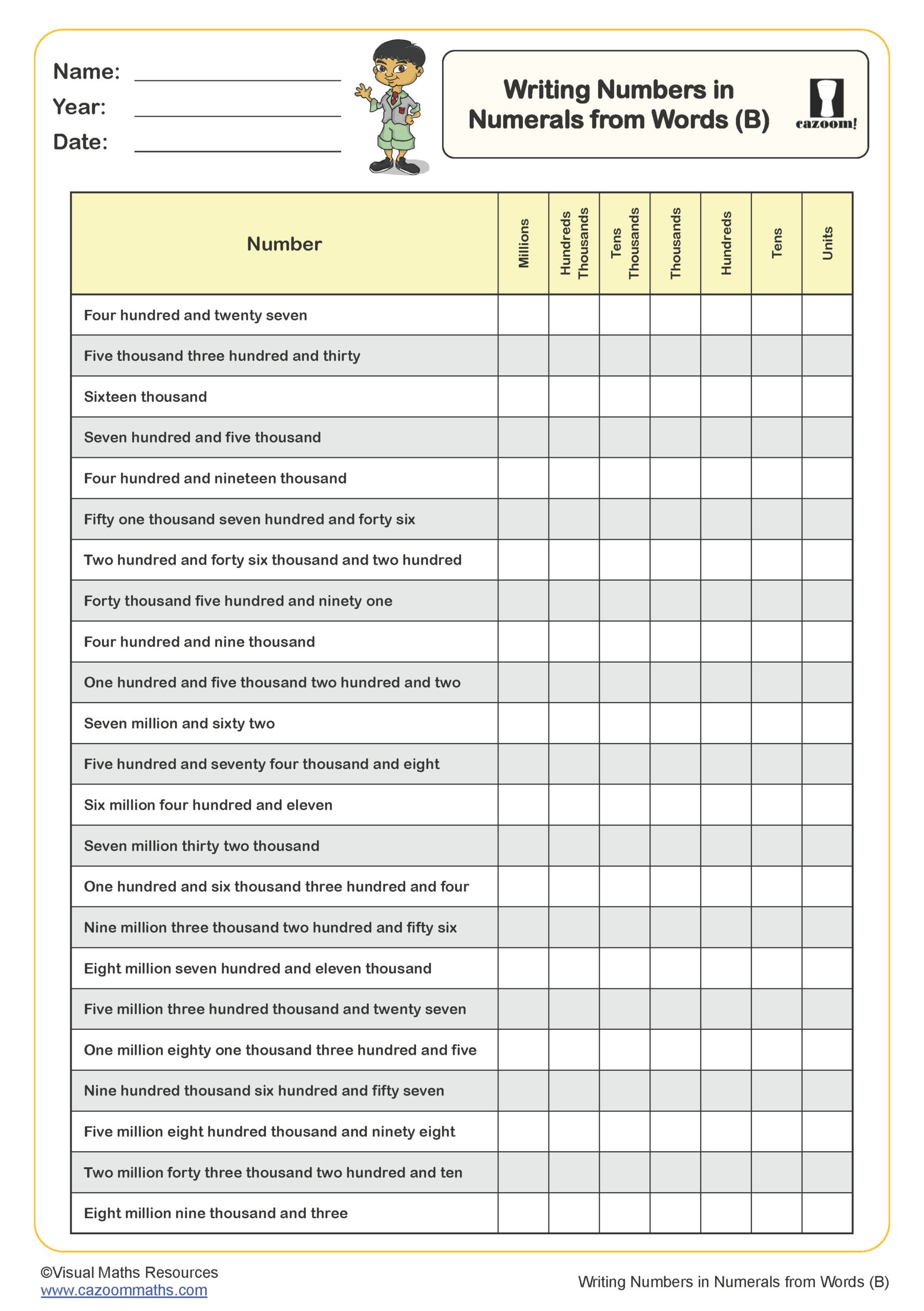
PRINTABLE PDF NUMBER AND PLACE VALUE WORKSHEETS WITH ANSWERS
Check out our downloadable Place Value Worksheets which will help your students learn about the basic mathematical equations related to numbers and place value. Topics covered in these maths worksheets include comparing numbers, counting in a maze, digit values, decimal places, counting forward and backwards, and skip counting. They will also learn about place value, partitioning numbers, digit groups, comparing and ordering positive and negative numbers, Roman Numbers, etc. These worksheets are created in easy-to-download PDF format, include answers, and are designed to help young learners better understand and practise their number skills. These worksheets are excellent resources for learning maths that will make the learning process fun and interesting!
What Is Number And Place Value?
Numbers are fundamental symbols we use to represent quantities, order, or even identify objects. Each digit in a number has a specific value, determined by its position or “place” within the number. This concept is known as “place value”. For instance, in the number 432, the digit 4 represents 400, not just 4, because it’s in the hundreds place. Similarly, 3 is in the tens place, representing 30, and 2 stands for two units. Understanding place value is crucial as it forms the backbone of our numerical system, allowing us to comprehend, write, and work with large numbers efficiently.
The Importance of Learning Number And Place Value
A solid understanding of numbers and place value is the cornerstone of maths at KS1 and KS2. It helps students build a strong foundation in mathematics. Place value helps students understand how numbers are structured and makes addition, subtraction, multiplication, and division easier. Another great thing about it is that it also plays a part in working with decimals and fractions. Beyond basic maths, knowing numbers and their place values is necessary for everyday life things like counting money, telling time, and measuring things. Essentially, if you know this stuff then you can tackle any maths problem and it also helps to handle real-world situations effectively.
Use of Number And Place Value In Real Life
It’s really important that we know the value of numbers and their place. It might not seem like much but it could be the difference between getting a deal or feeling like you’ve lost out. When we go to the supermarket, we look at how much something costs. If you compare £1.09 to £10.90, there’s quite a price gap. Now imagine if you didn’t know what place value was, you’d think those two items are equally priced and you’re fine with spending 10 pounds on a loaf of bread! This knowledge even helps us save money by tracking every penny we spend. But it goes beyond just saving money—what about everyday tasks? Something as simple as measuring distances would feel impossible without understanding place value too. We see this in baking when precise measurements need to be met or even just reading bus timetables to get us where we need to be on time in our day-to-day lives.